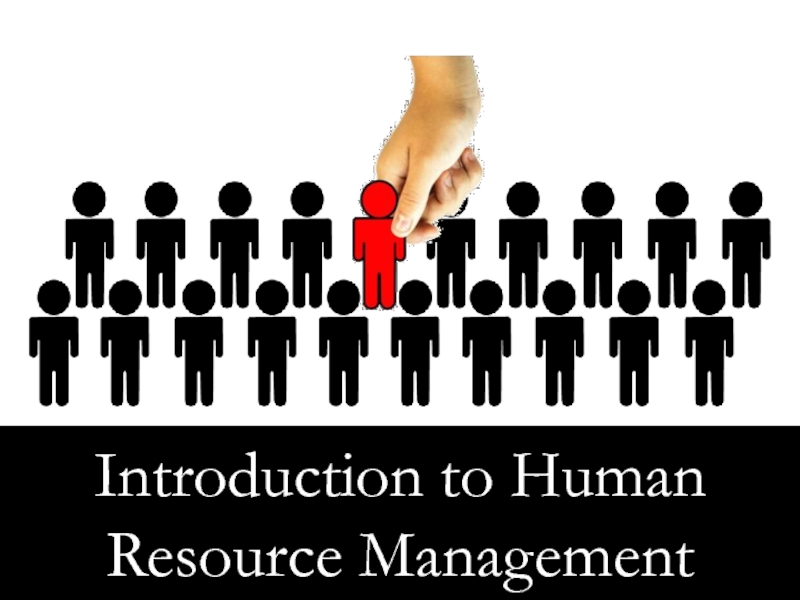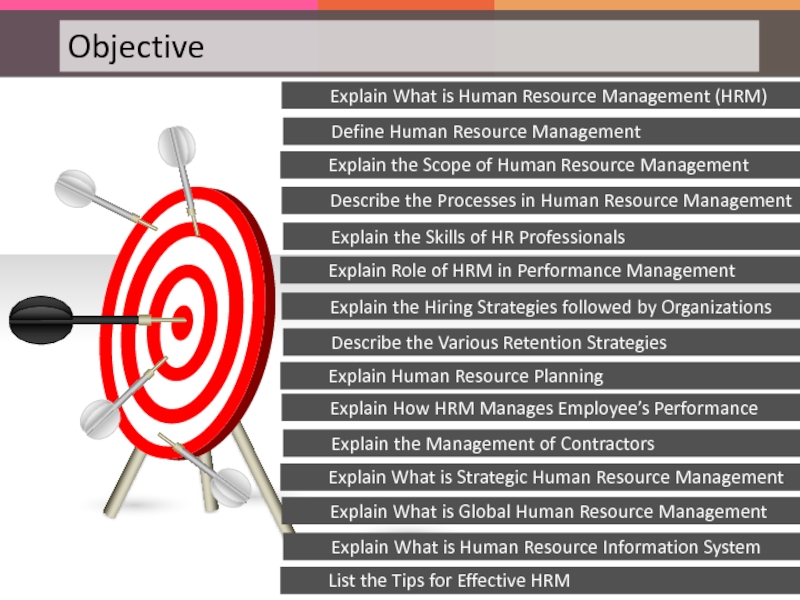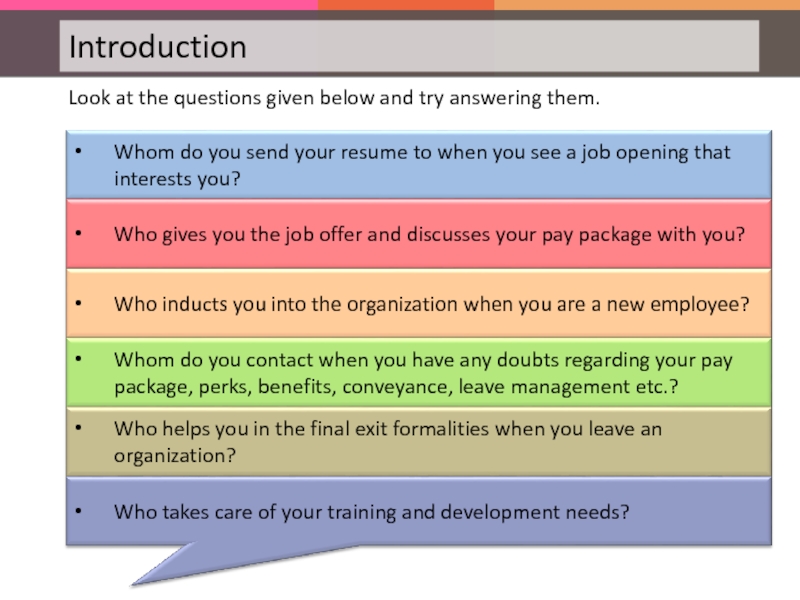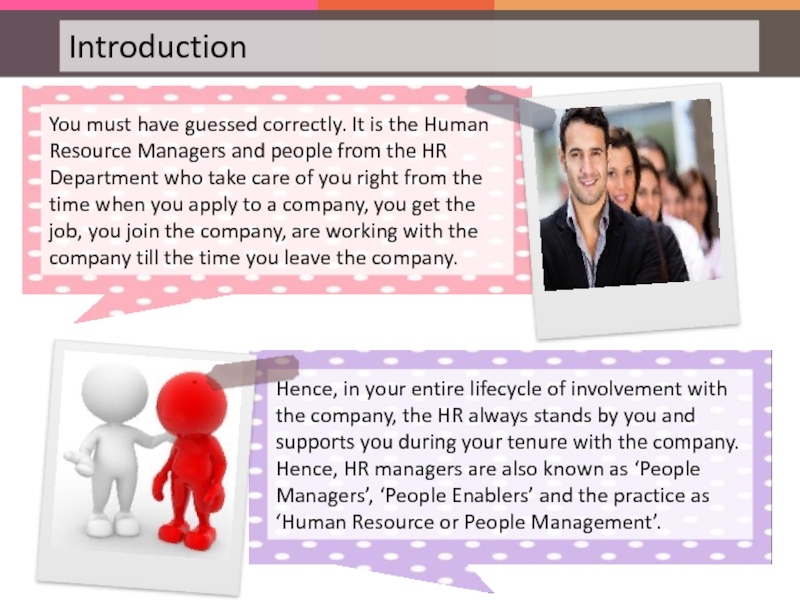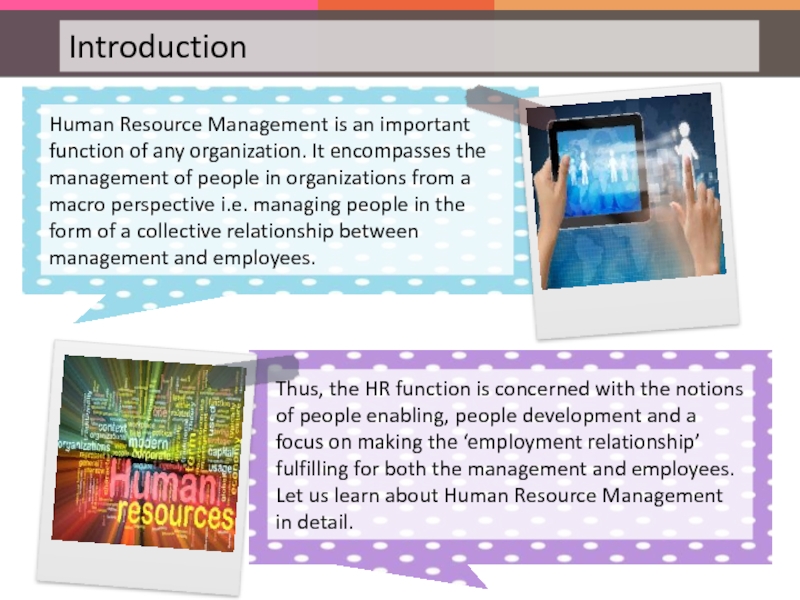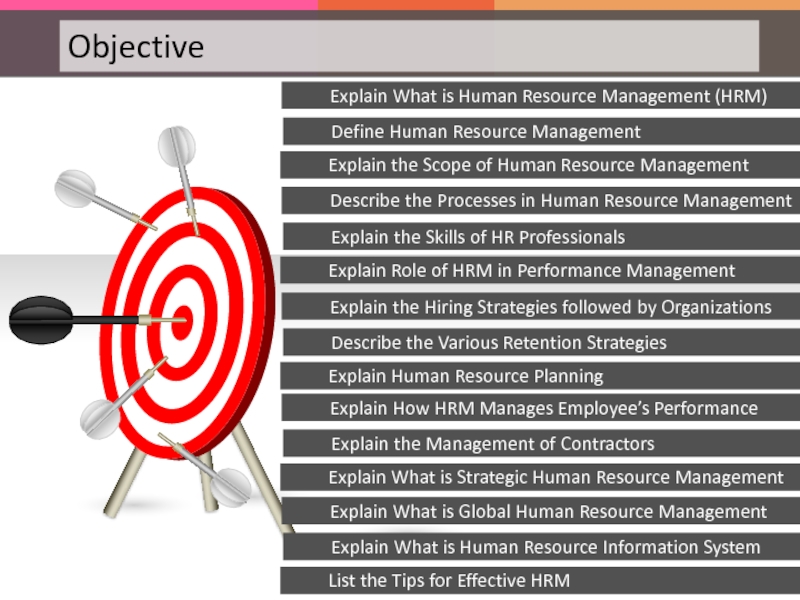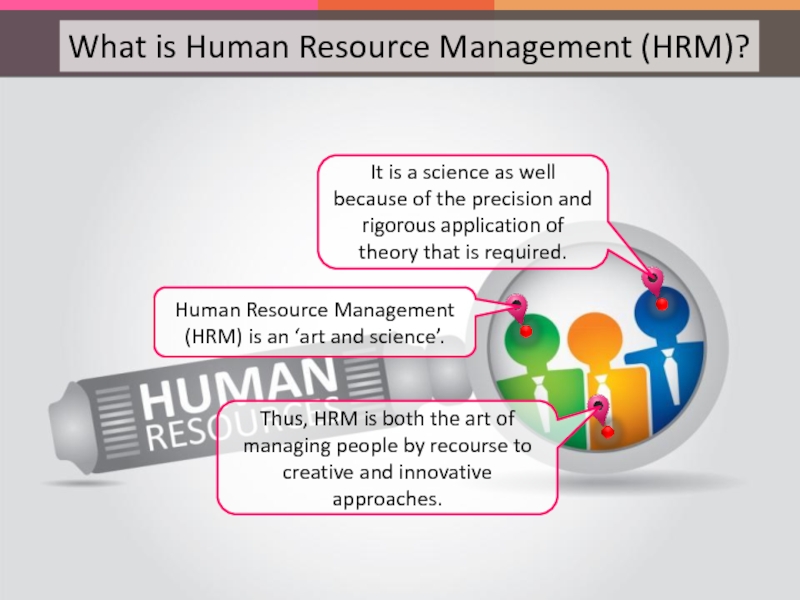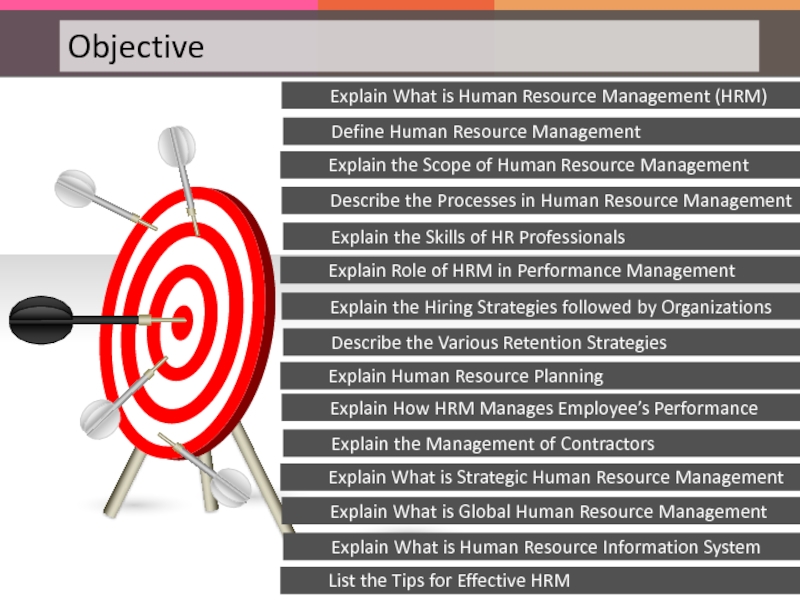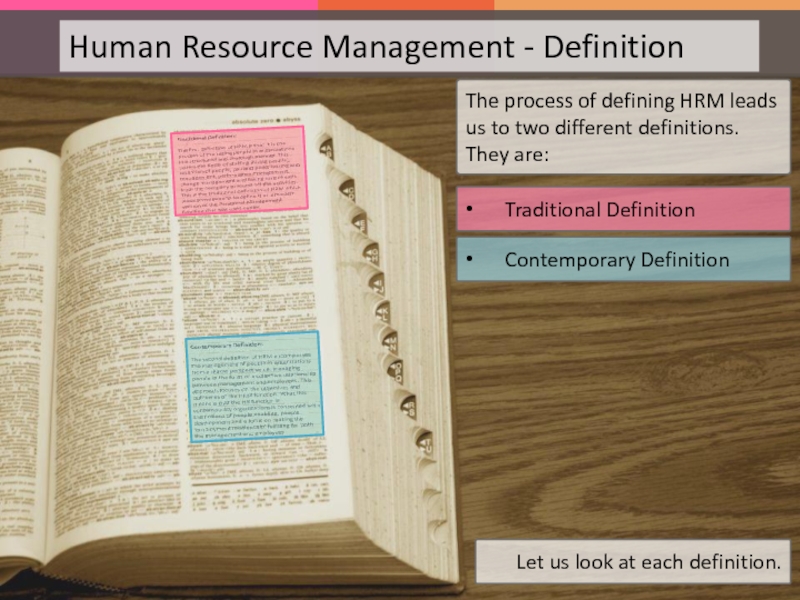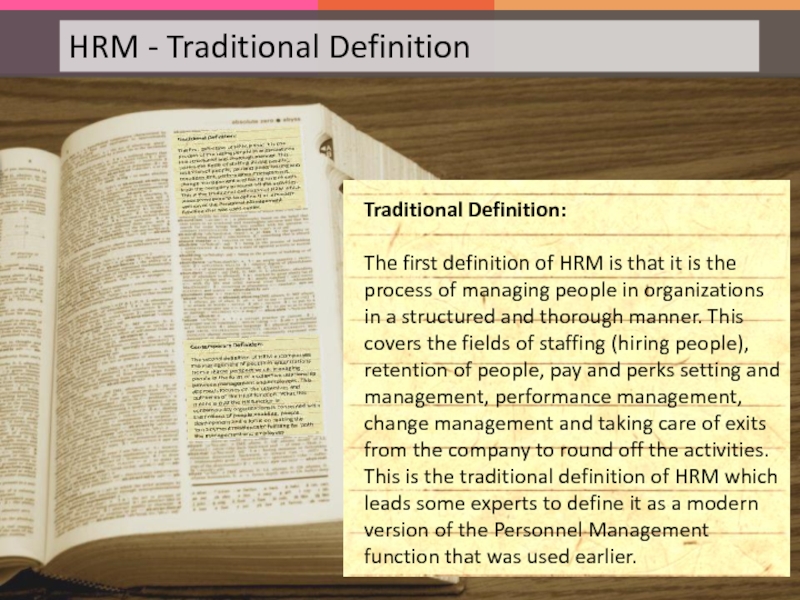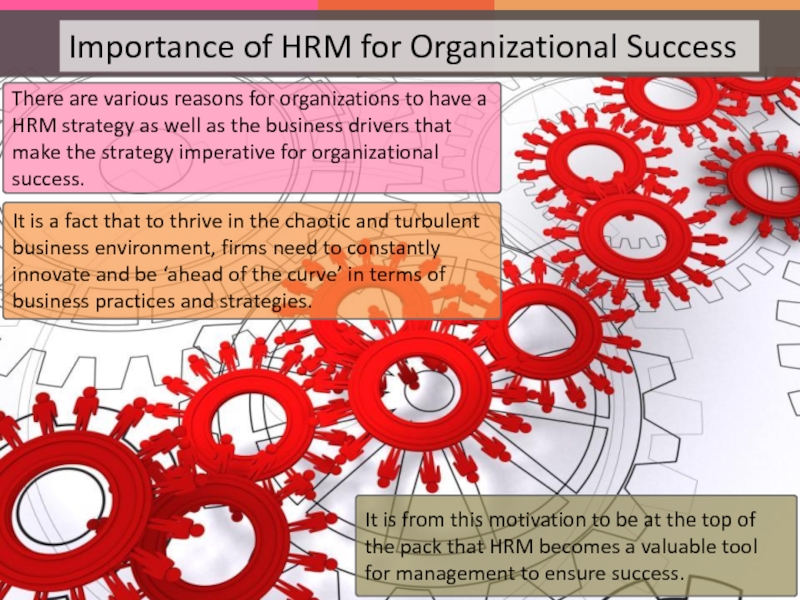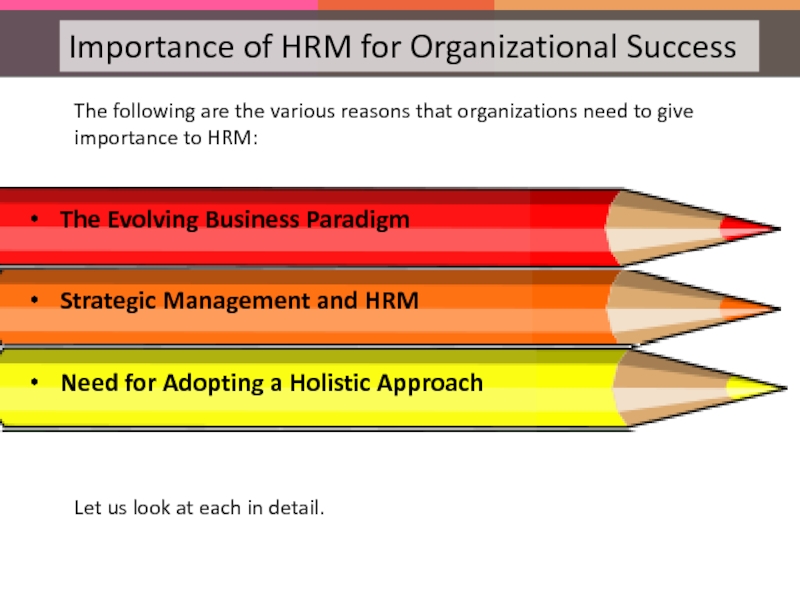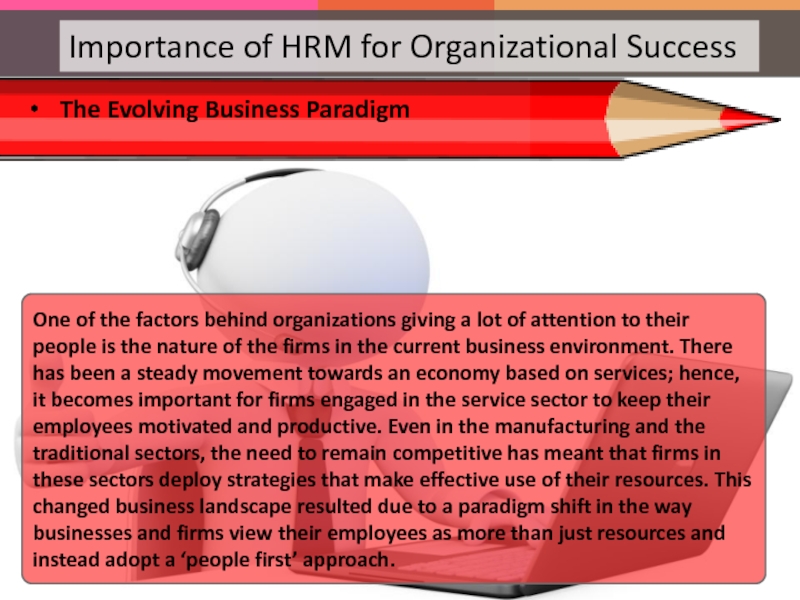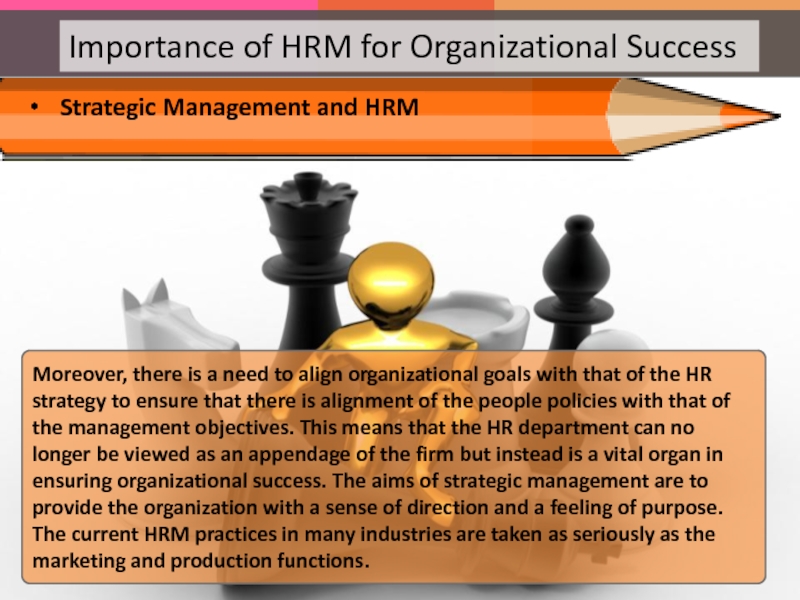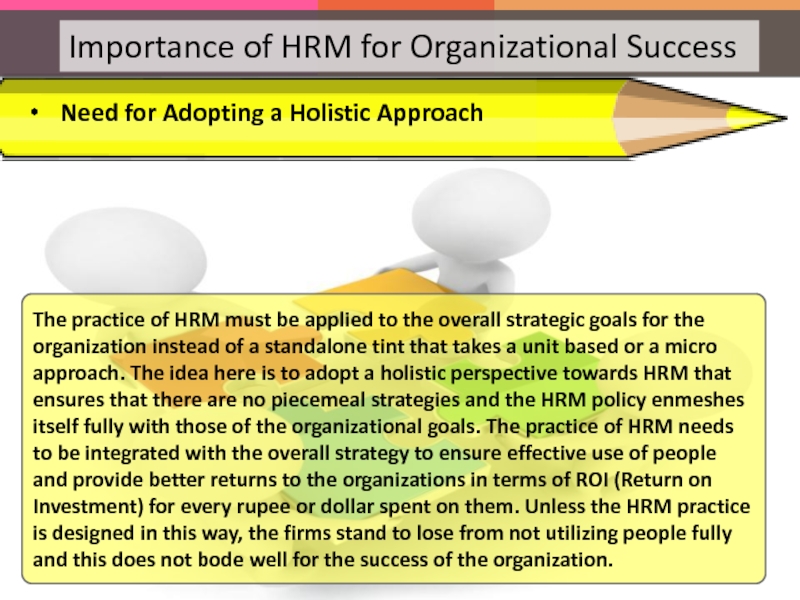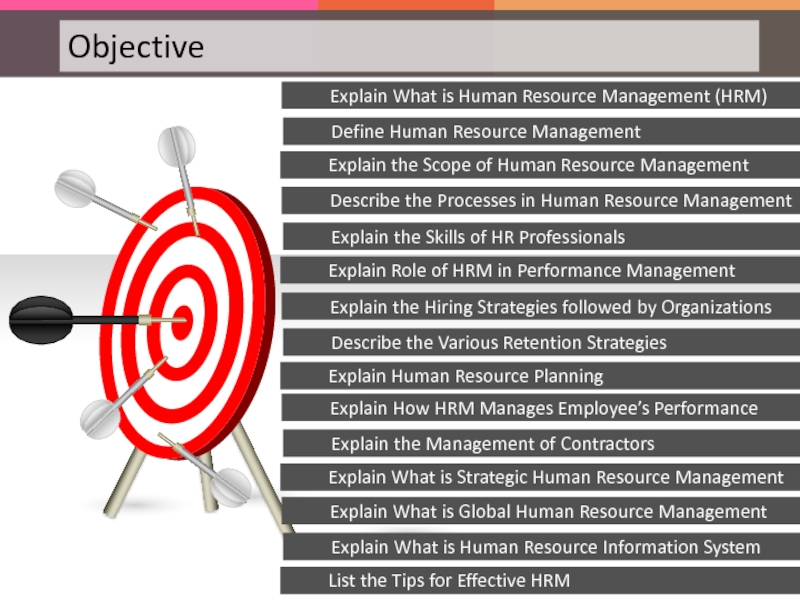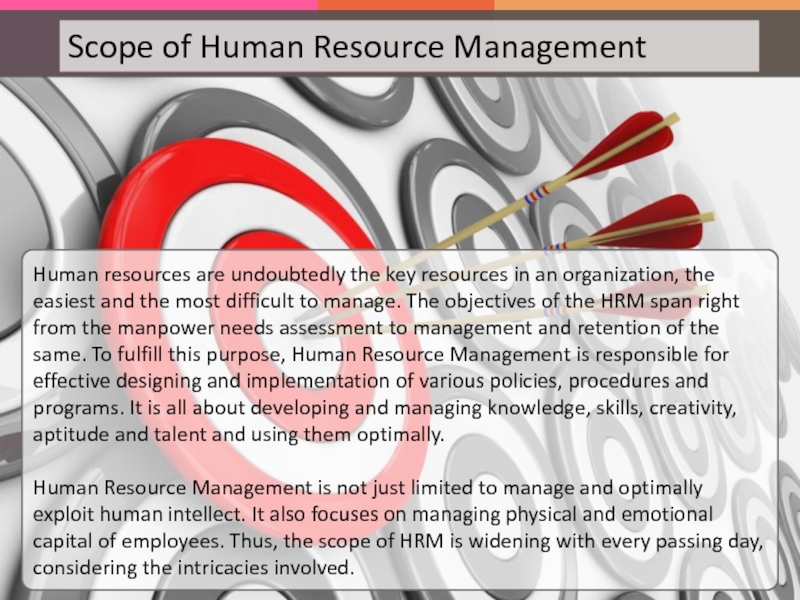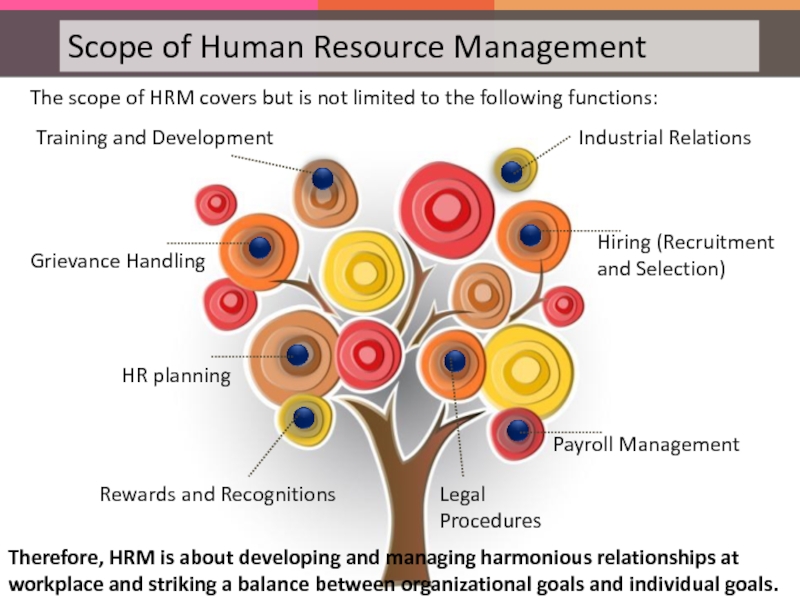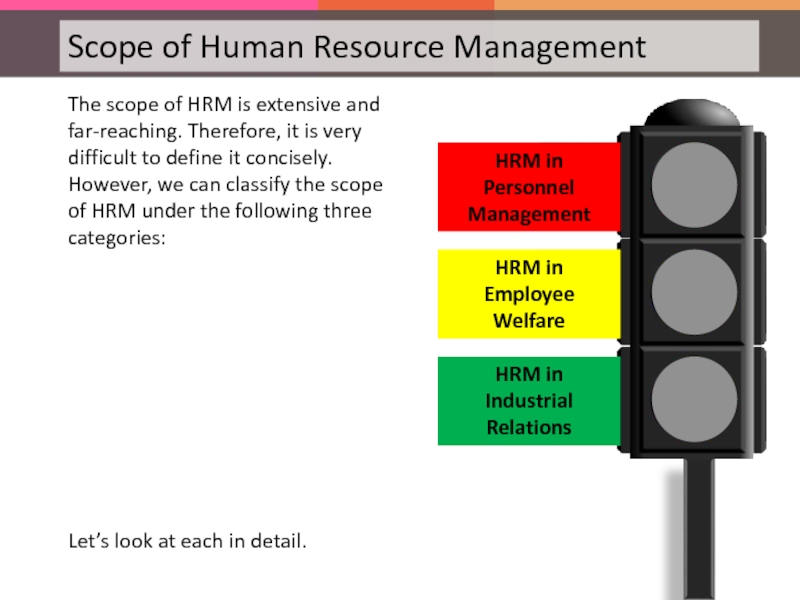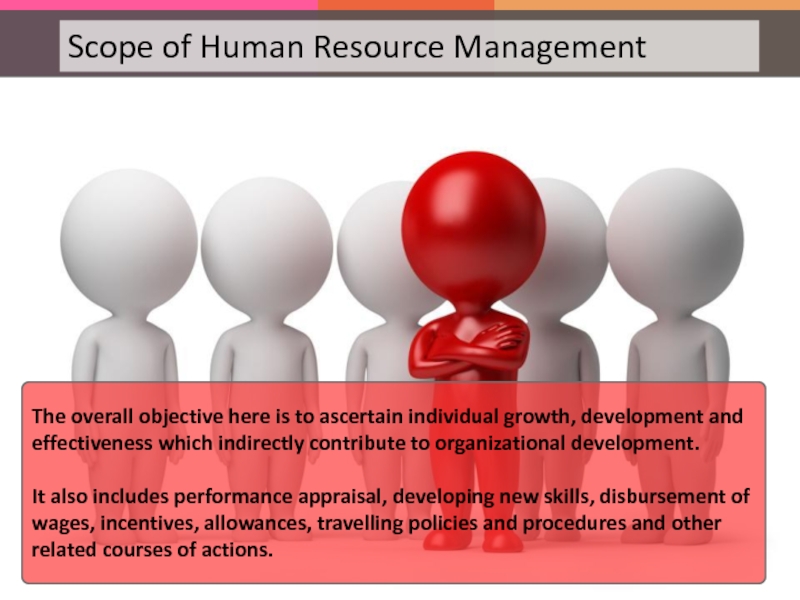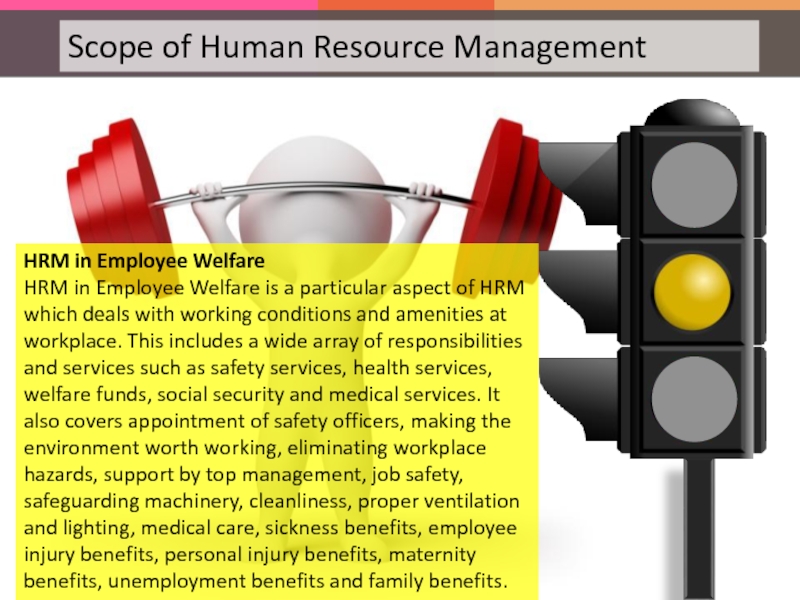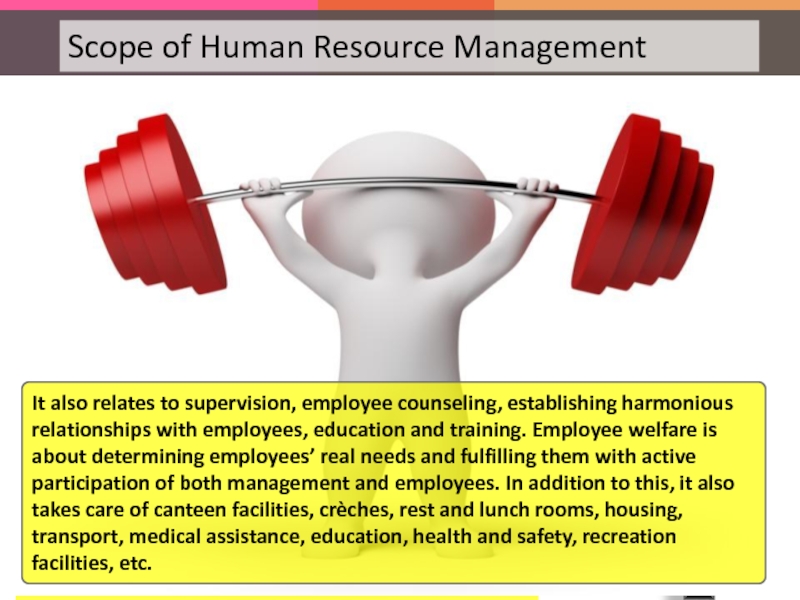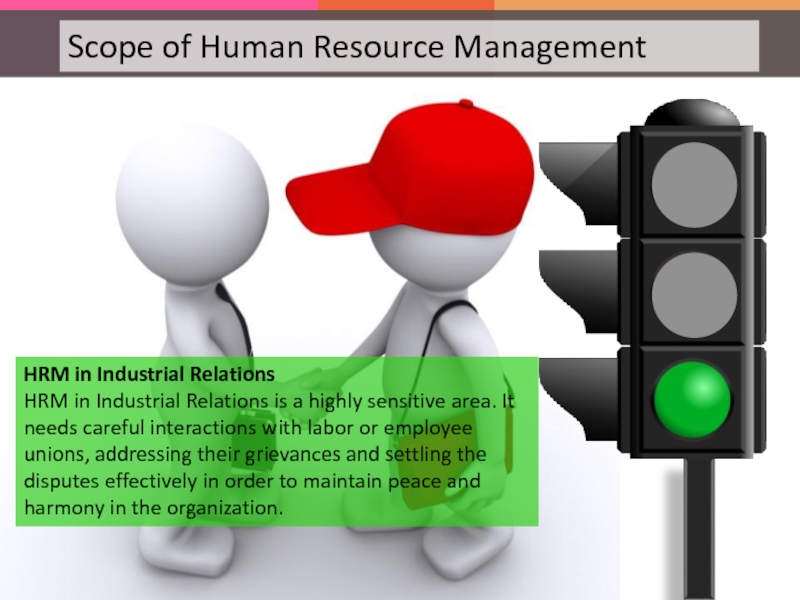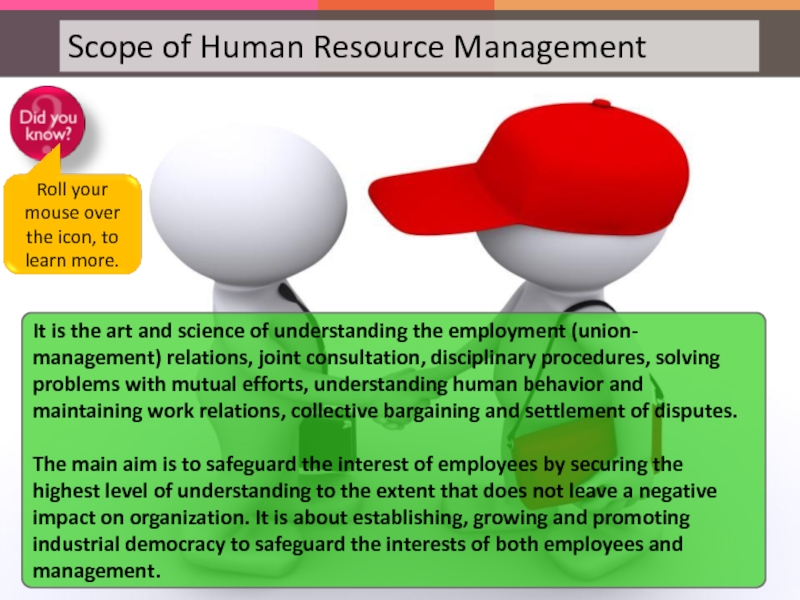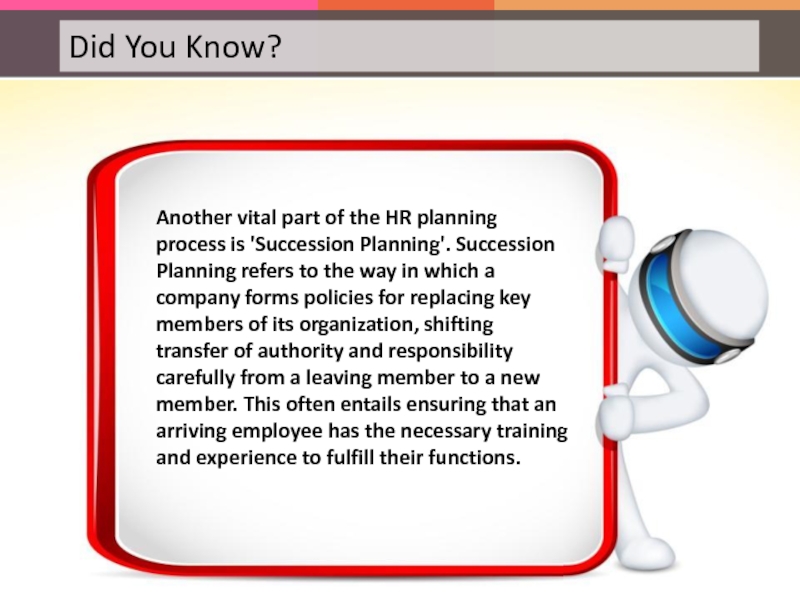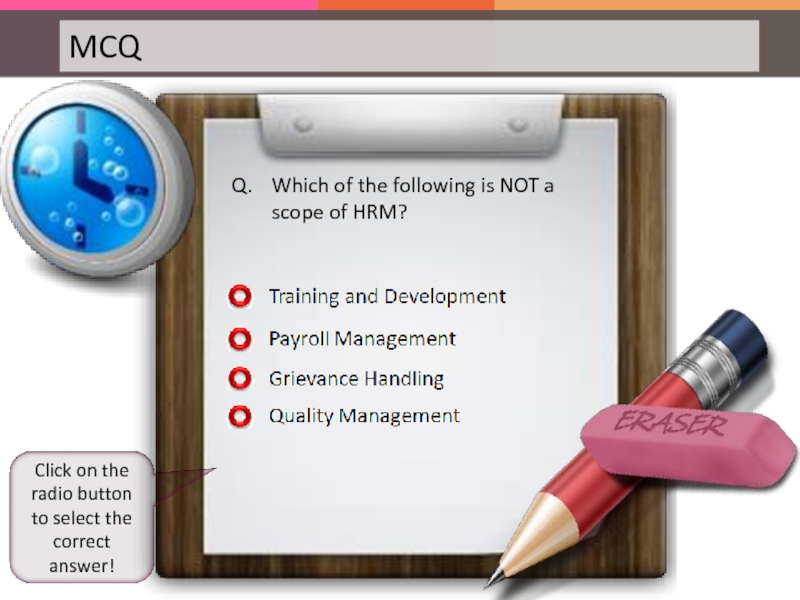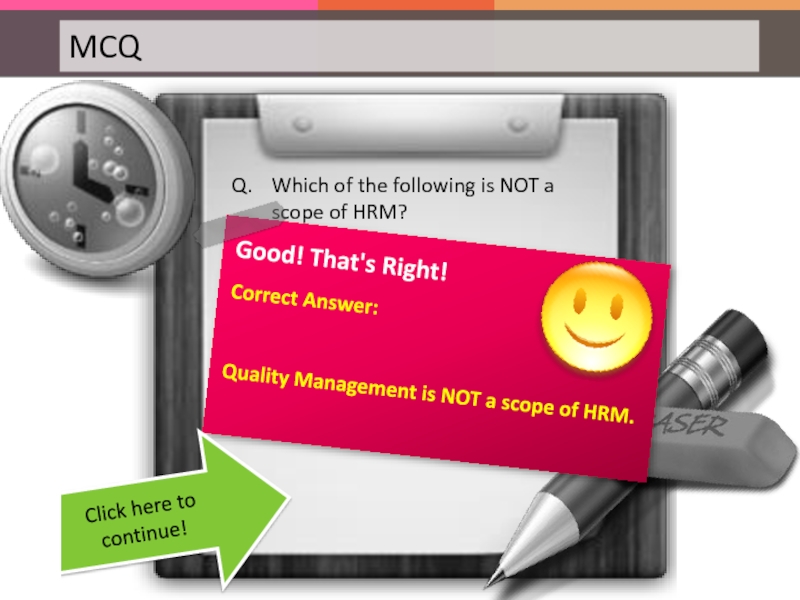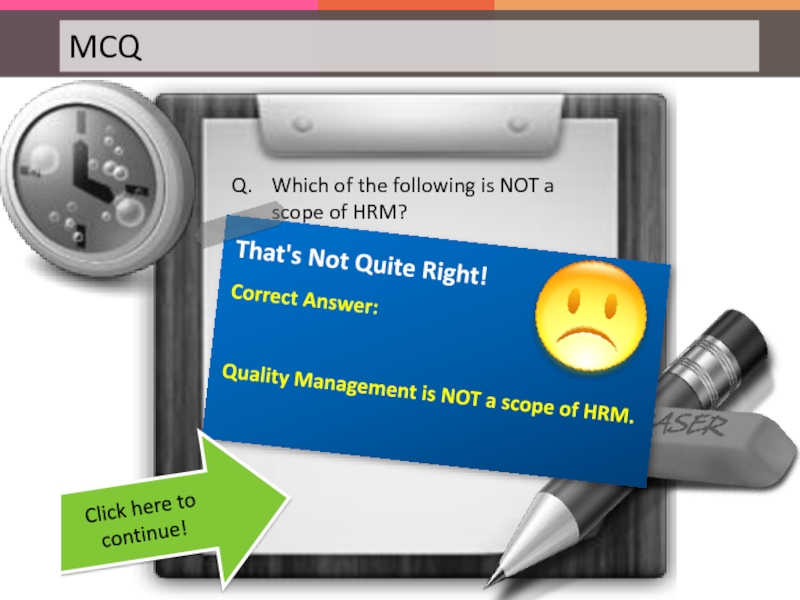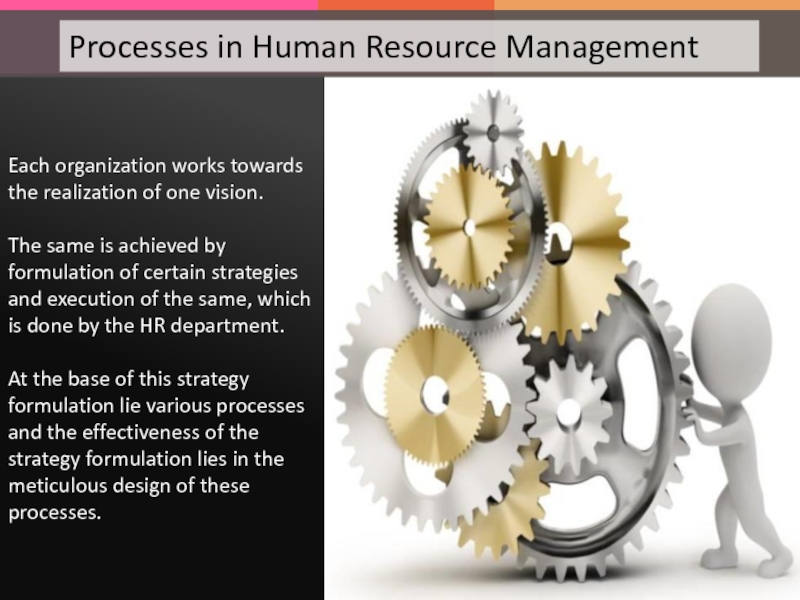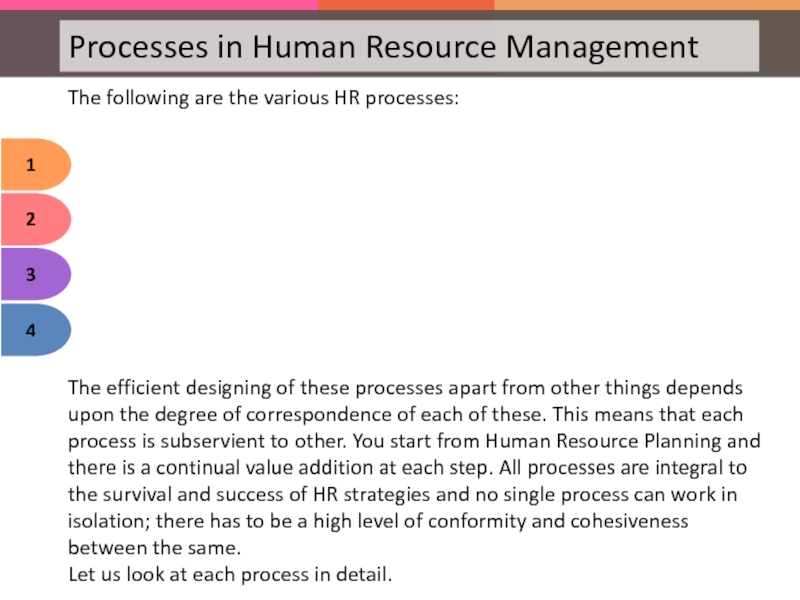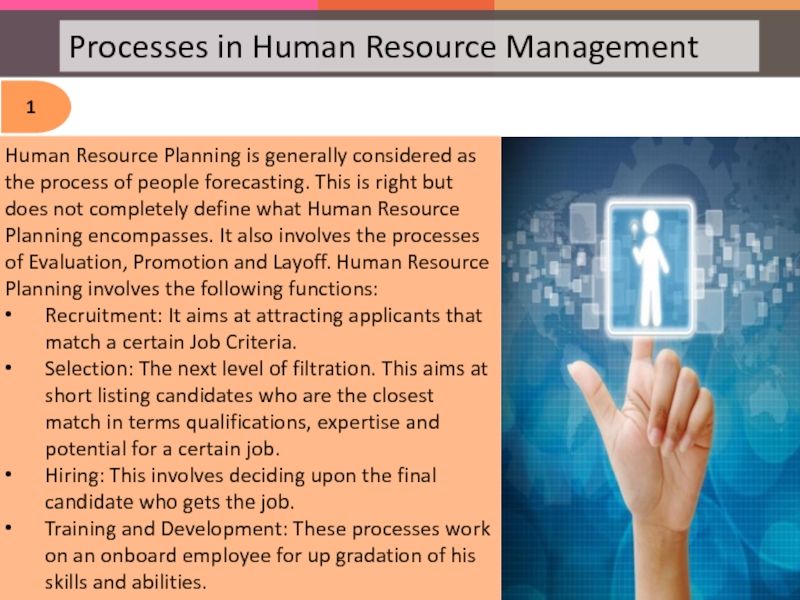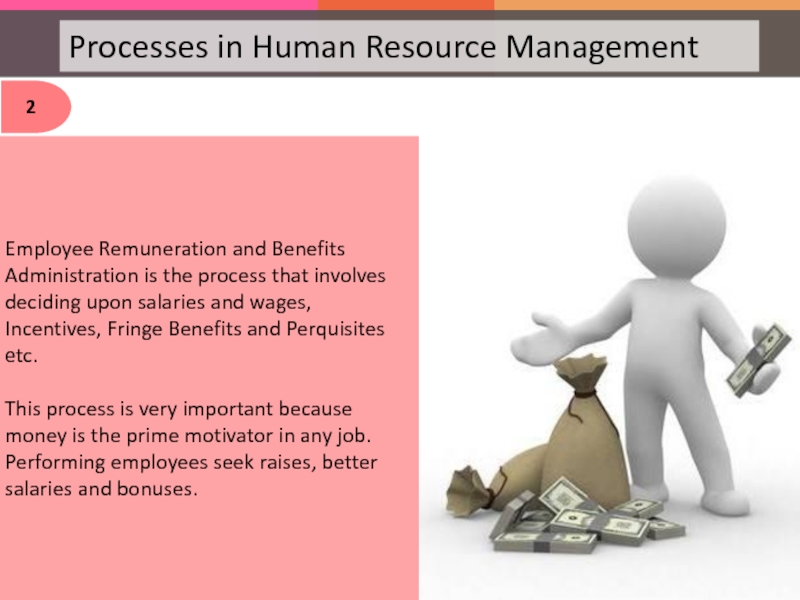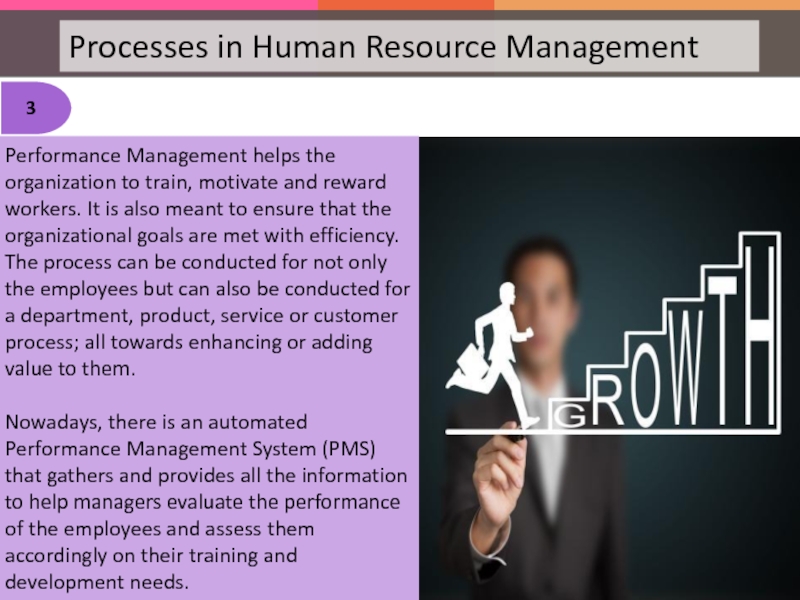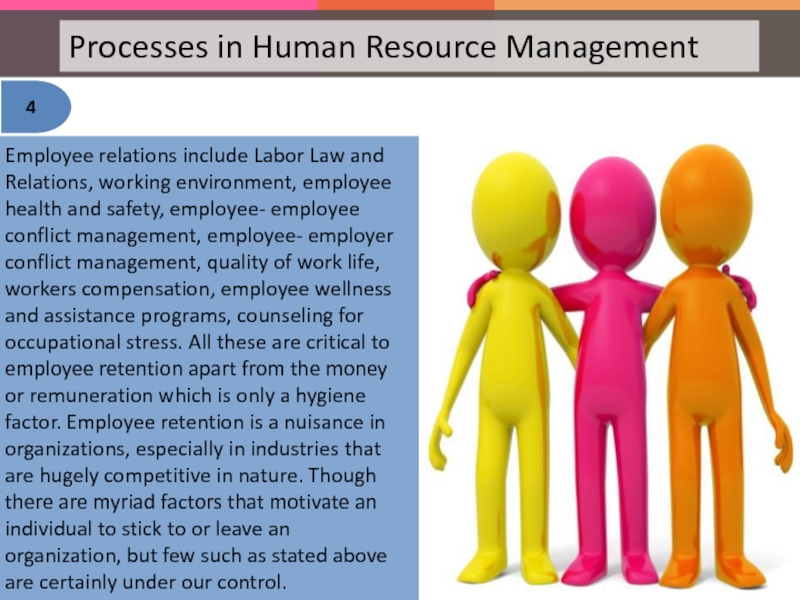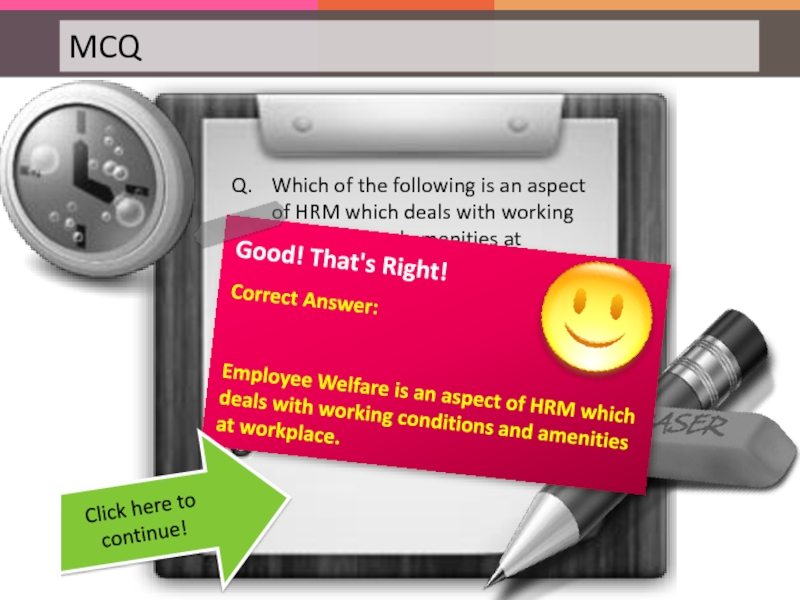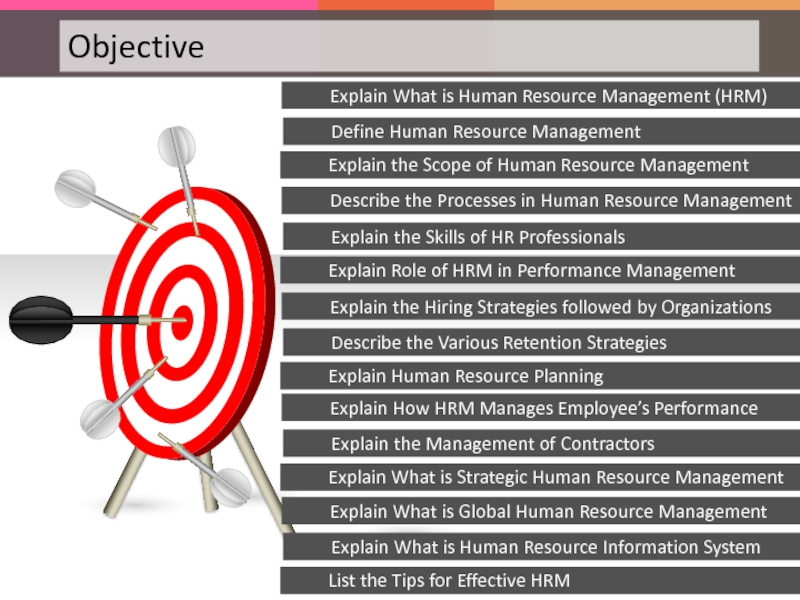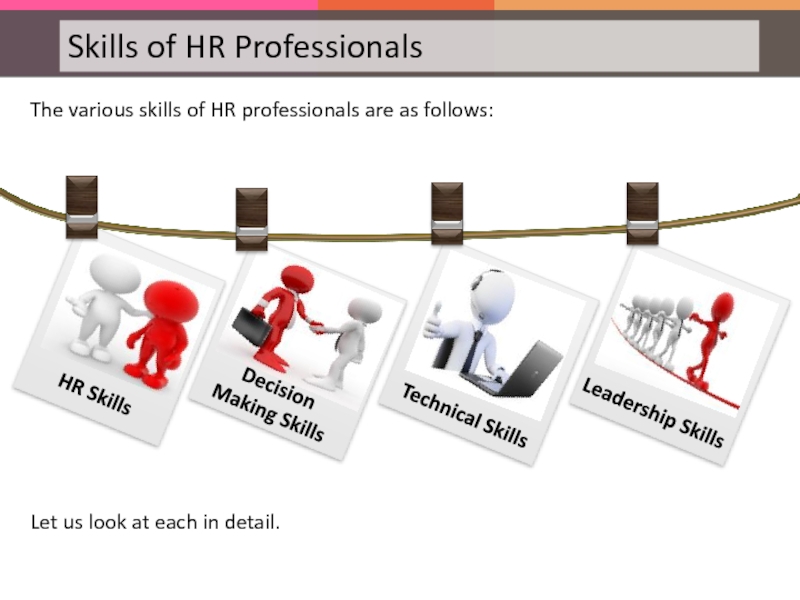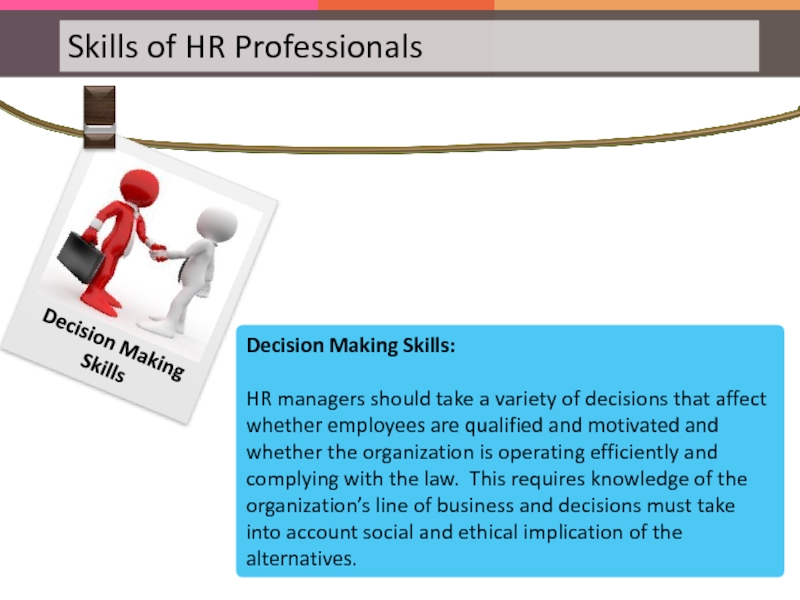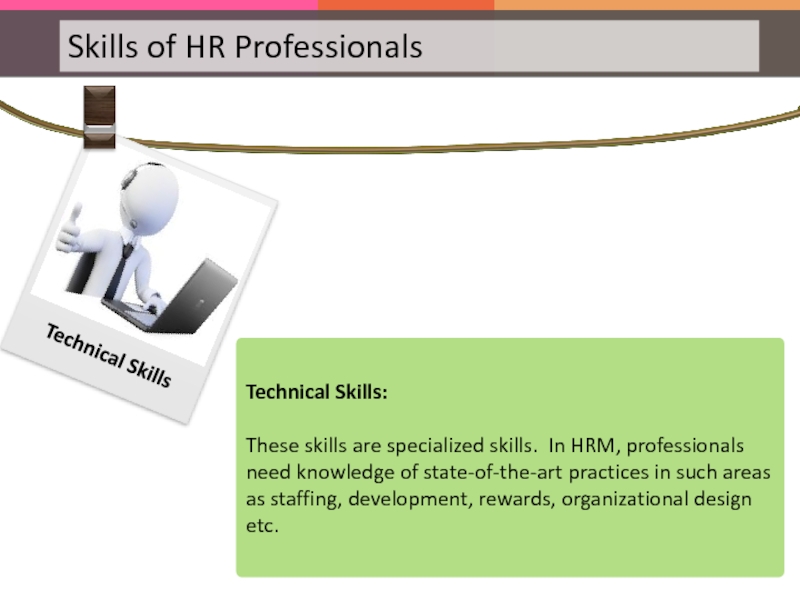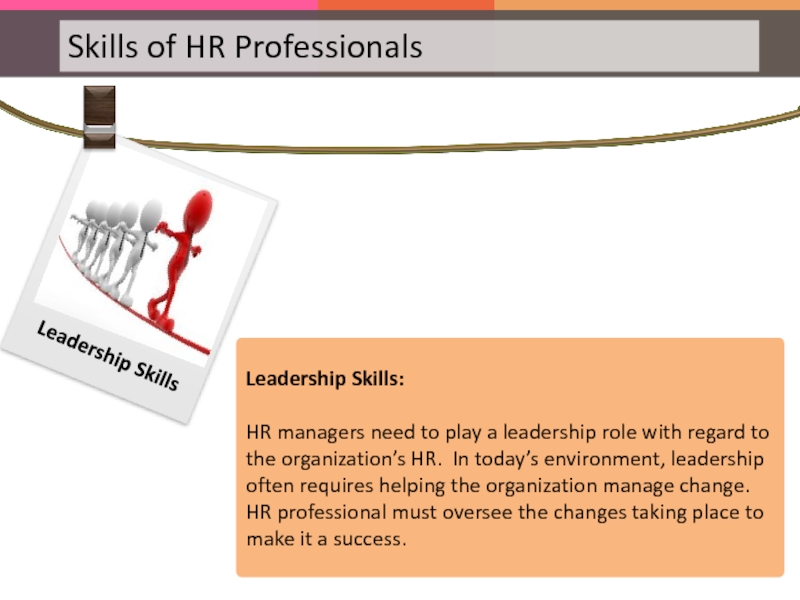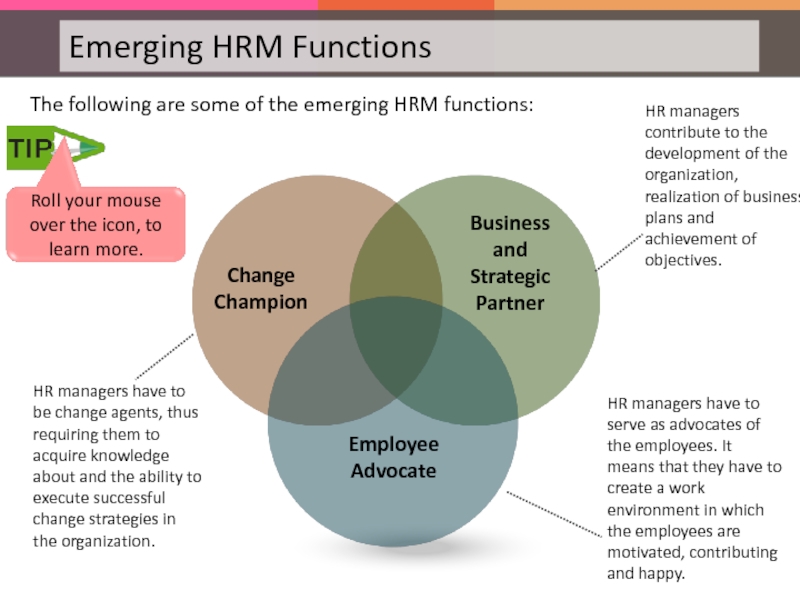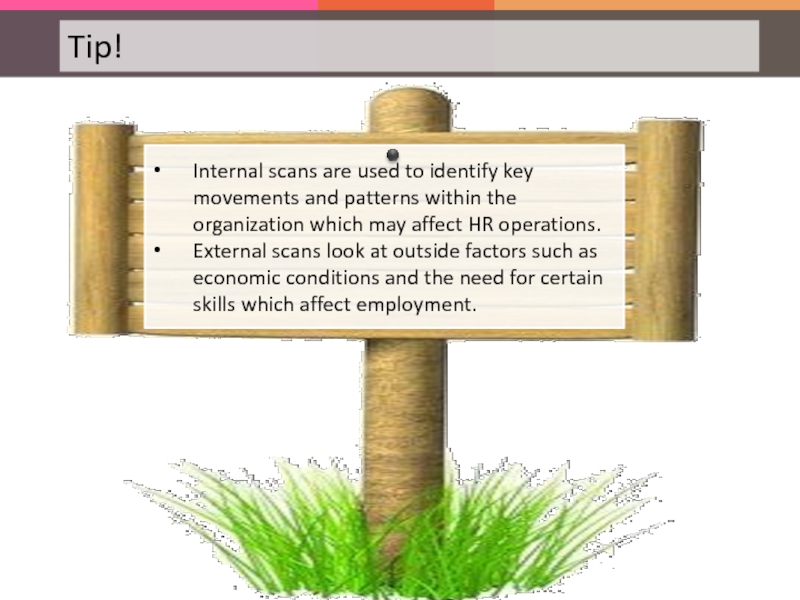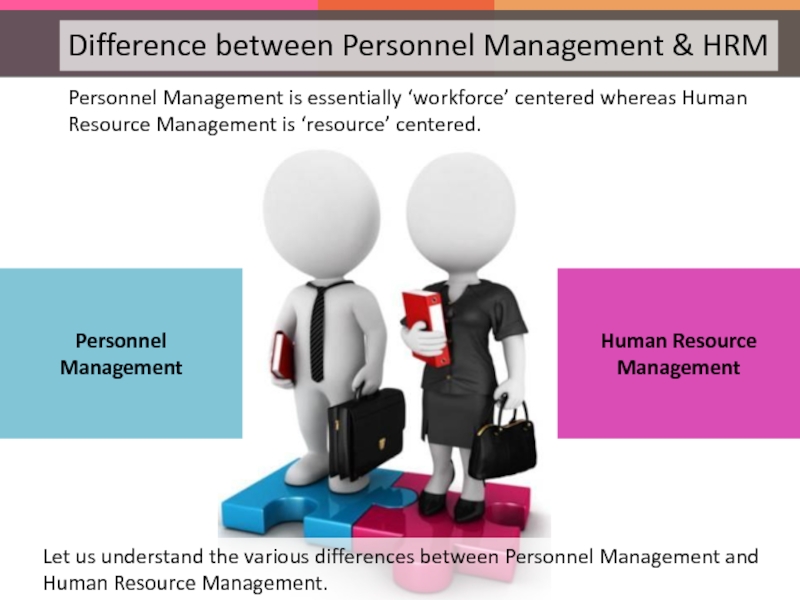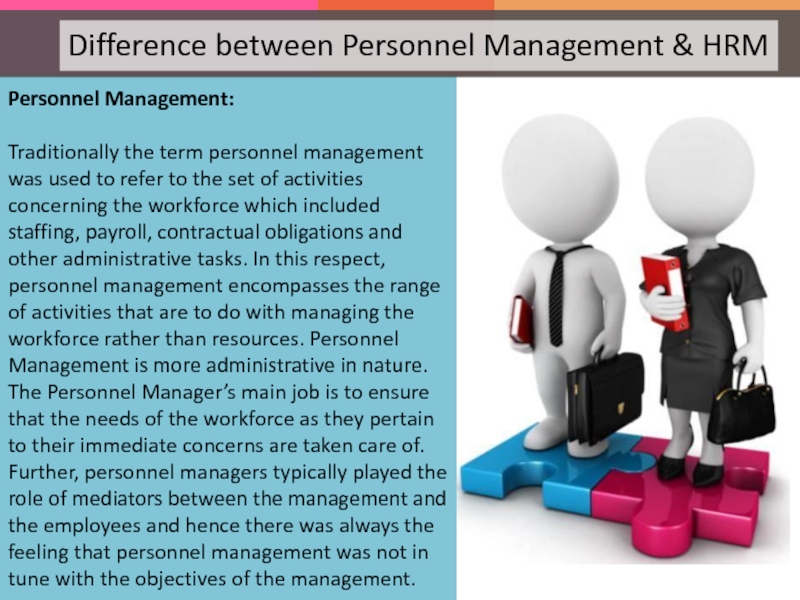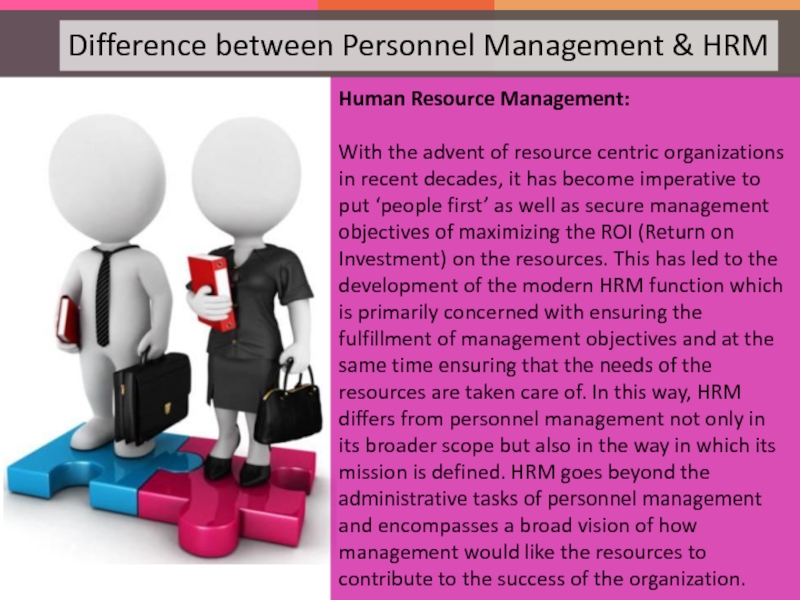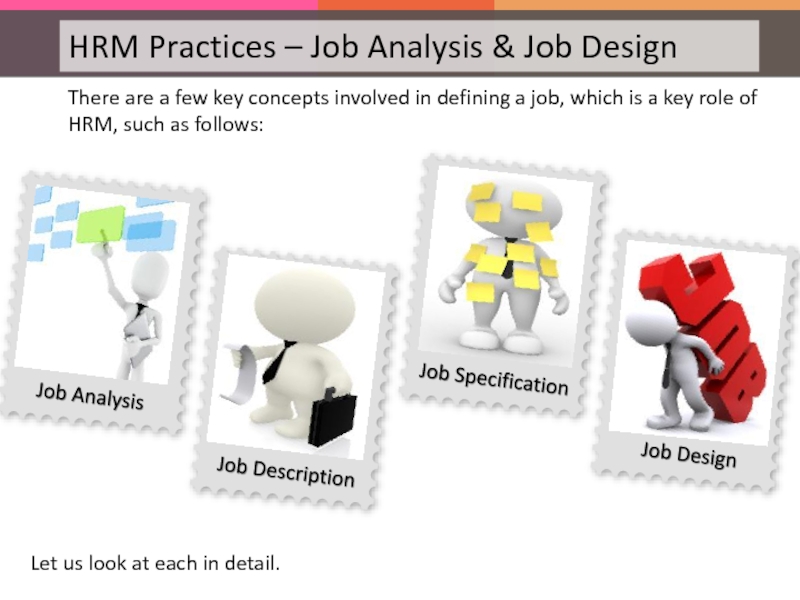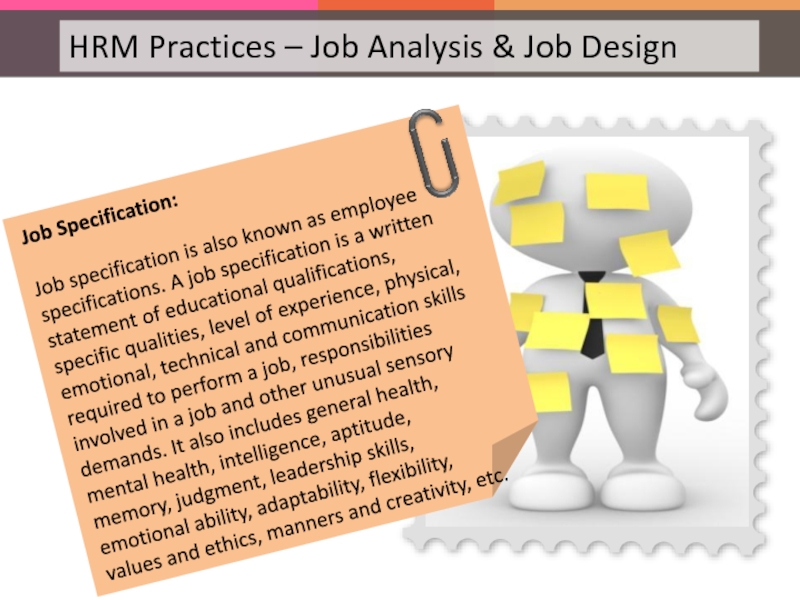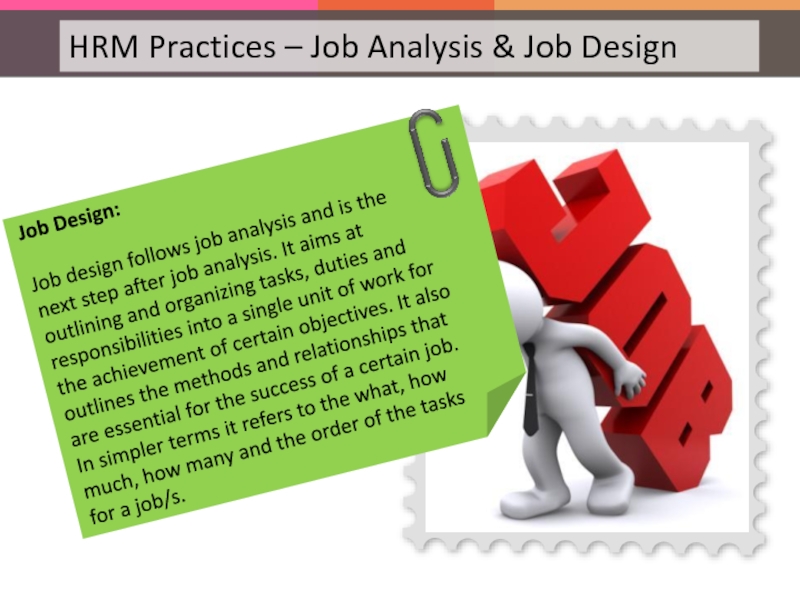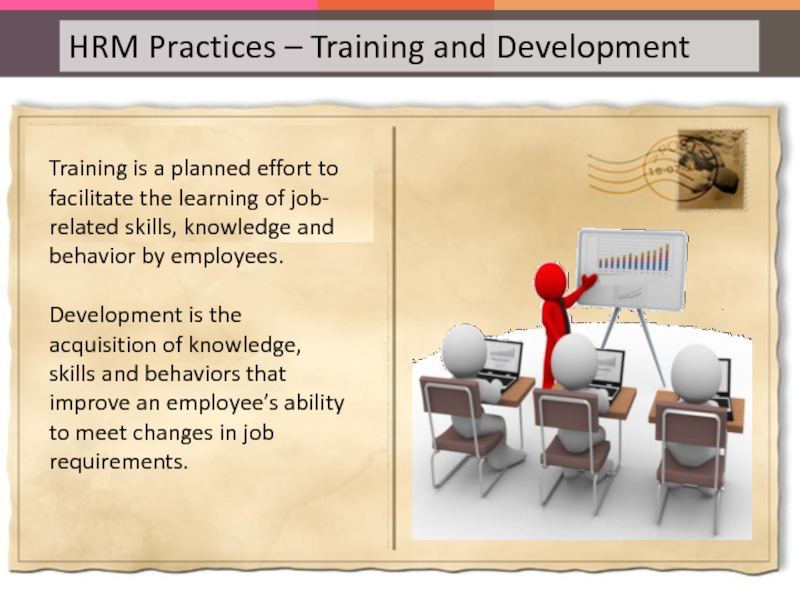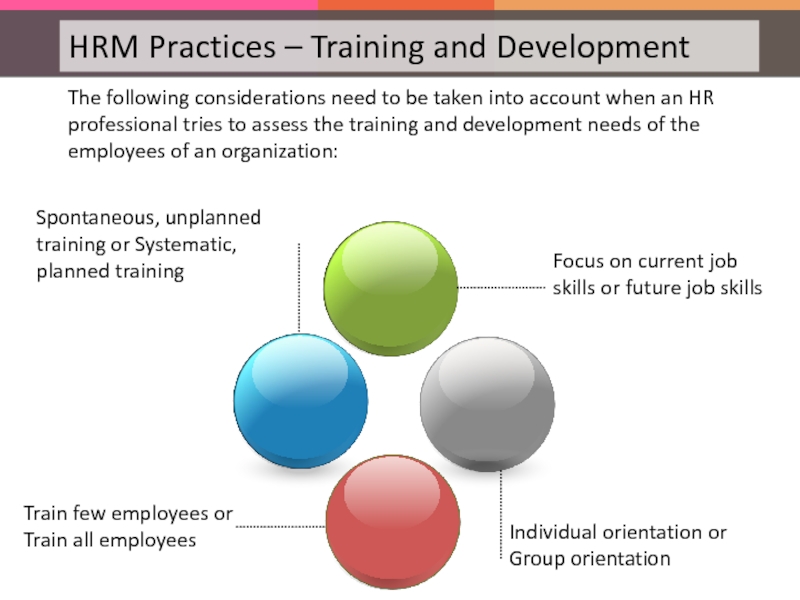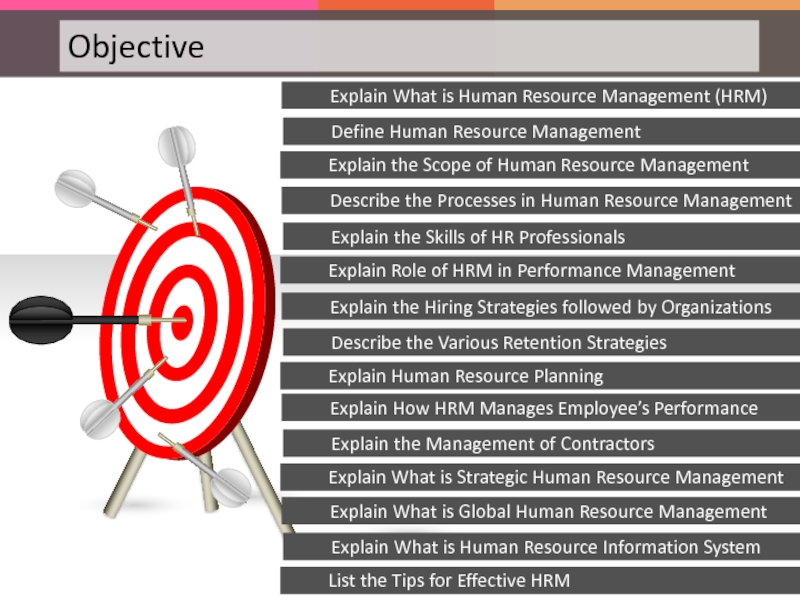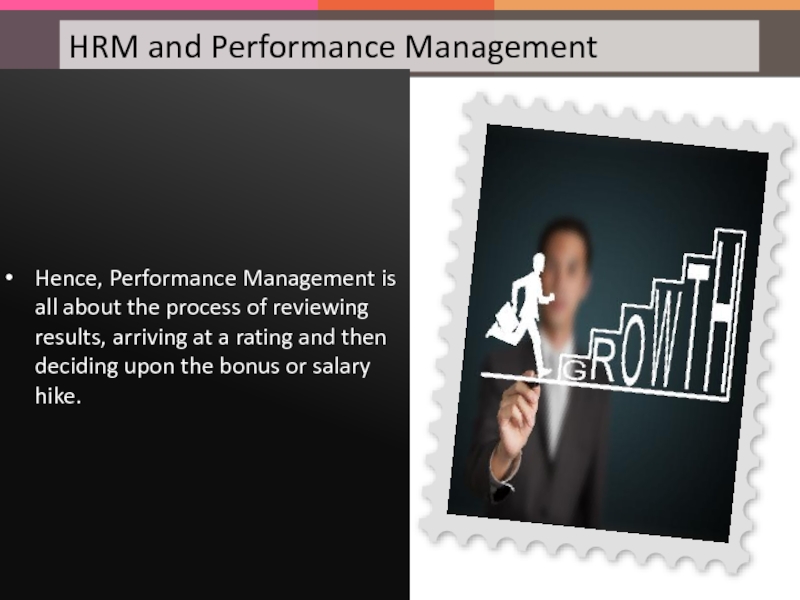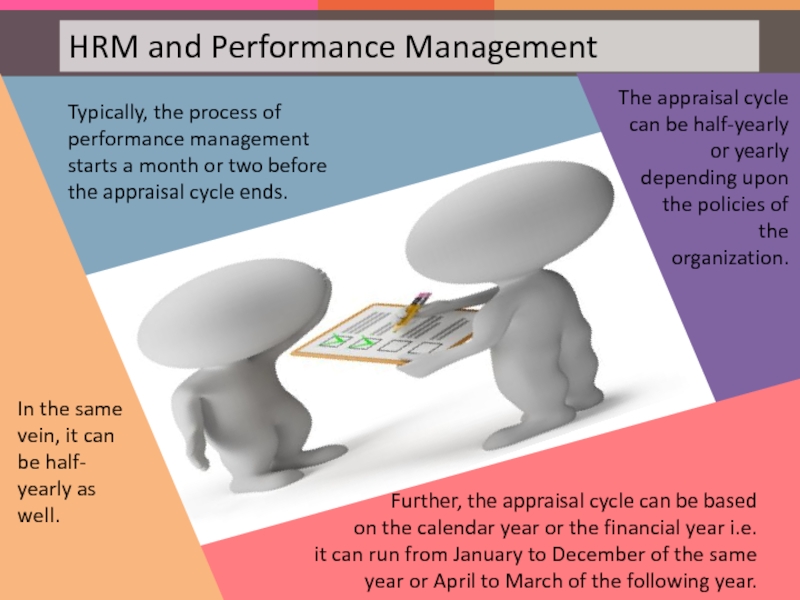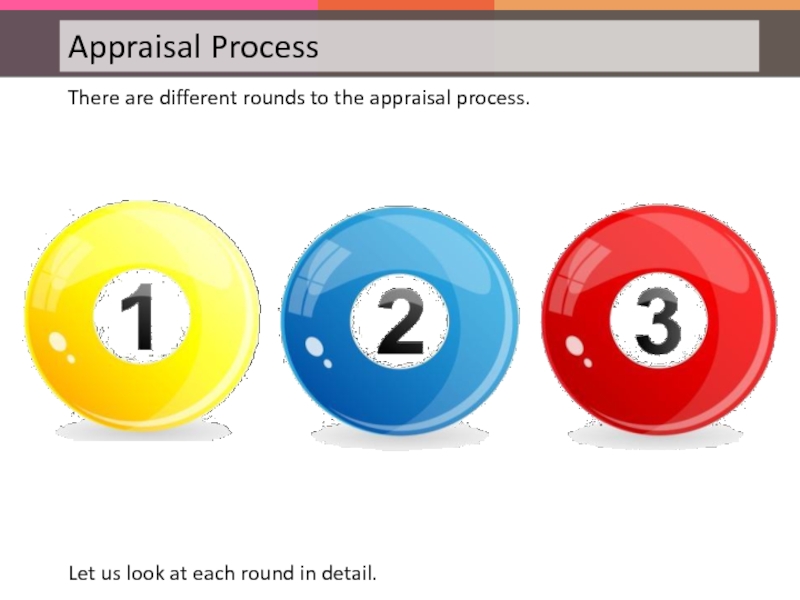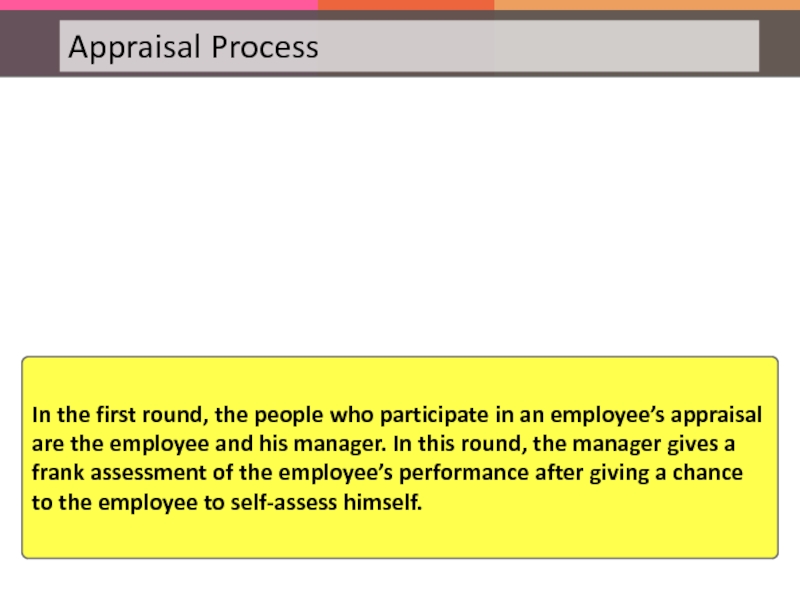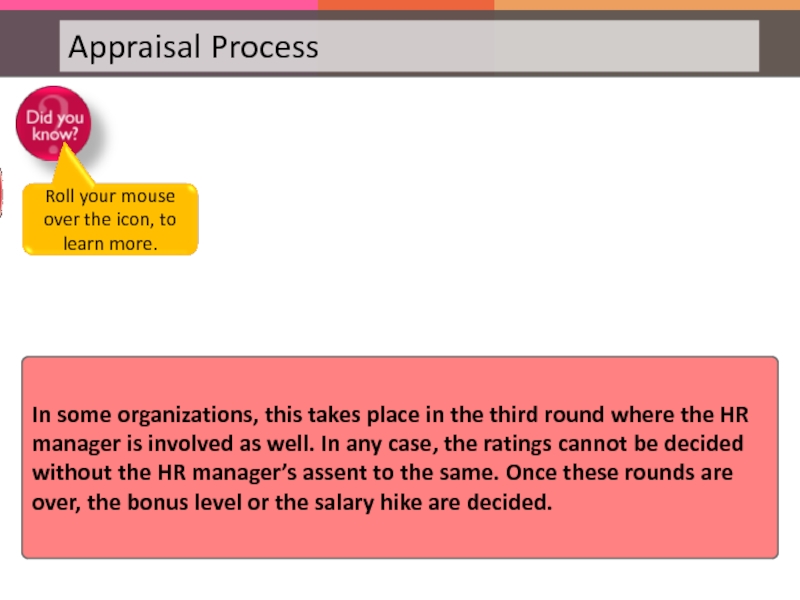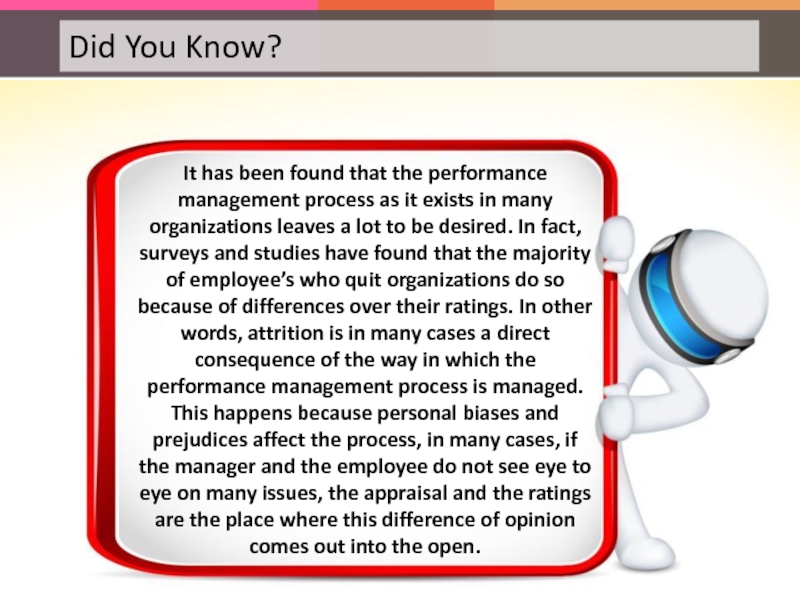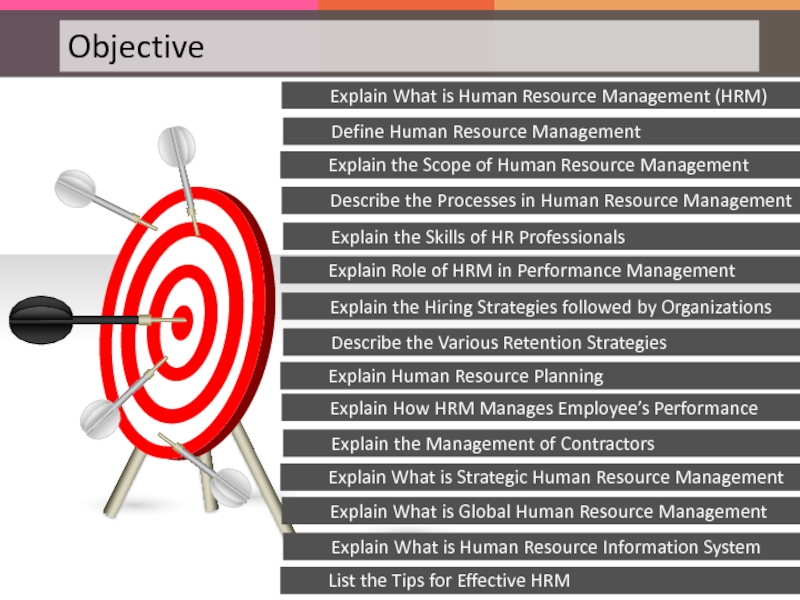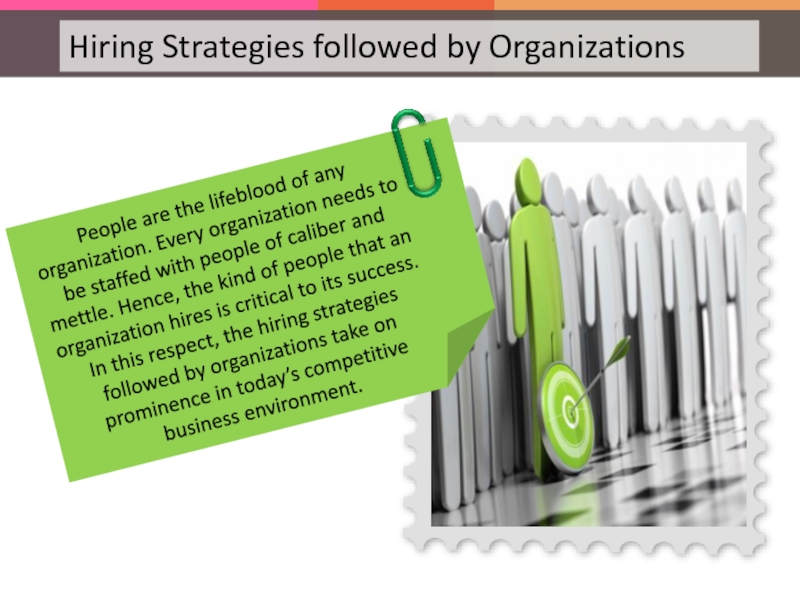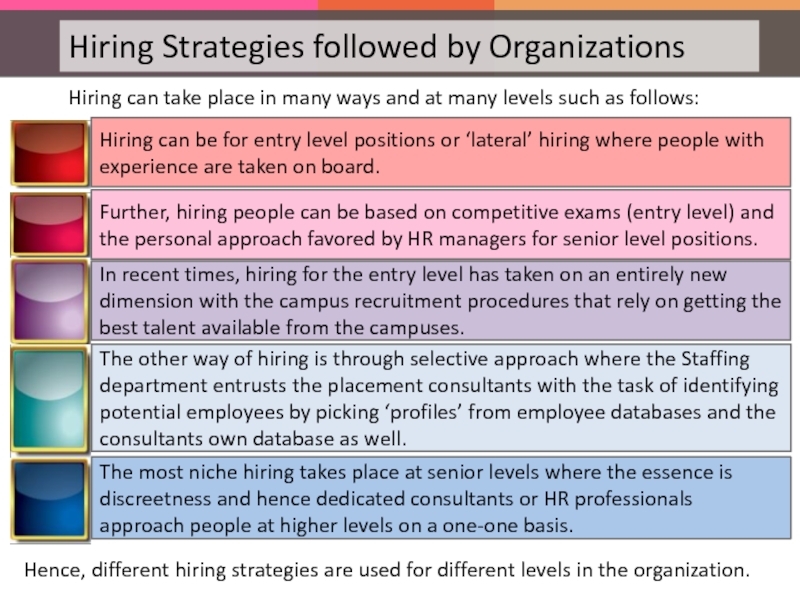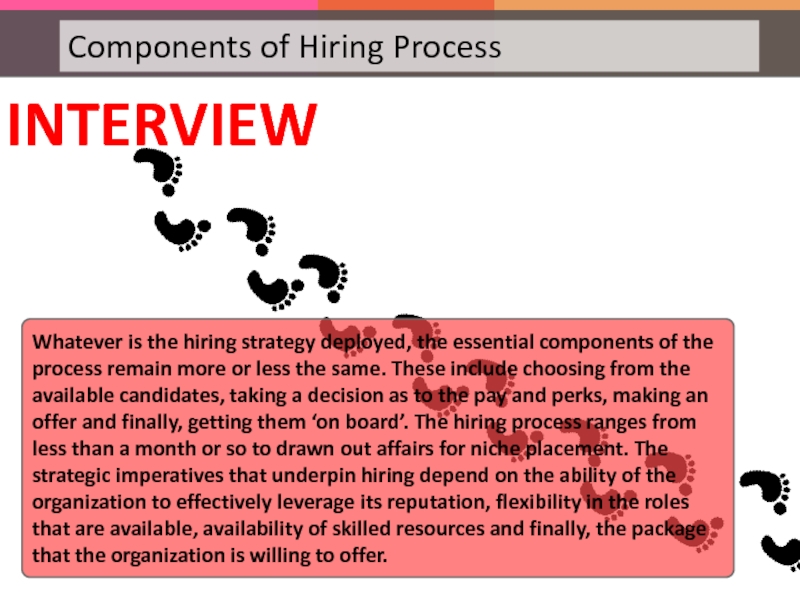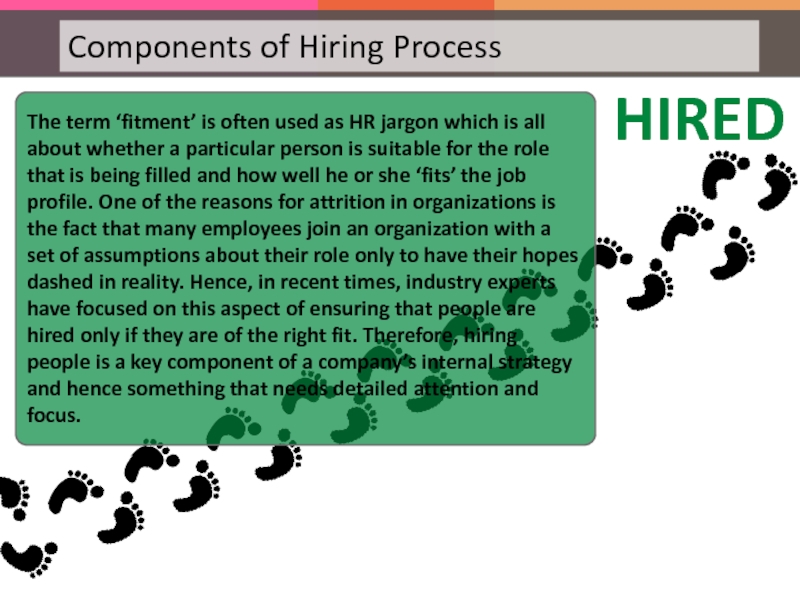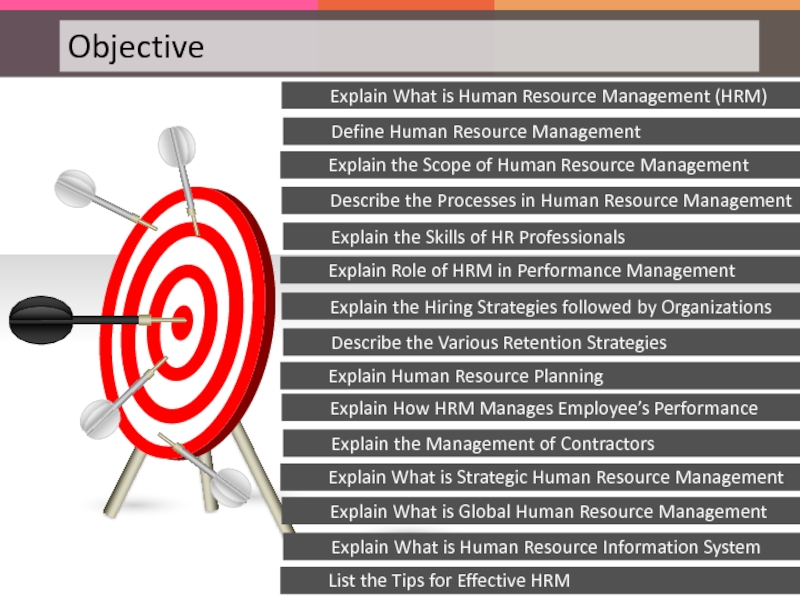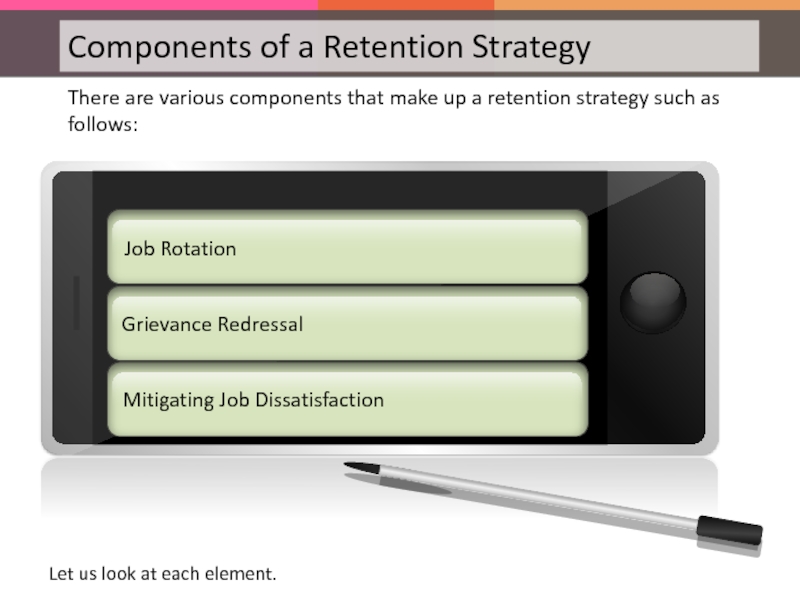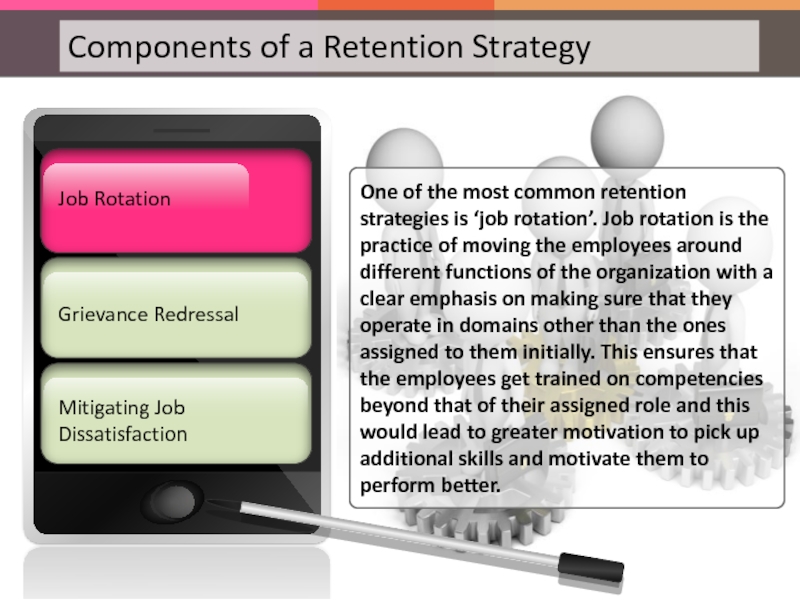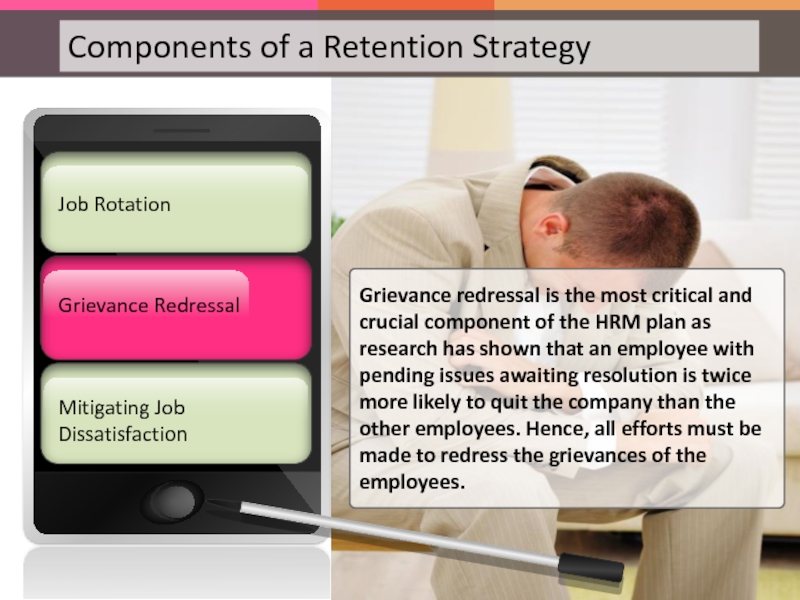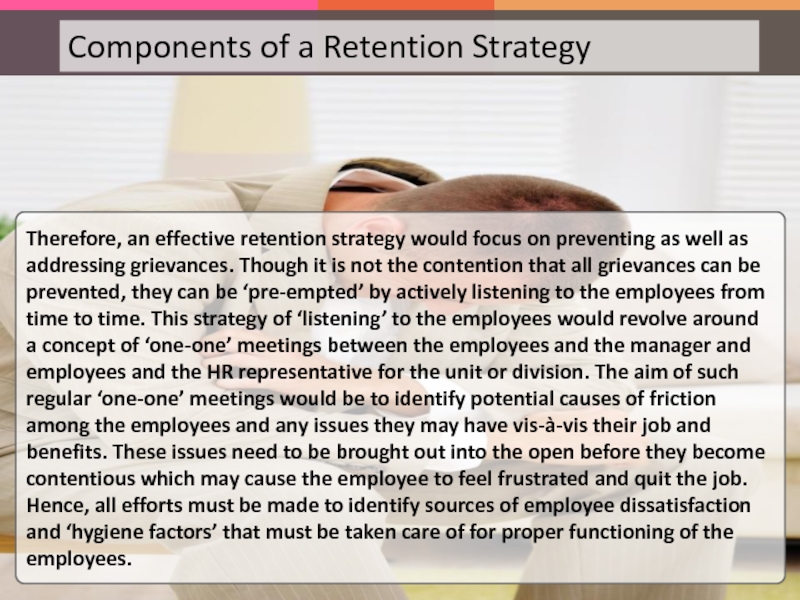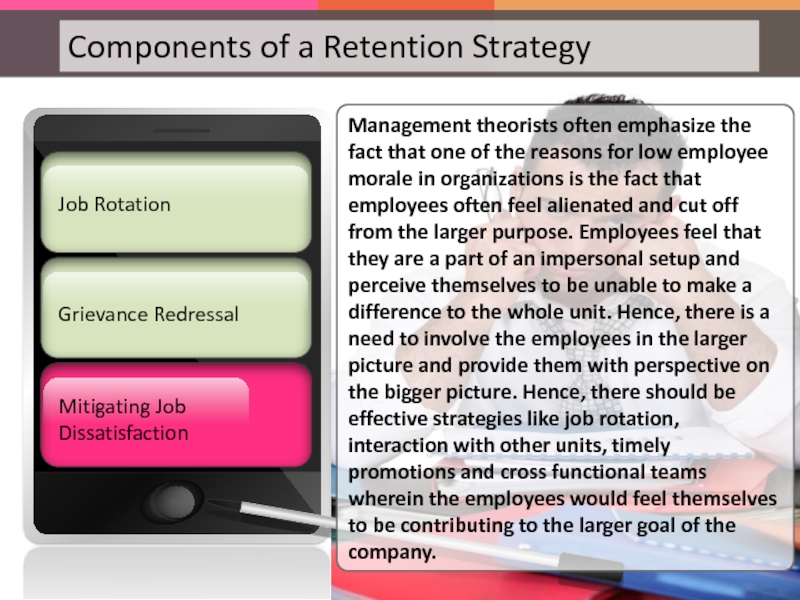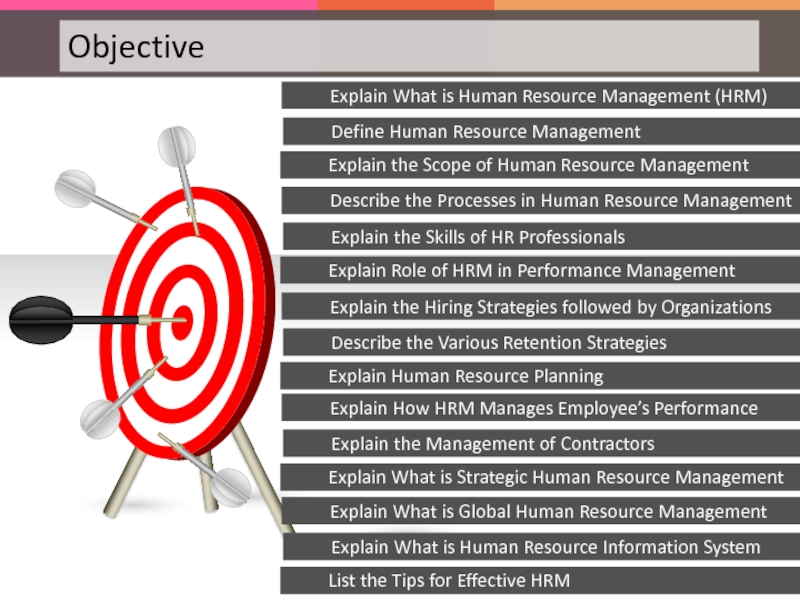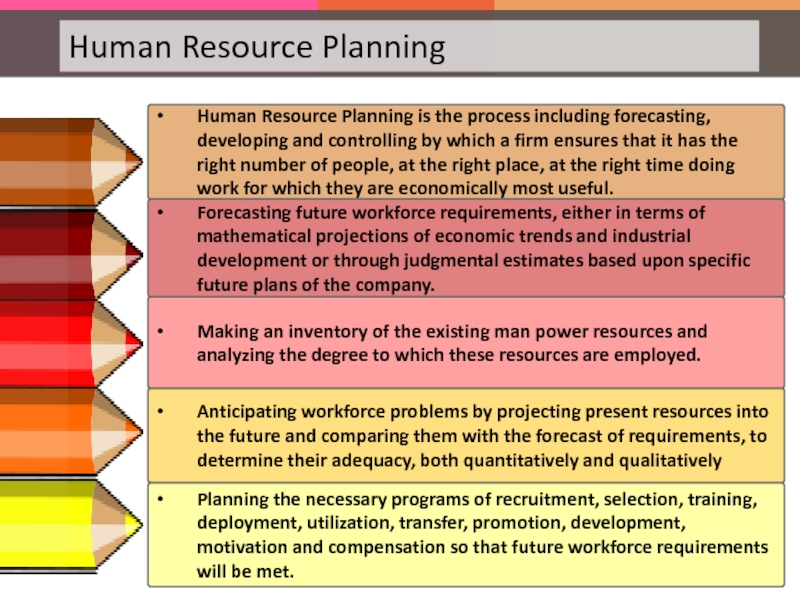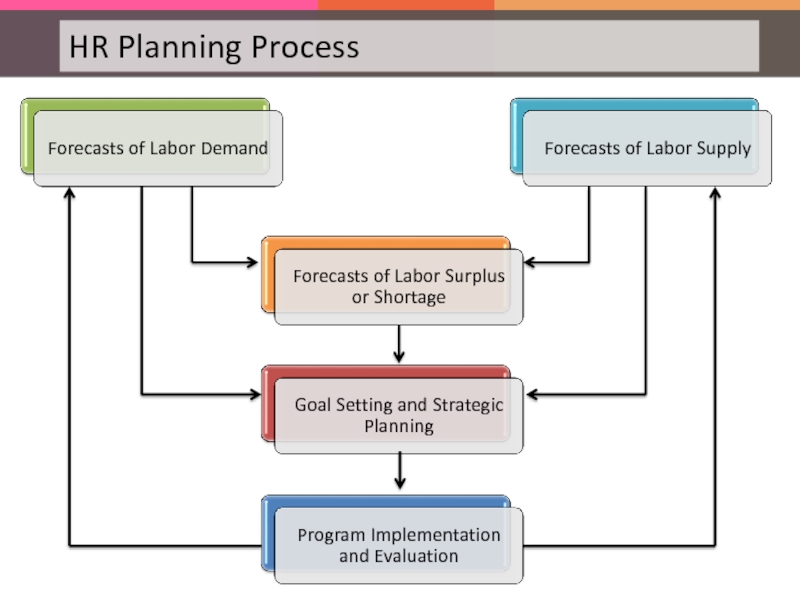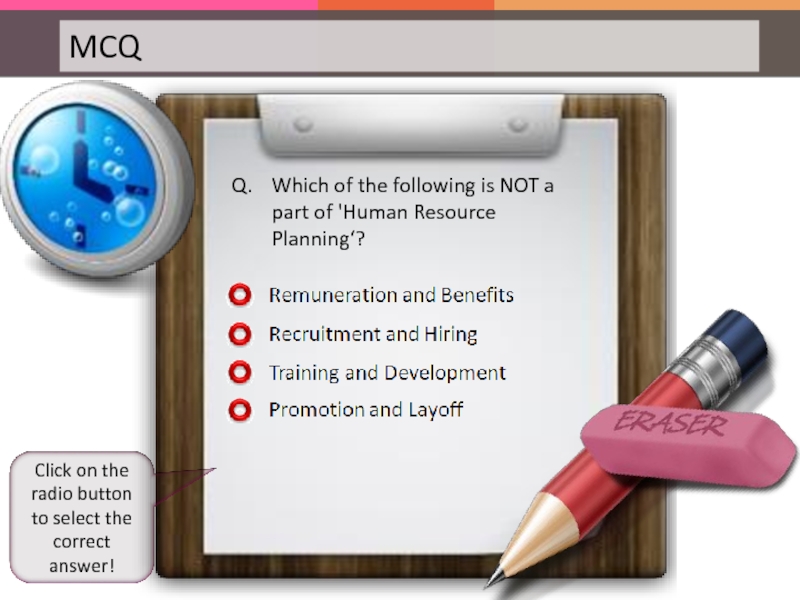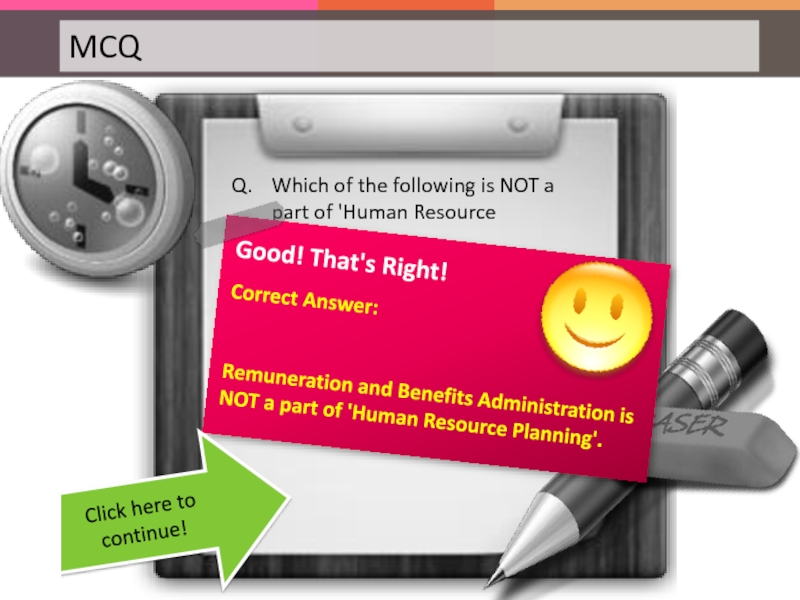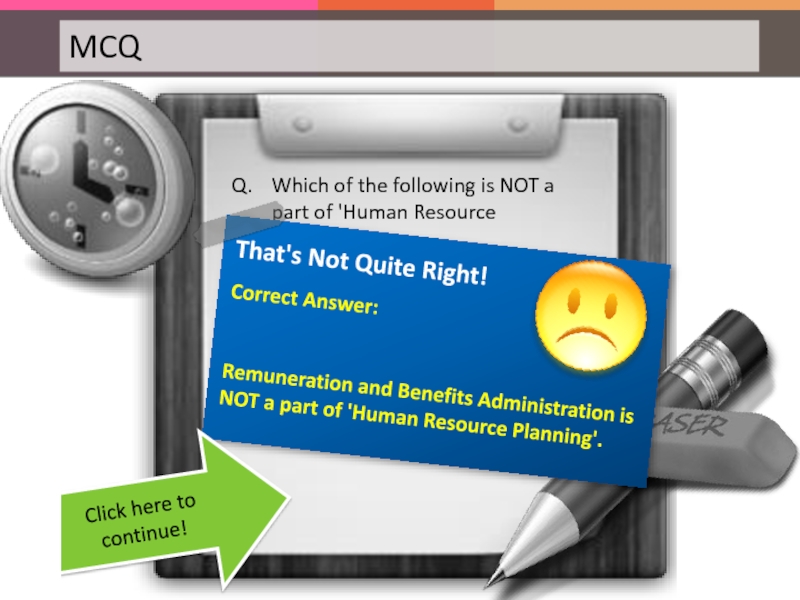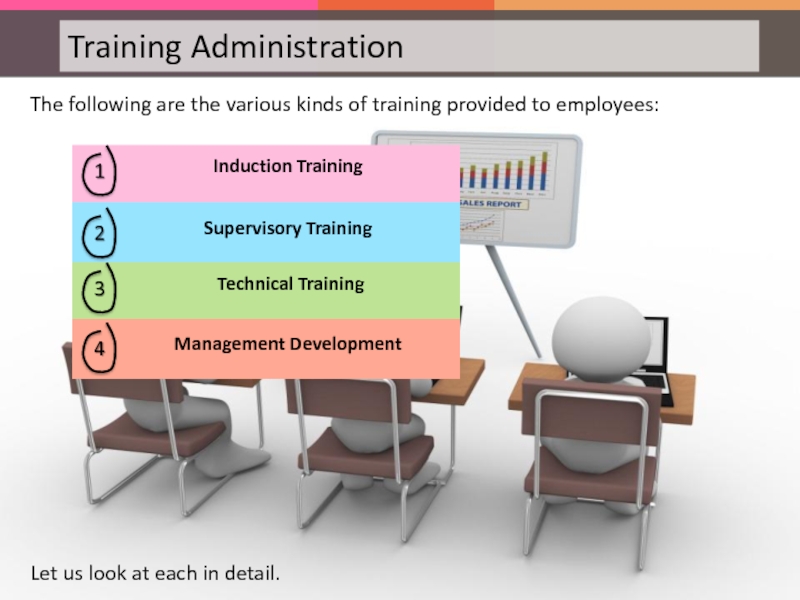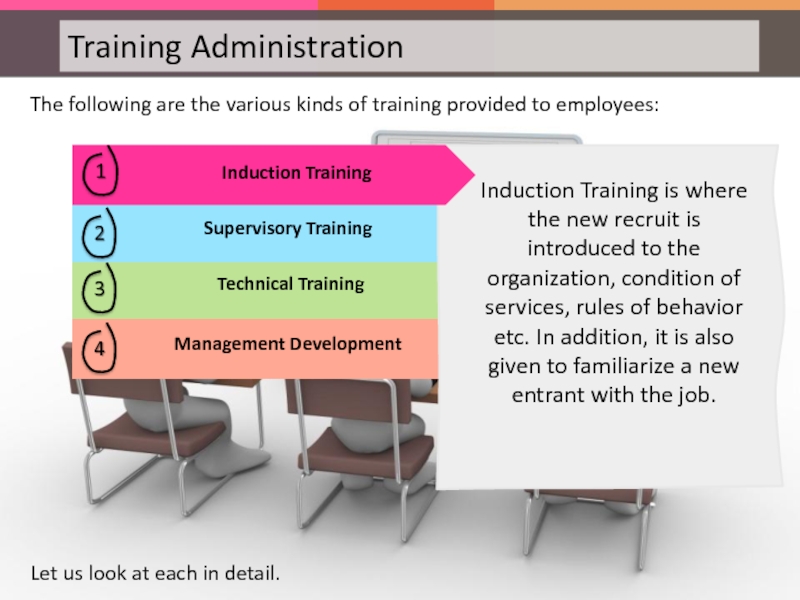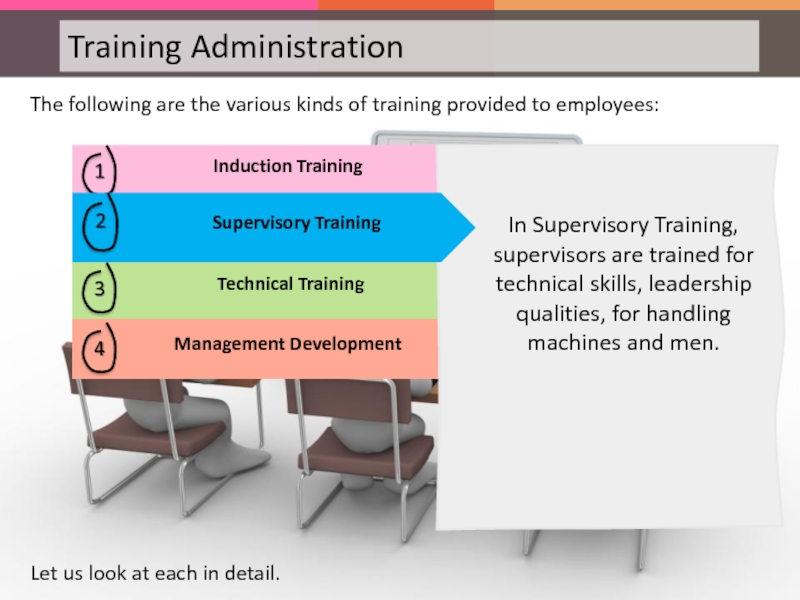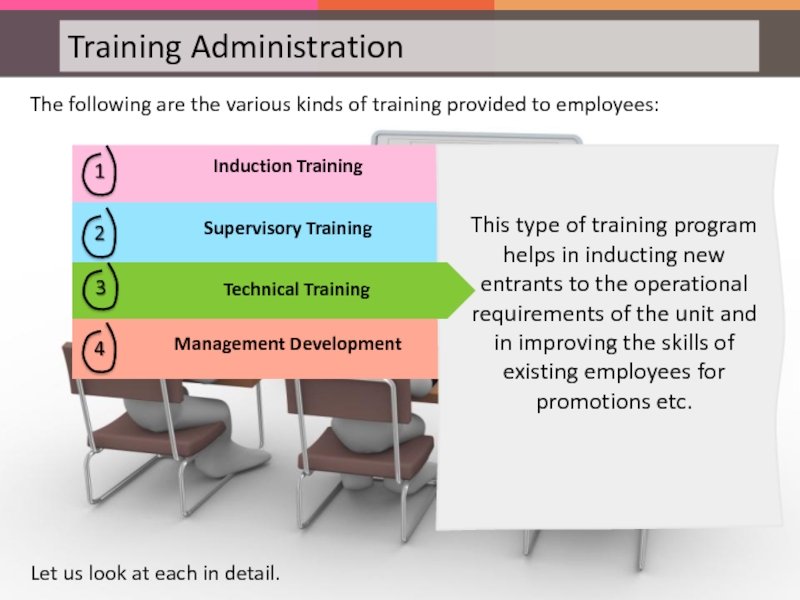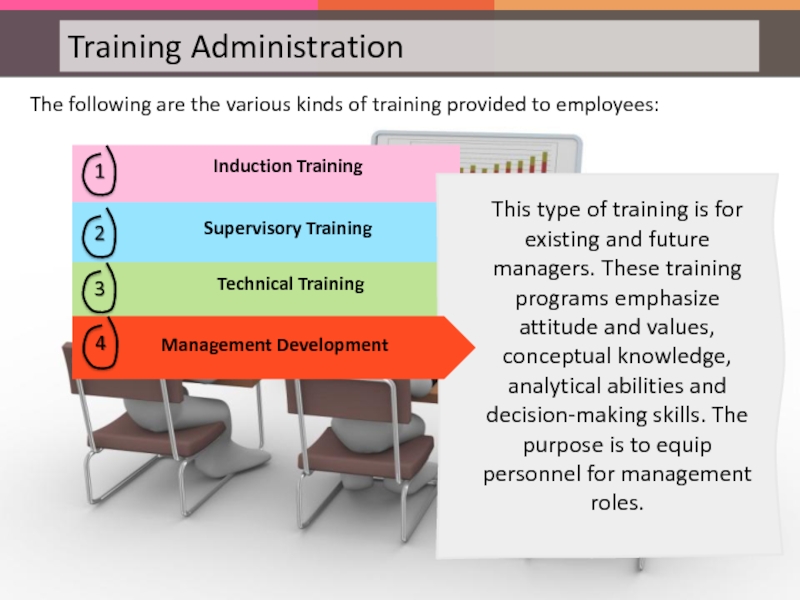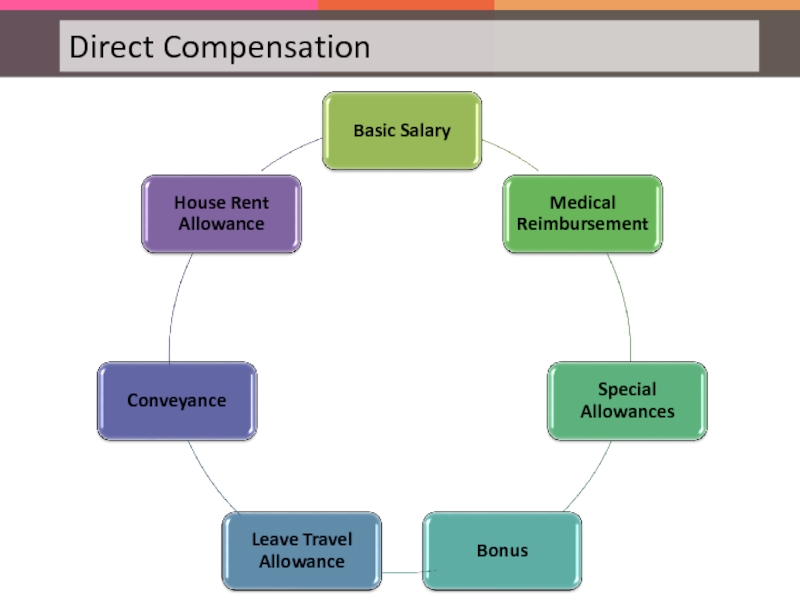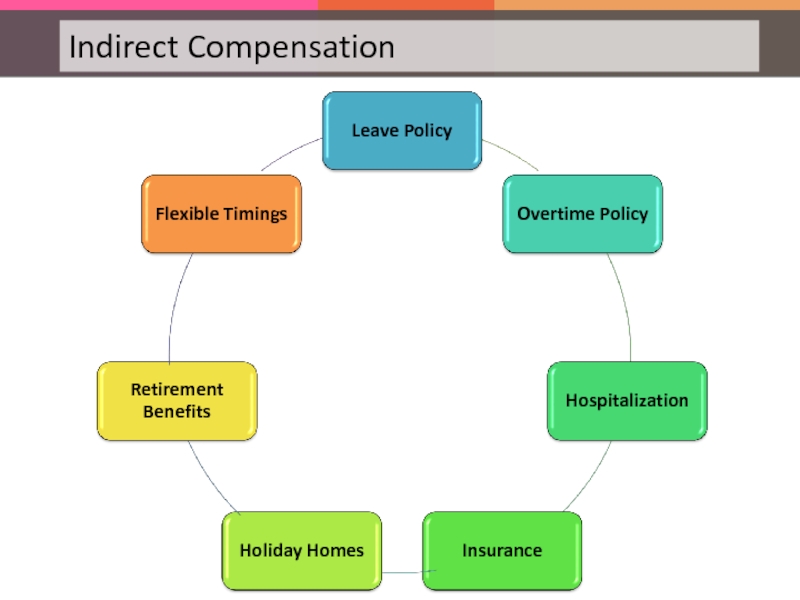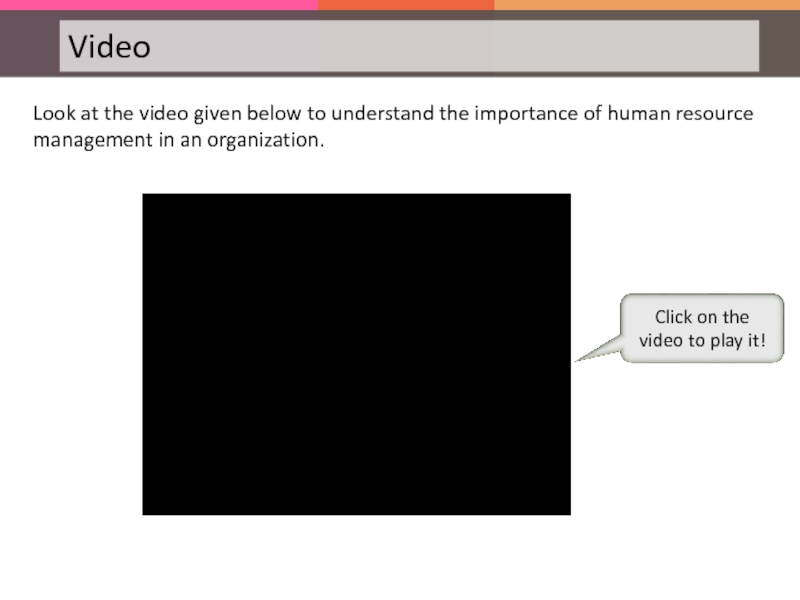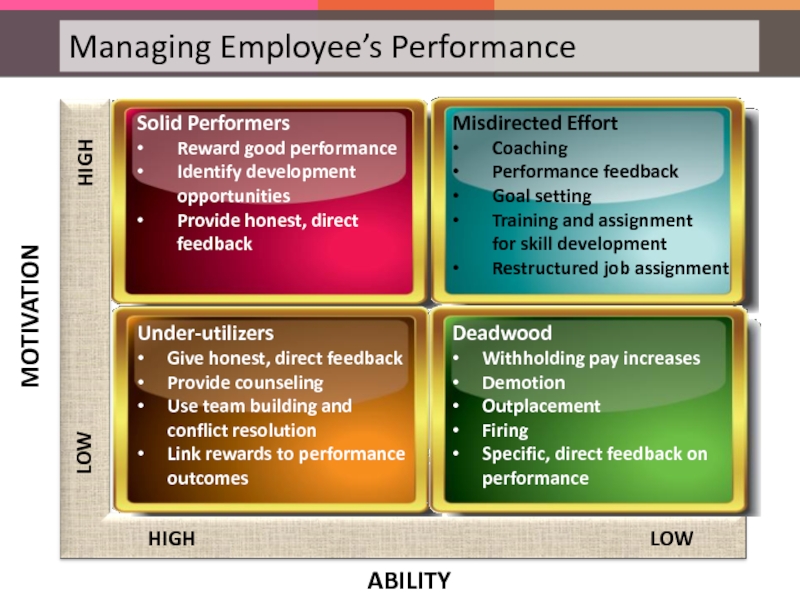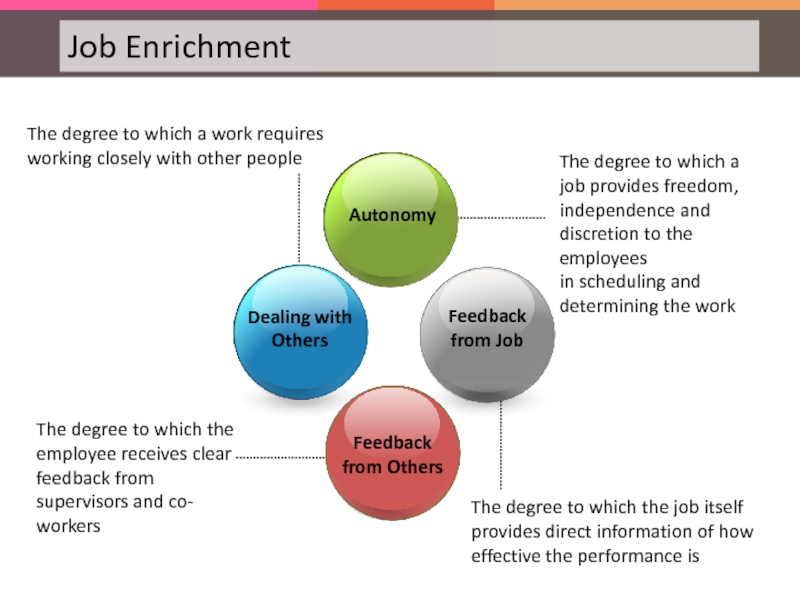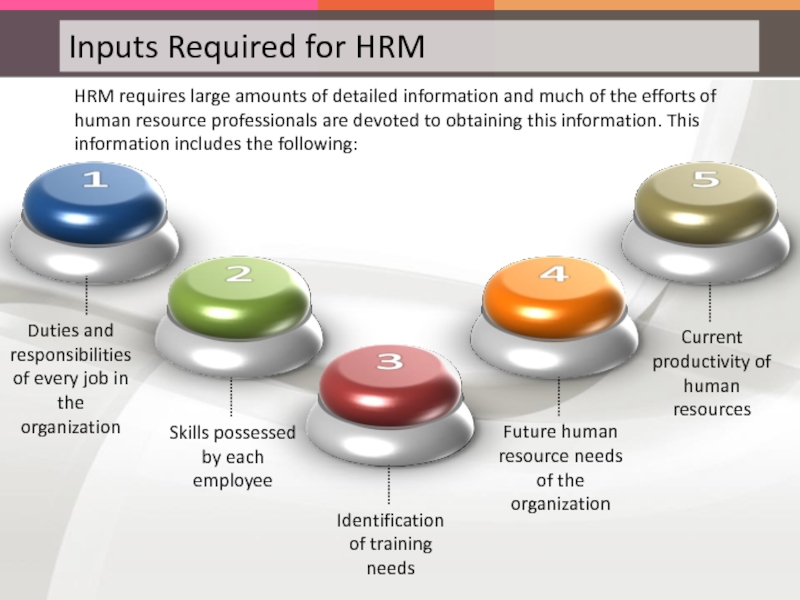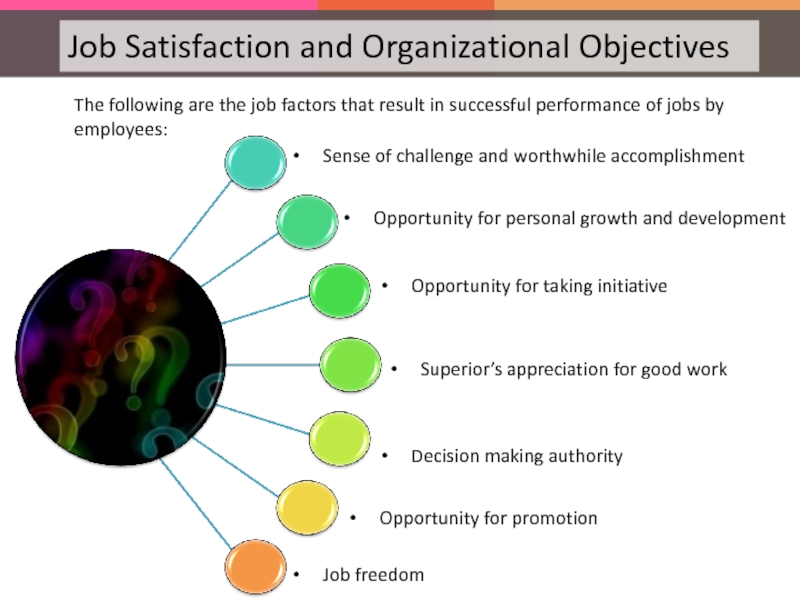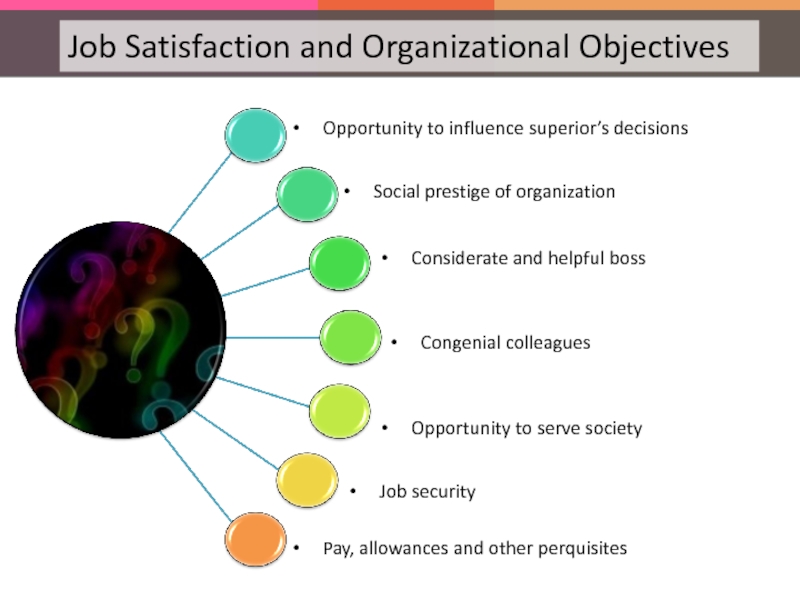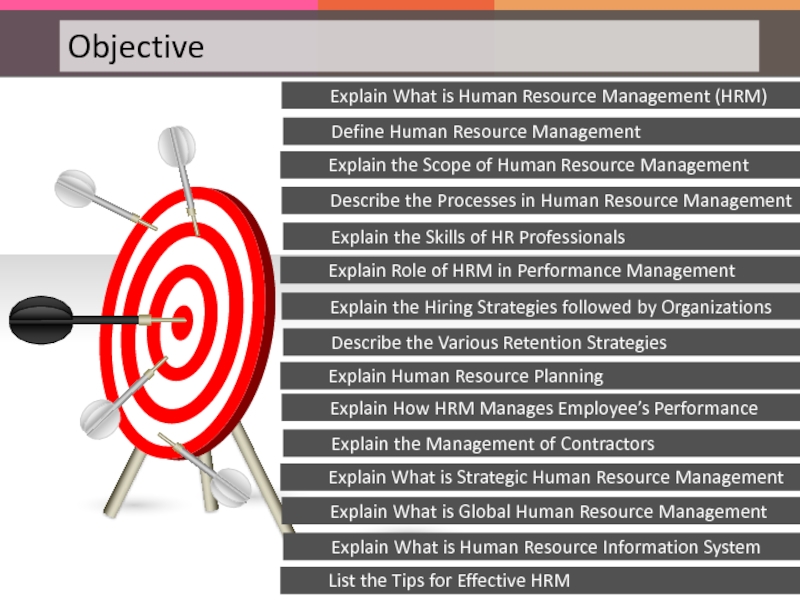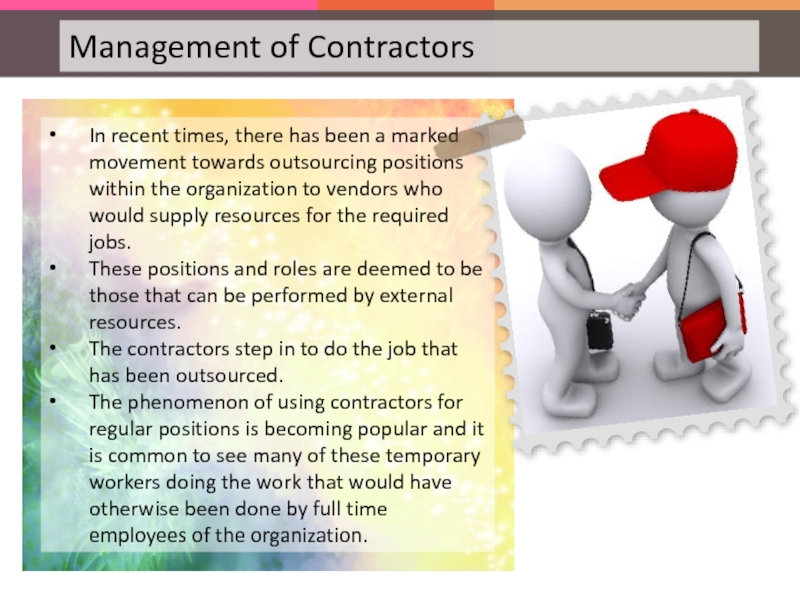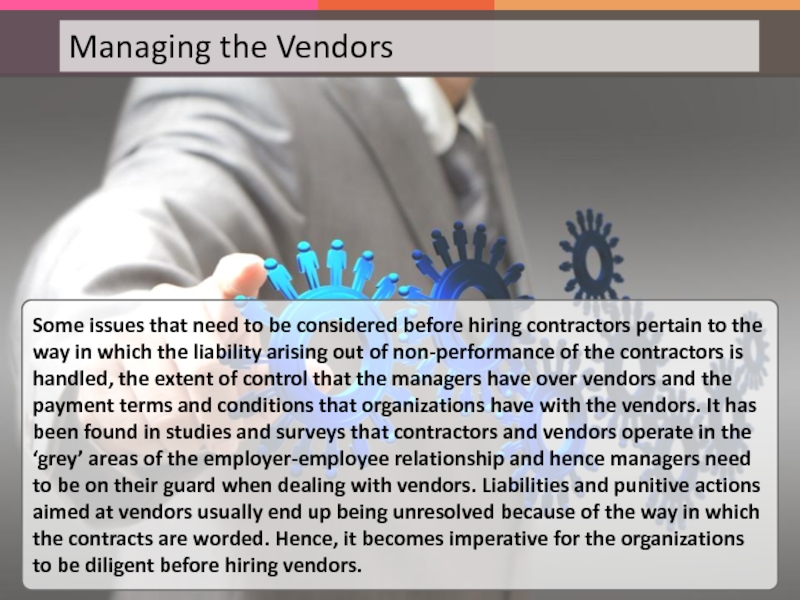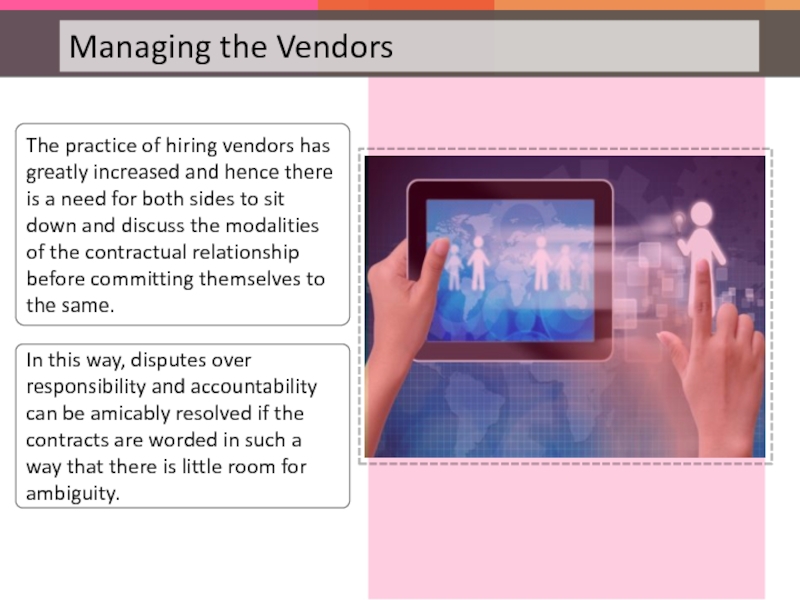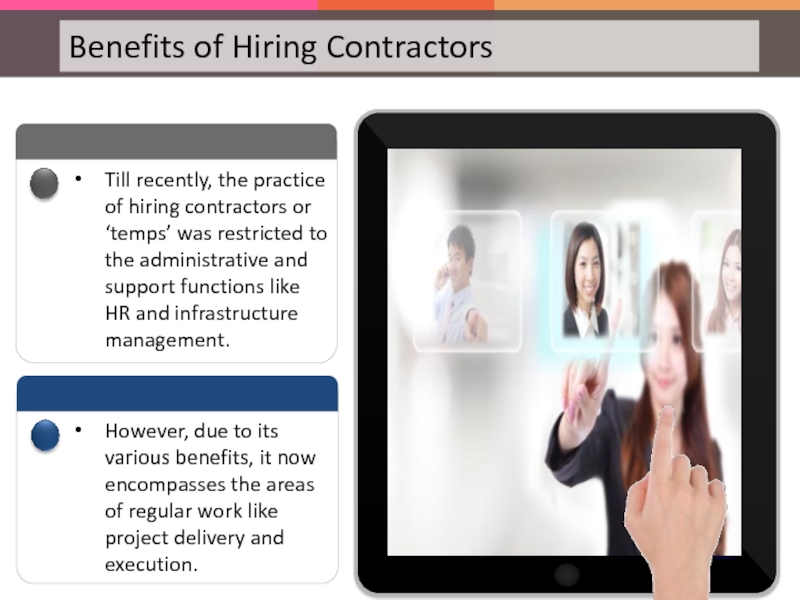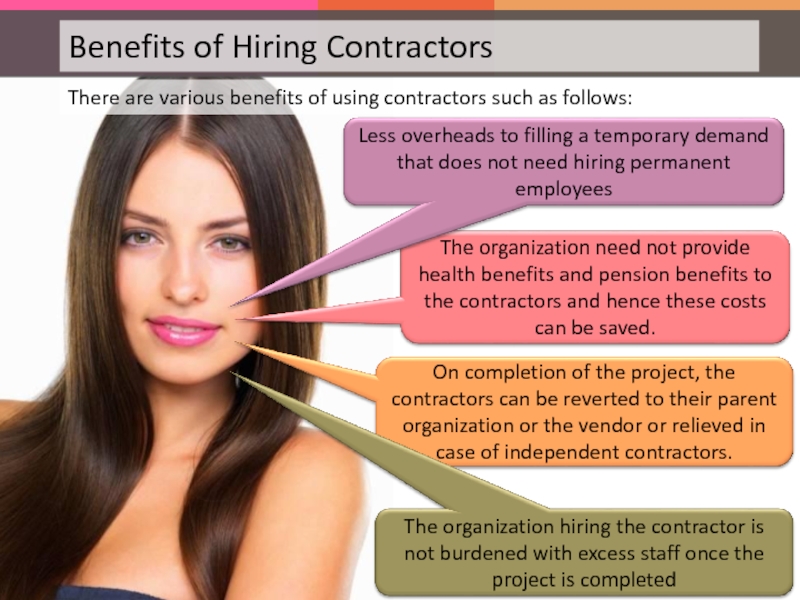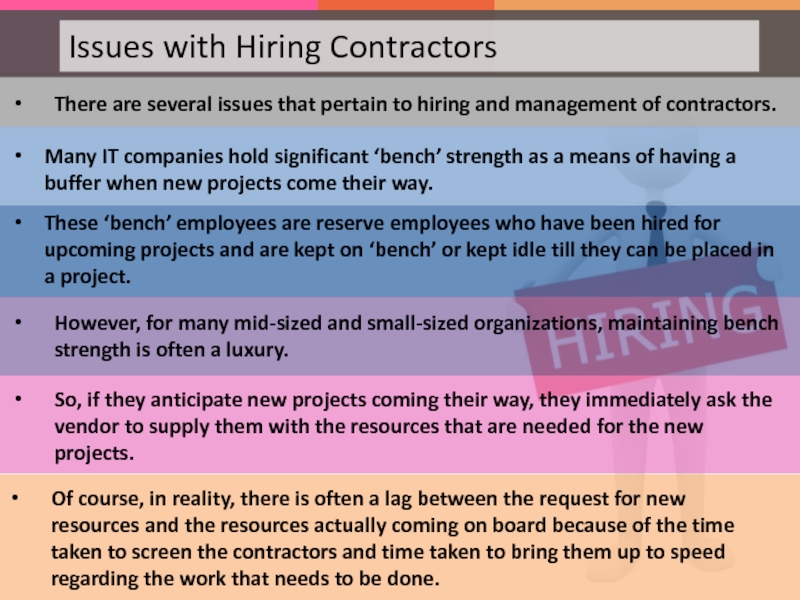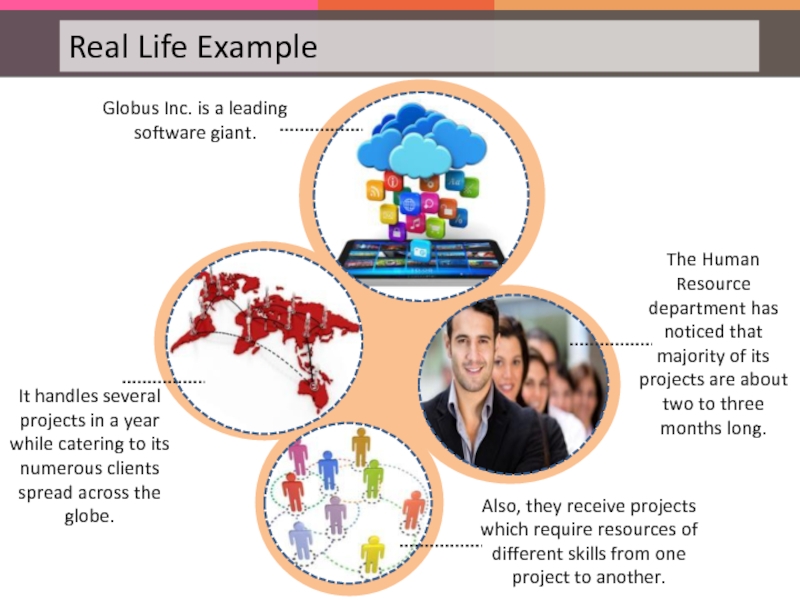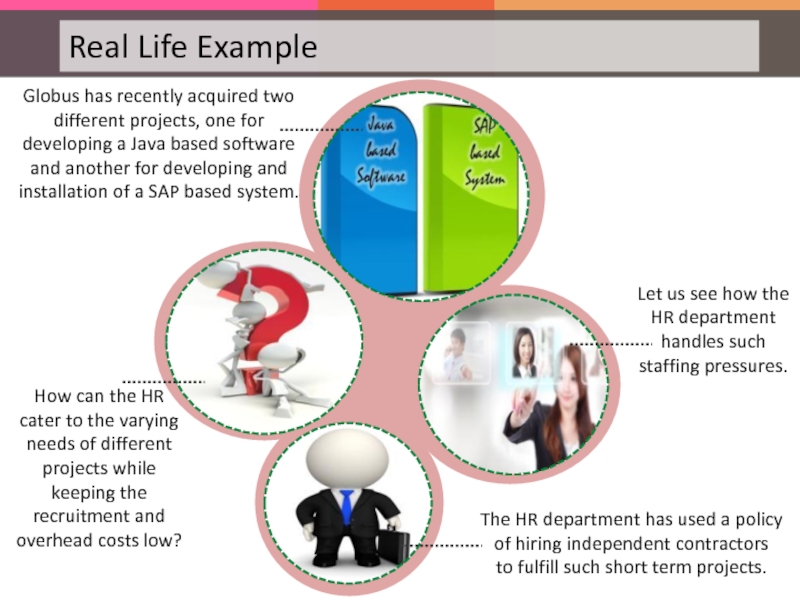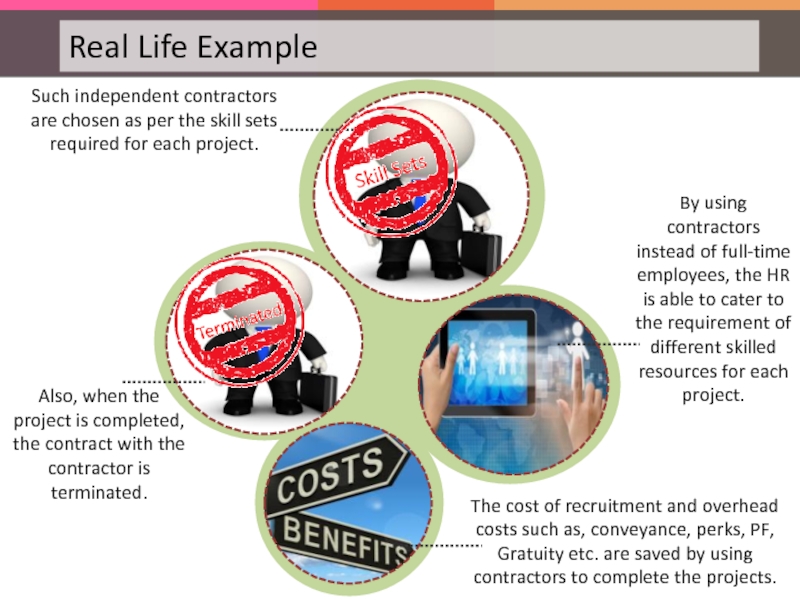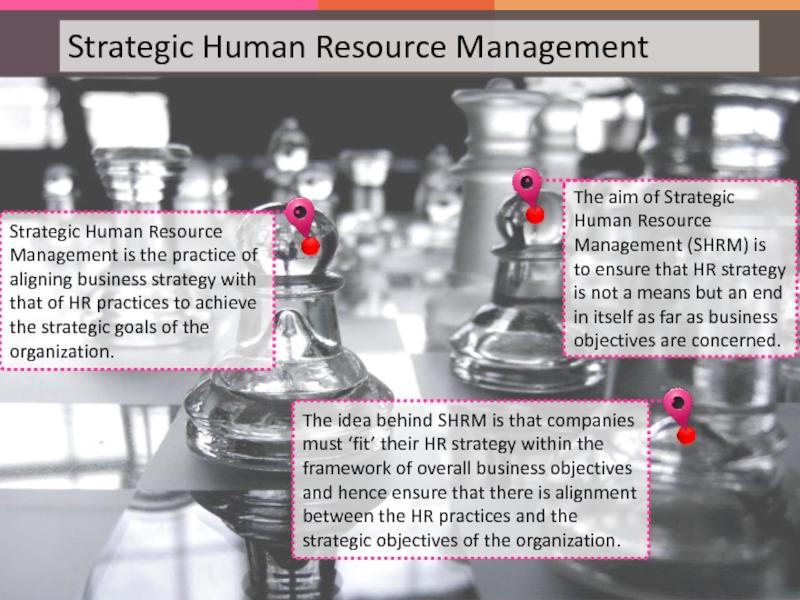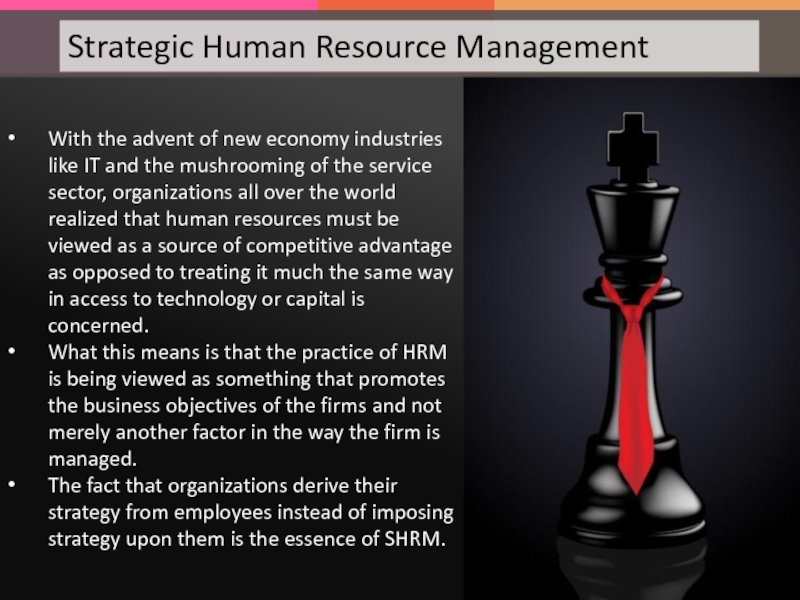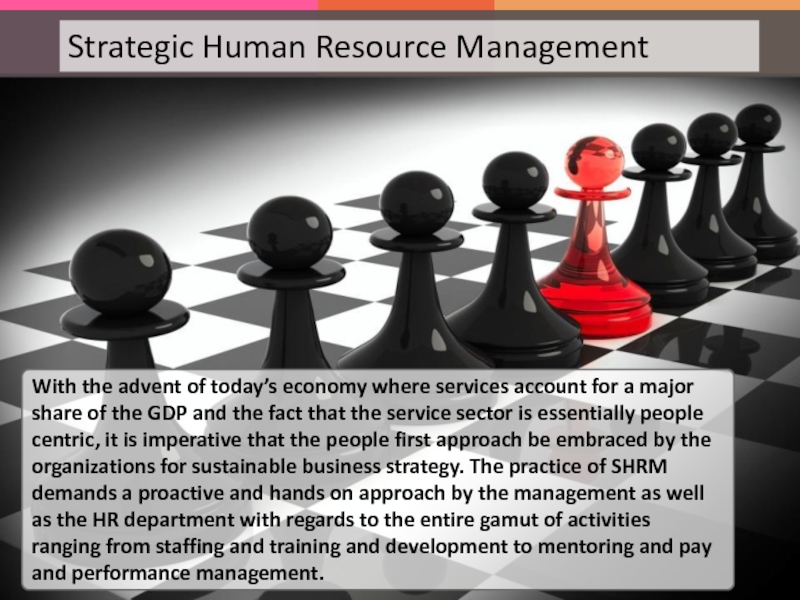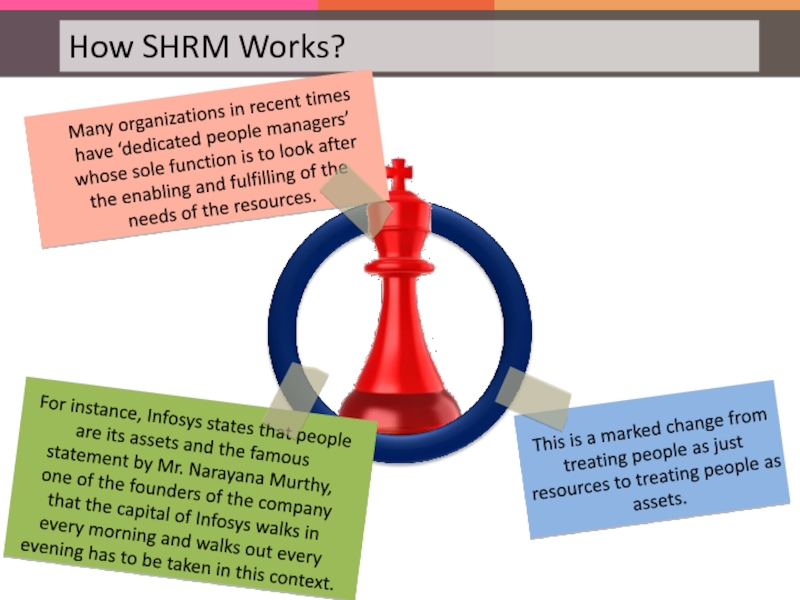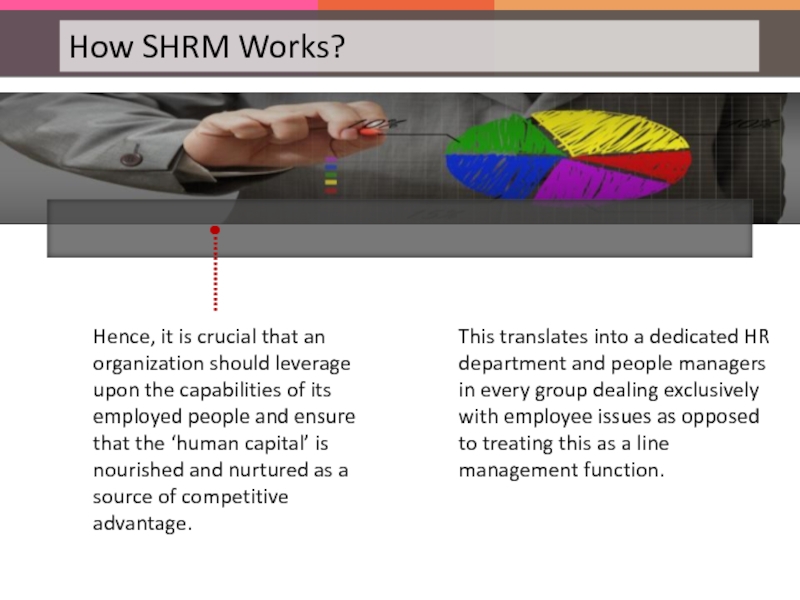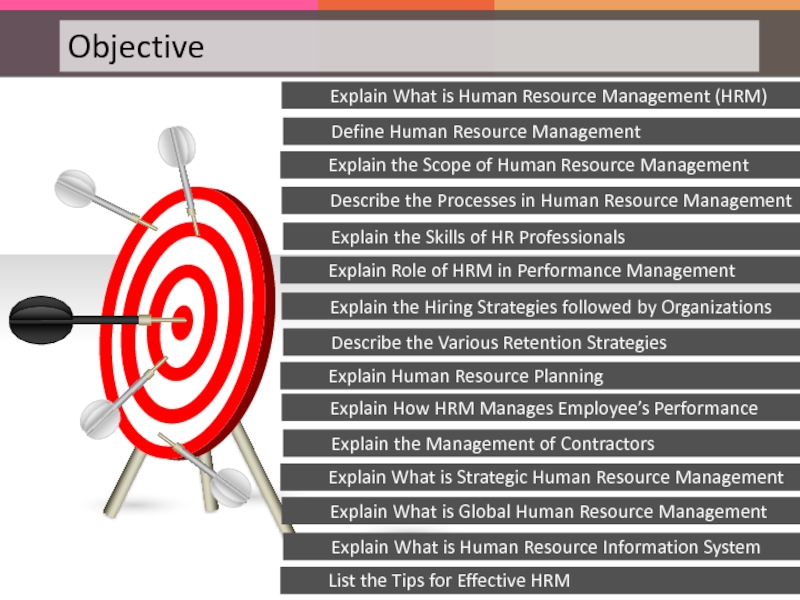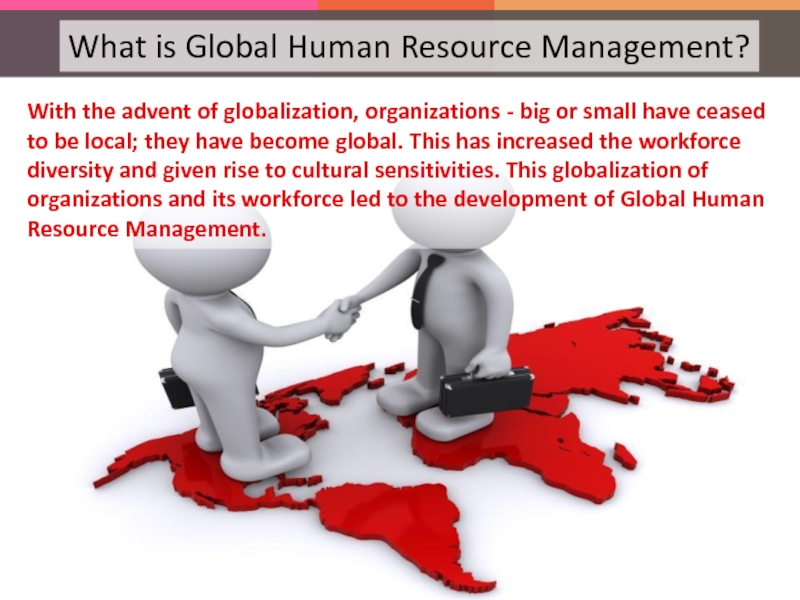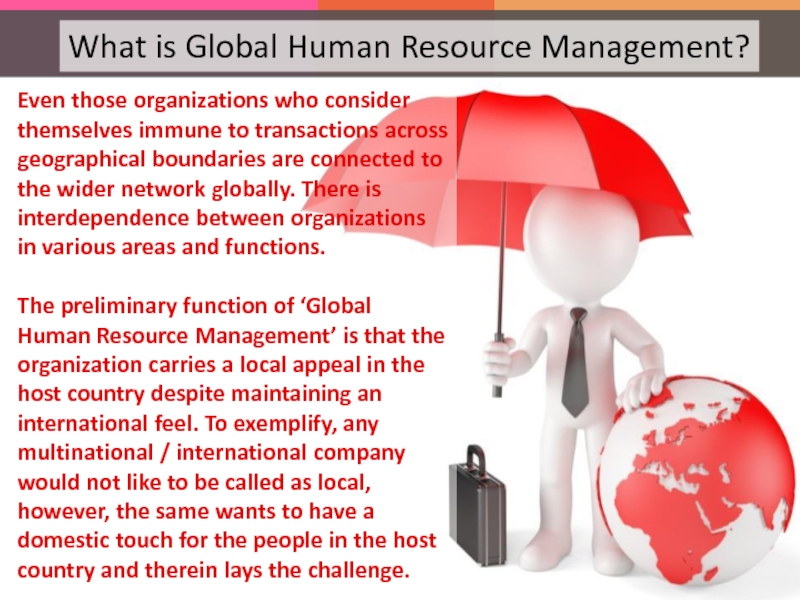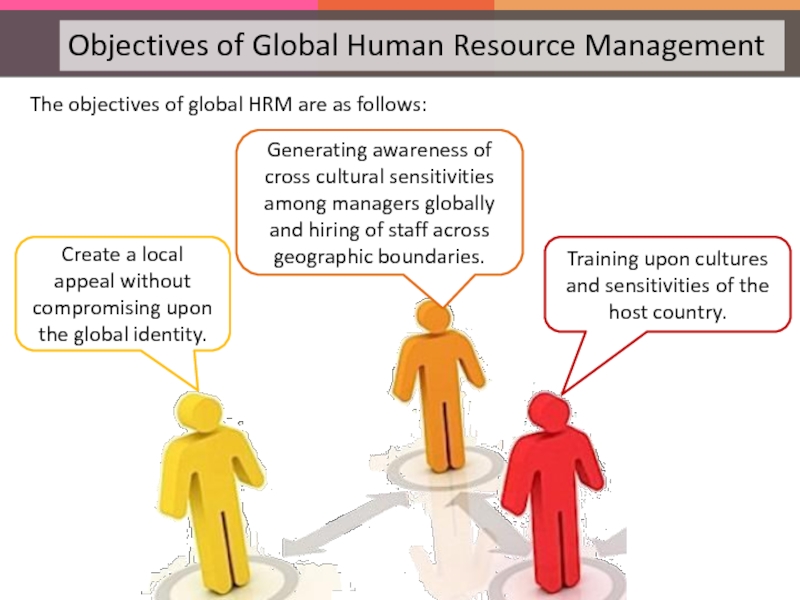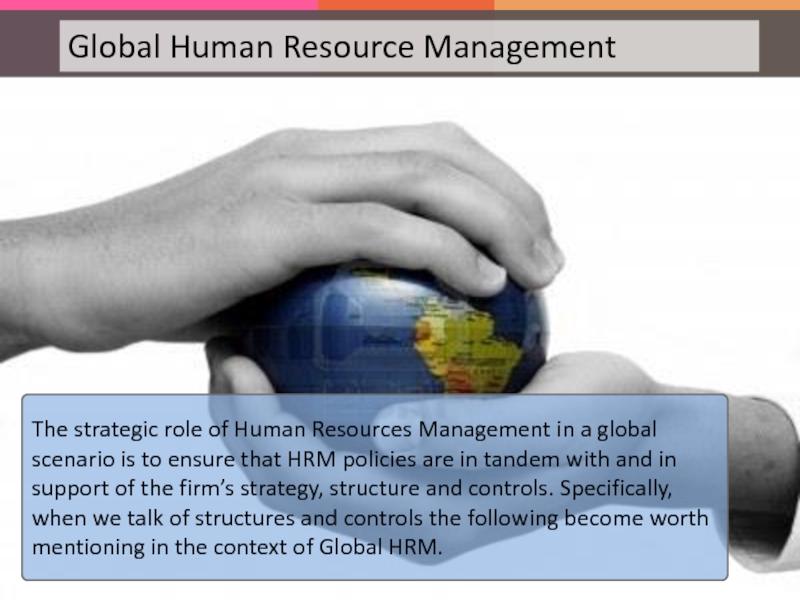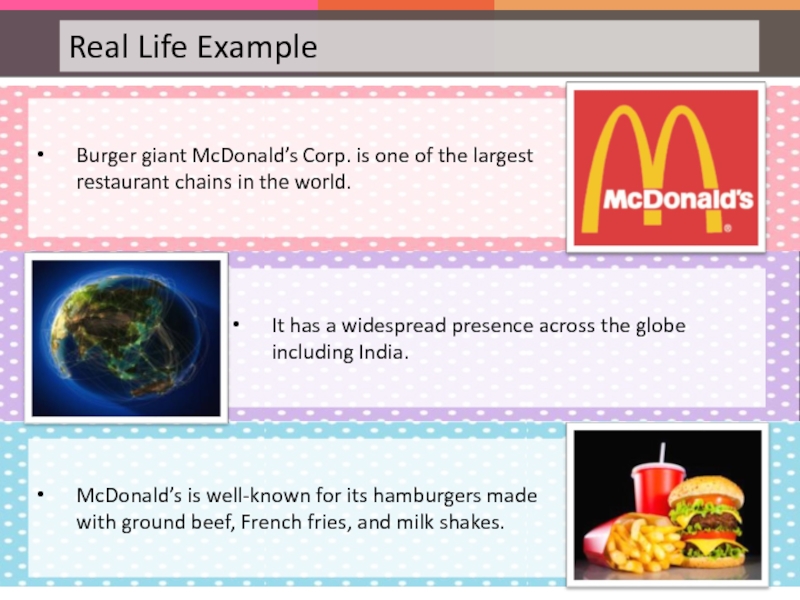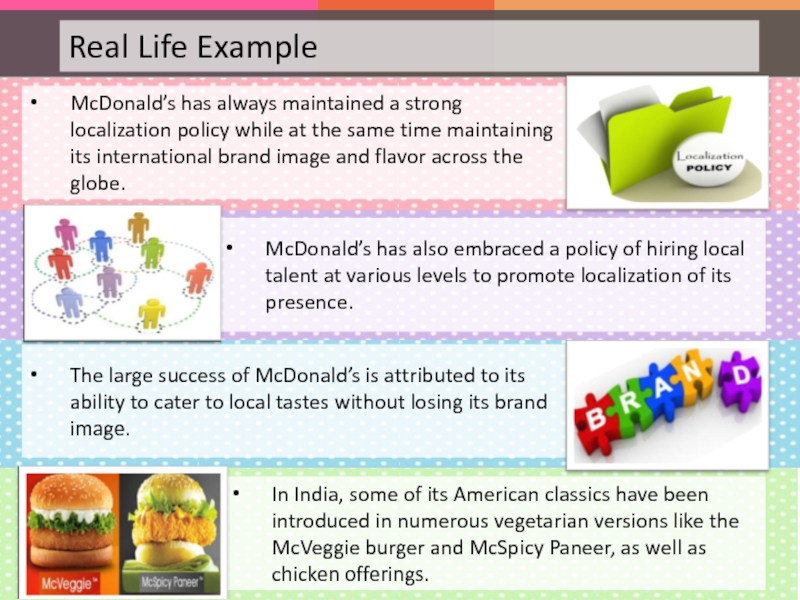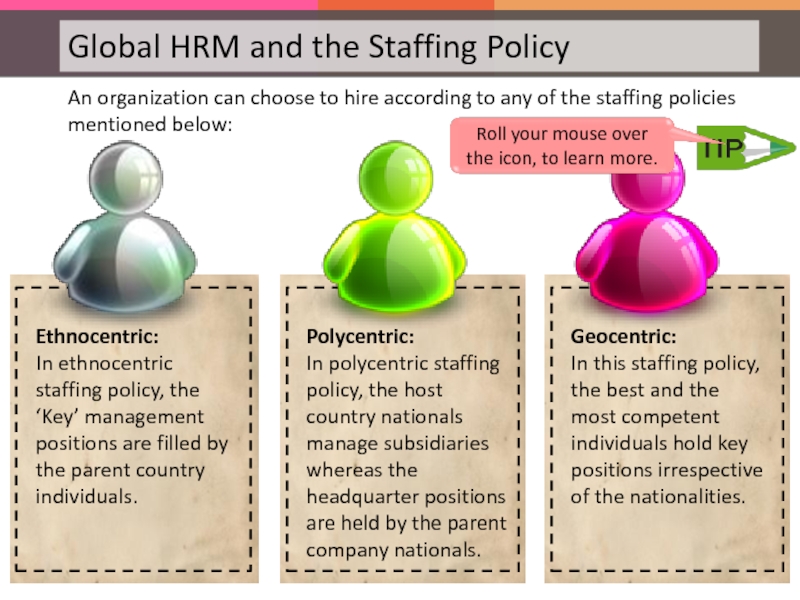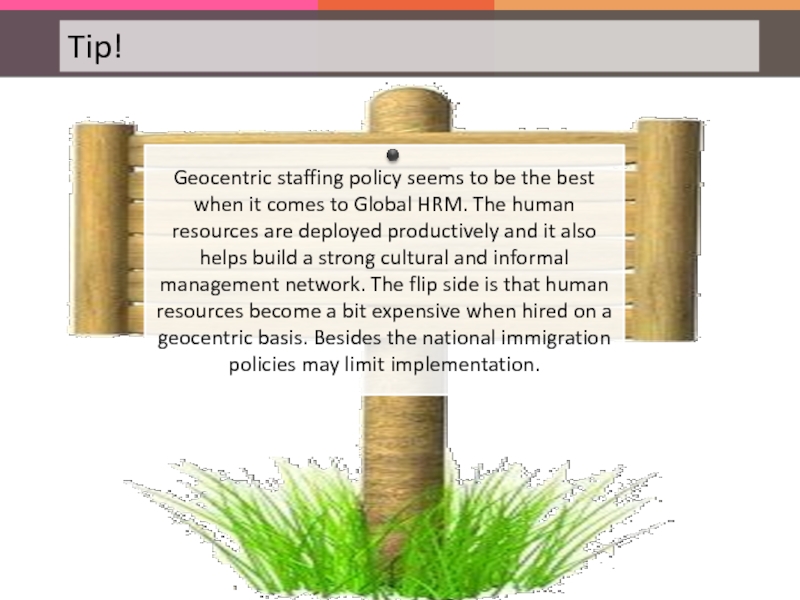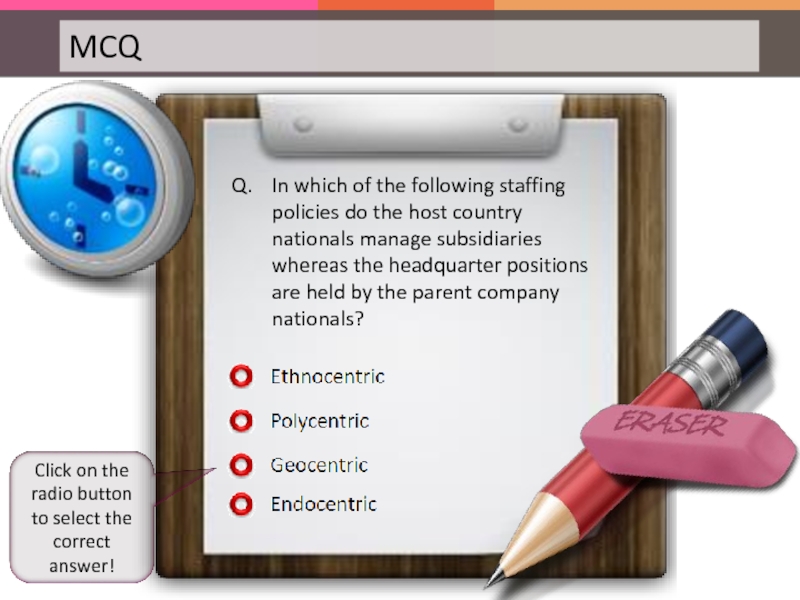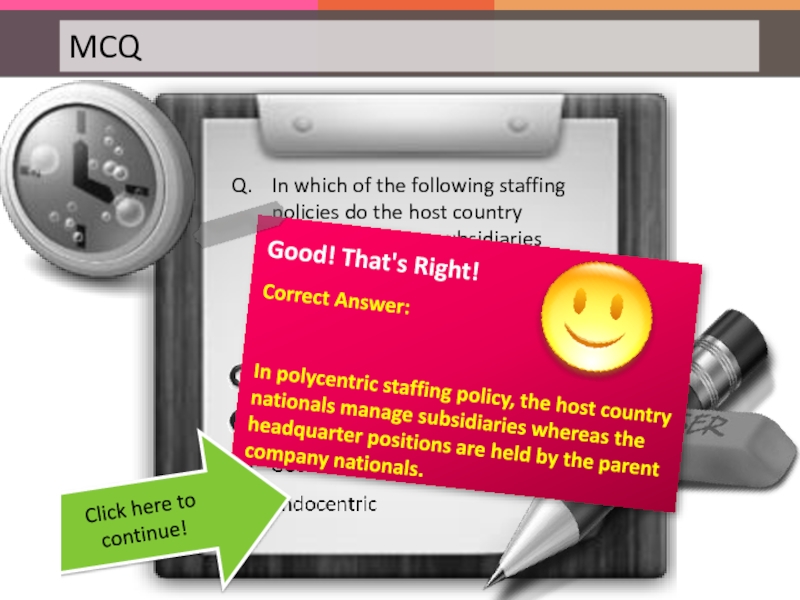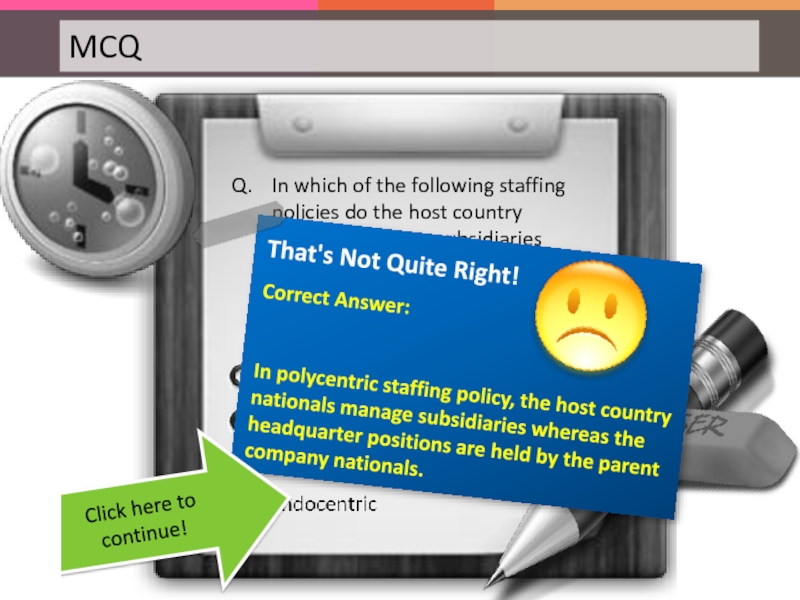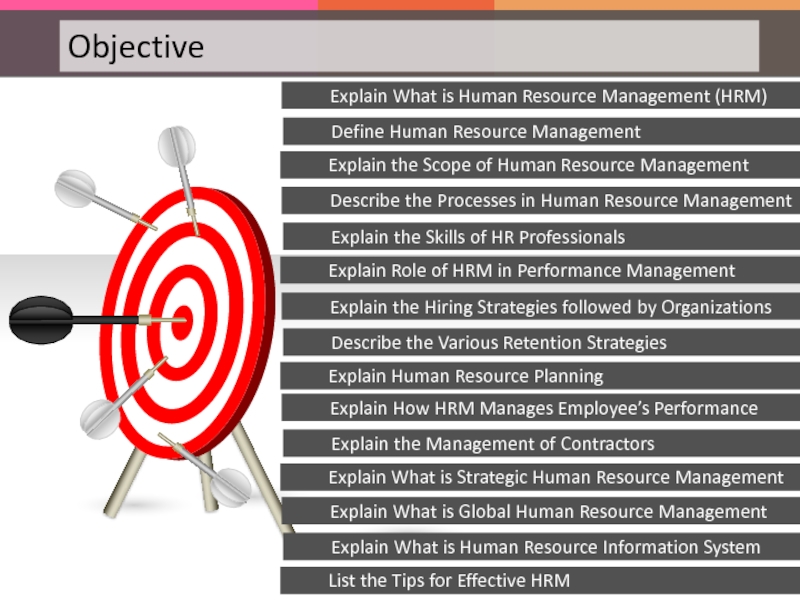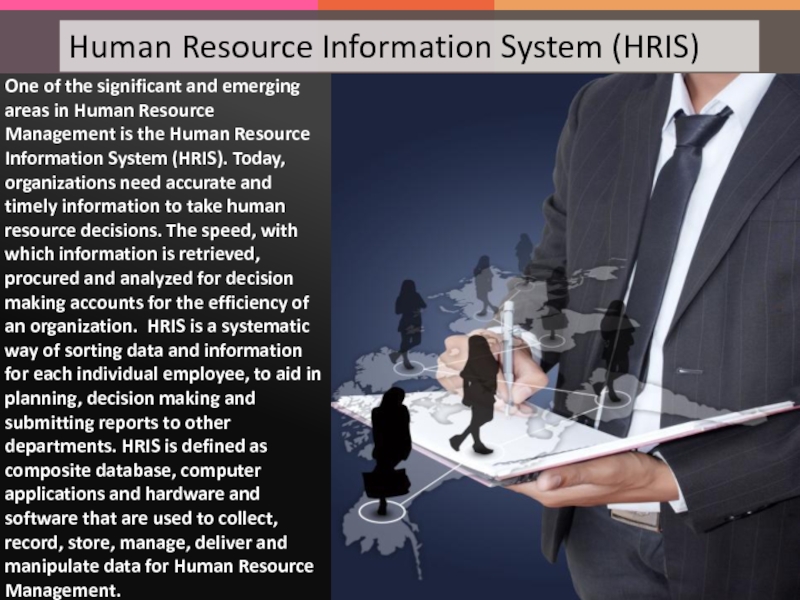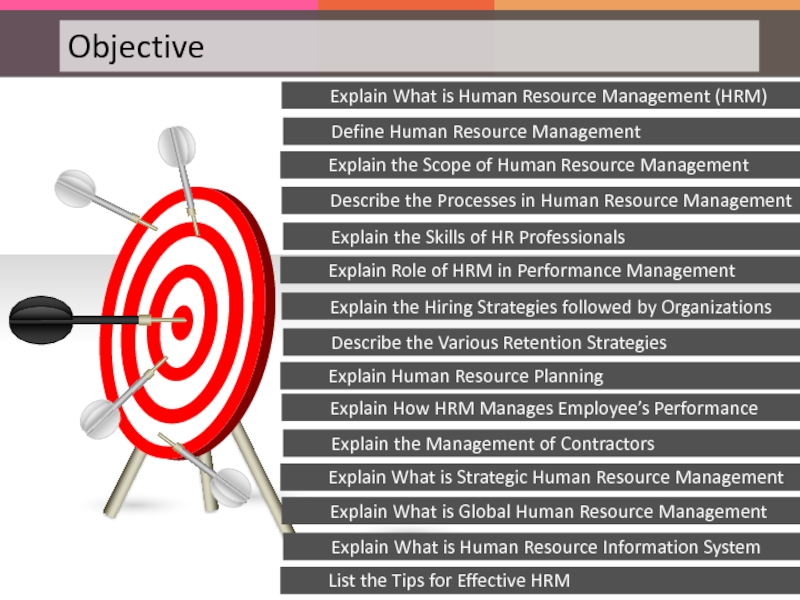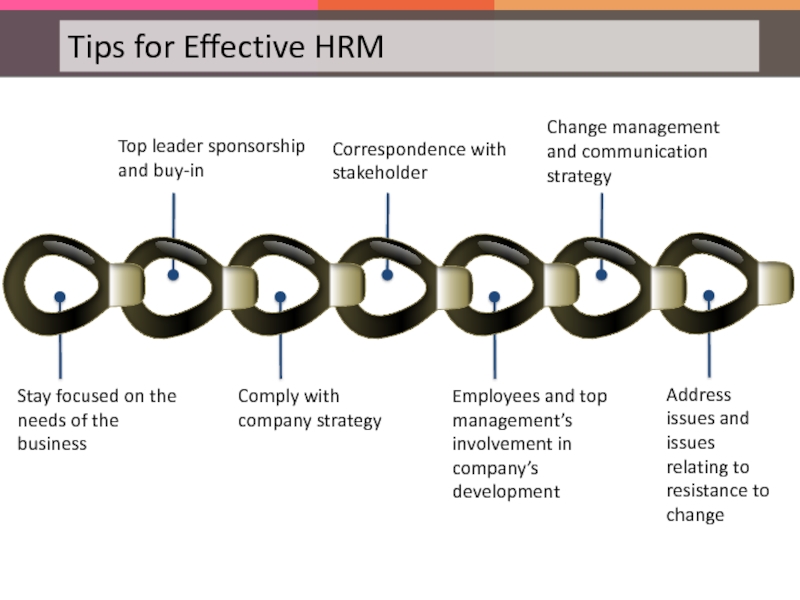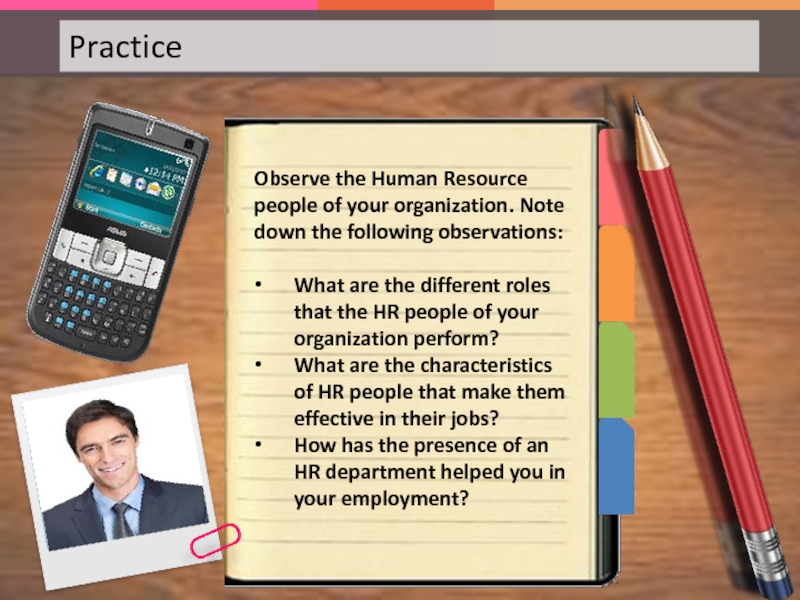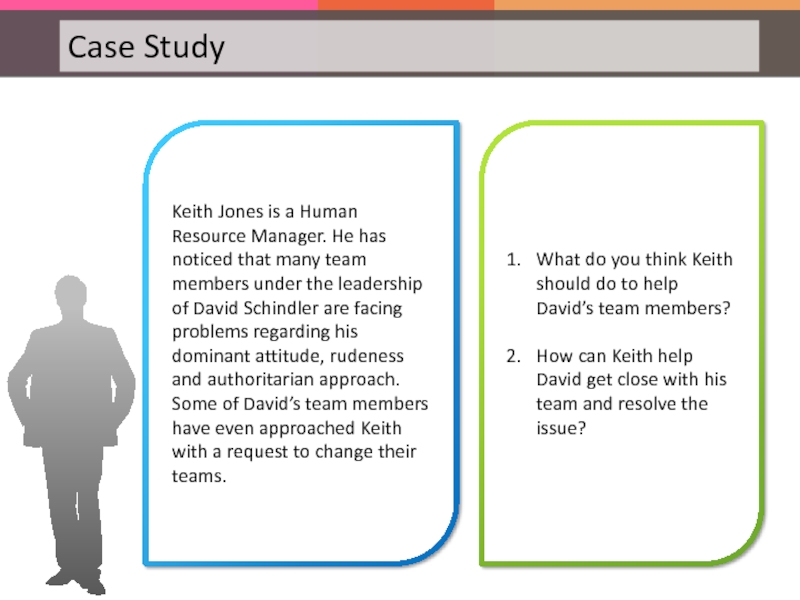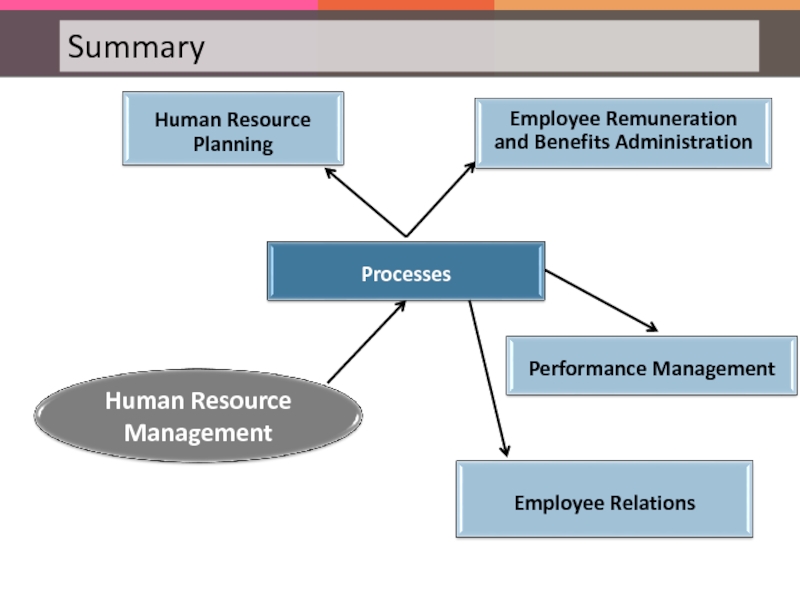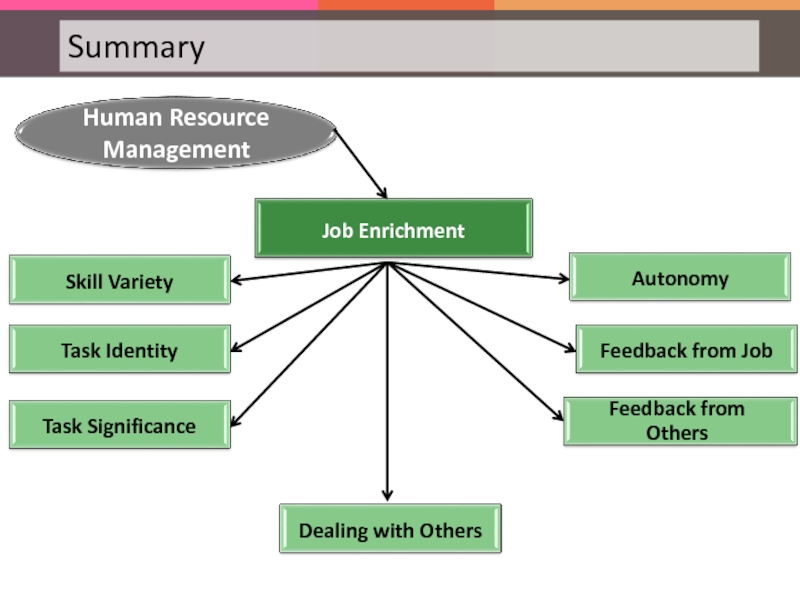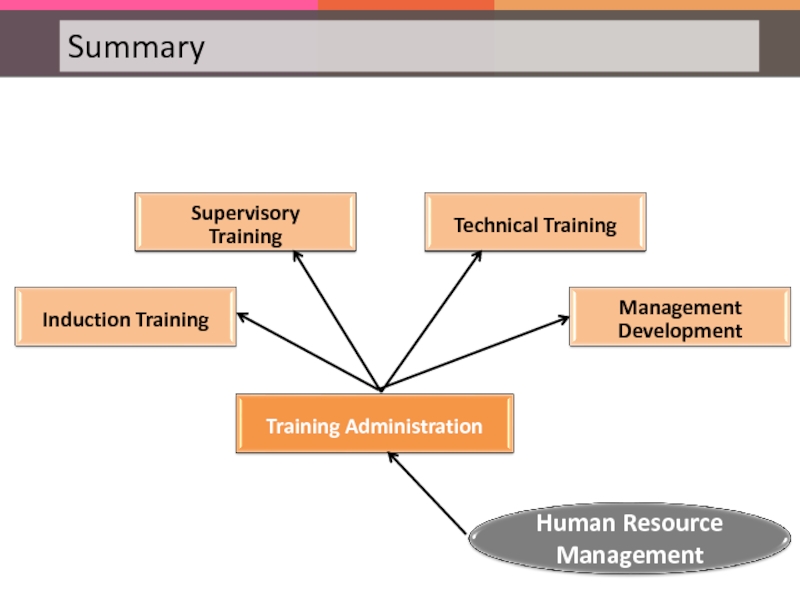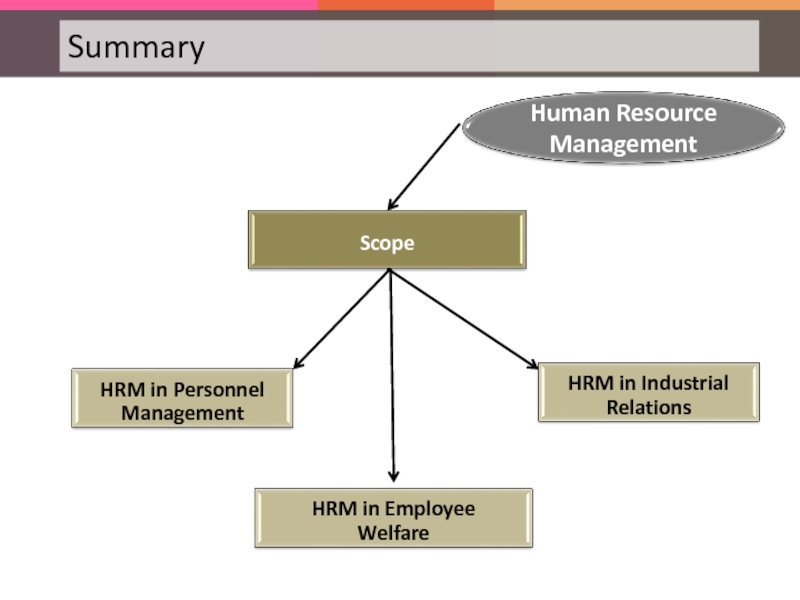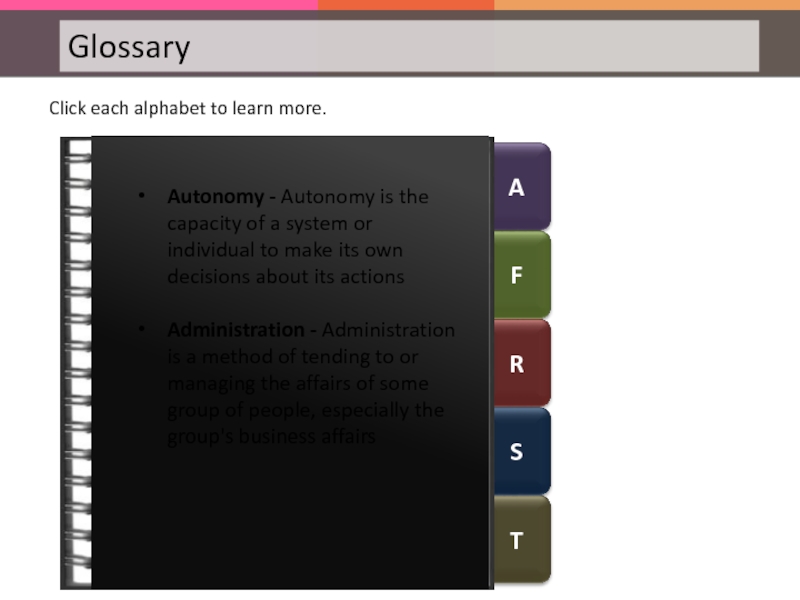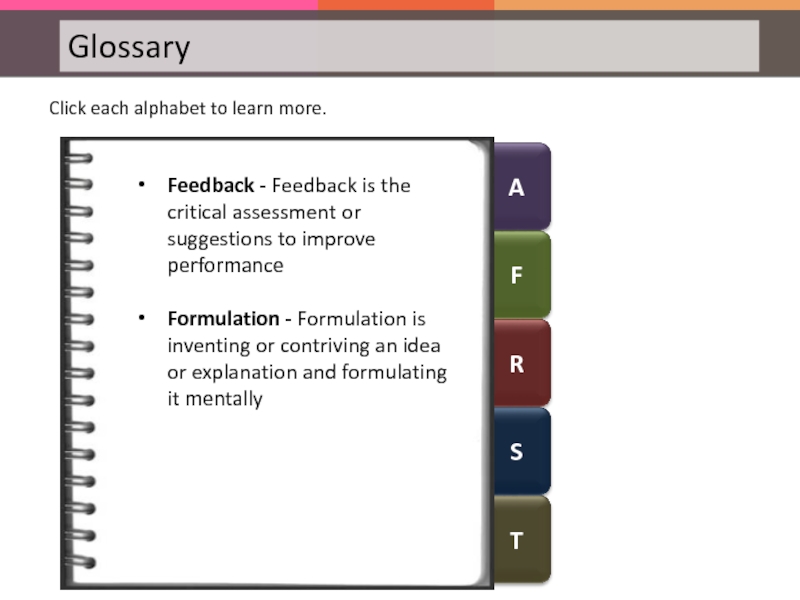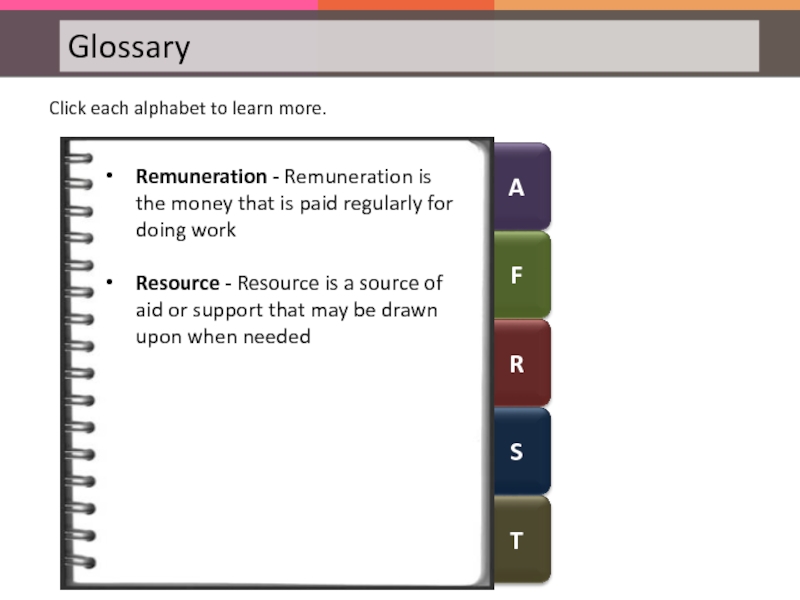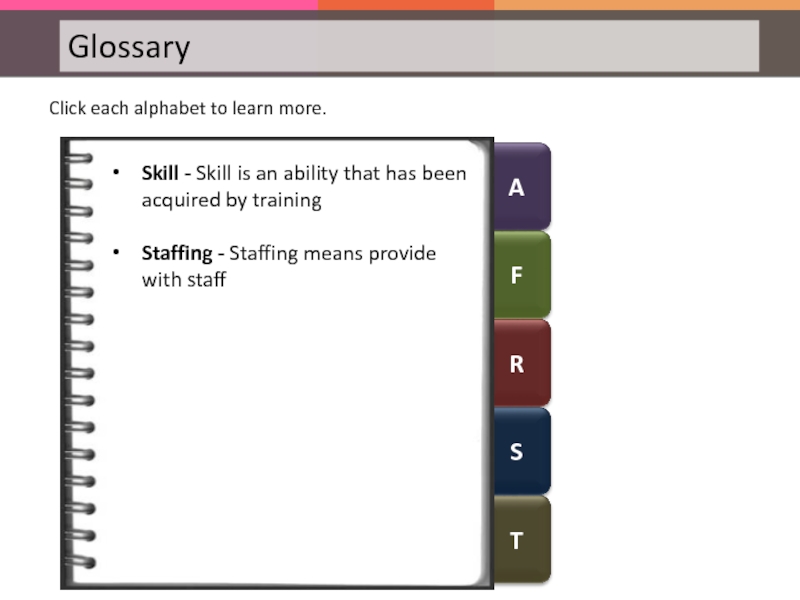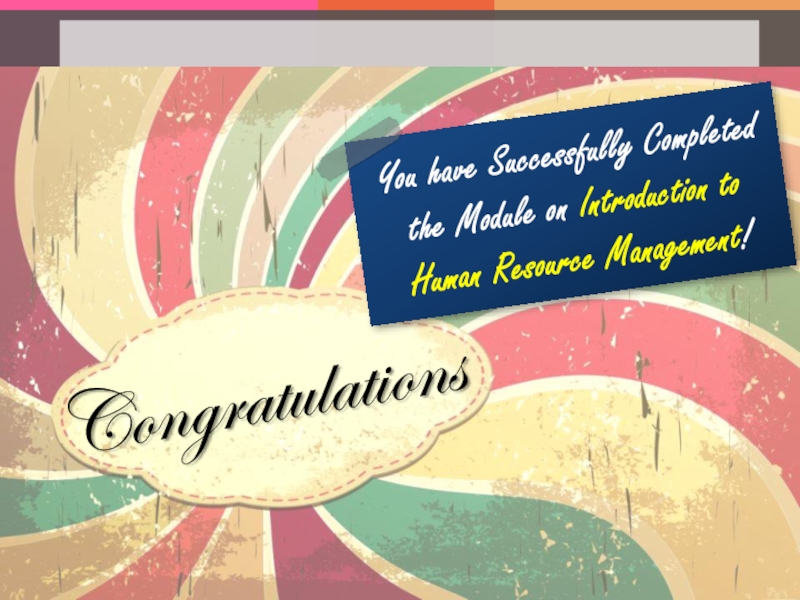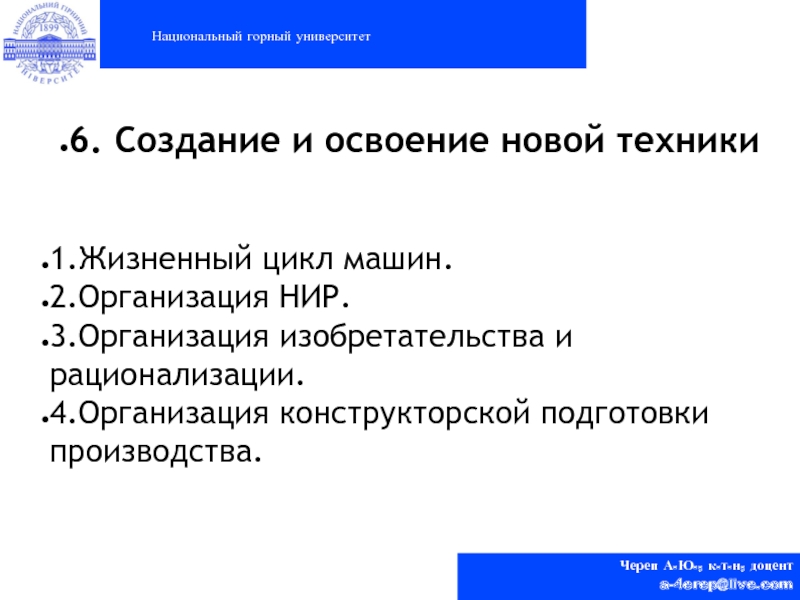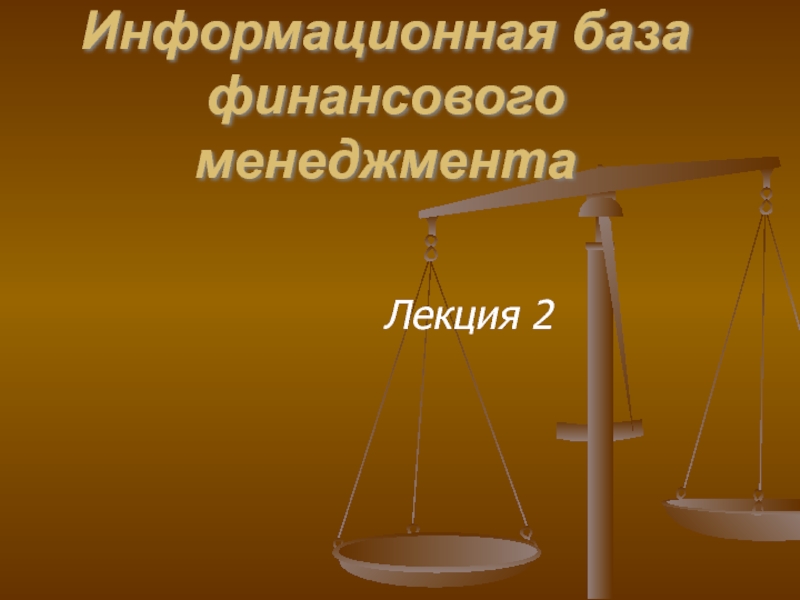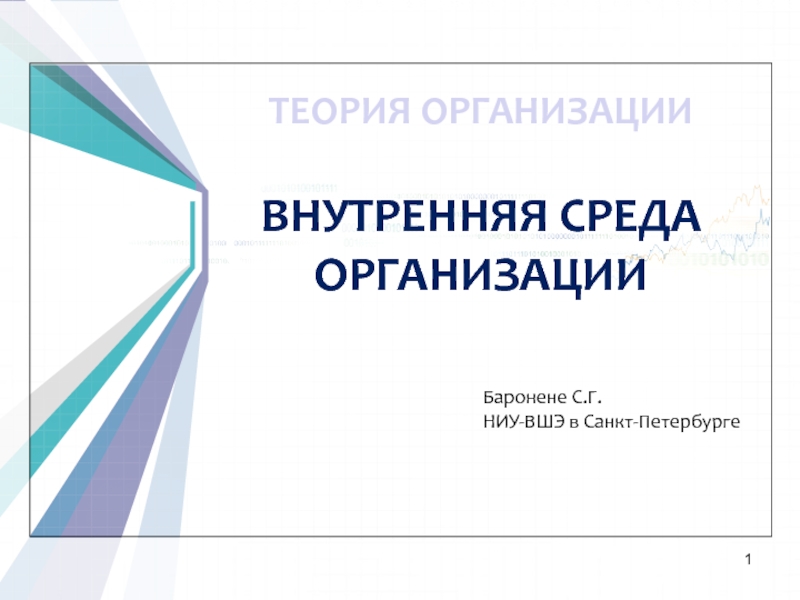- Главная
- Разное
- Дизайн
- Бизнес и предпринимательство
- Аналитика
- Образование
- Развлечения
- Красота и здоровье
- Финансы
- Государство
- Путешествия
- Спорт
- Недвижимость
- Армия
- Графика
- Культурология
- Еда и кулинария
- Лингвистика
- Английский язык
- Астрономия
- Алгебра
- Биология
- География
- Детские презентации
- Информатика
- История
- Литература
- Маркетинг
- Математика
- Медицина
- Менеджмент
- Музыка
- МХК
- Немецкий язык
- ОБЖ
- Обществознание
- Окружающий мир
- Педагогика
- Русский язык
- Технология
- Физика
- Философия
- Химия
- Шаблоны, картинки для презентаций
- Экология
- Экономика
- Юриспруденция
Introduction to Human Resource management презентация
Содержание
- 1. Introduction to Human Resource management
- 2. Explain the Scope of Human Resource Management
- 3. Look at the questions given below and
- 6. Explain the Scope of Human Resource Management
- 7. Human Resource Management (HRM) is an ‘art
- 8. HRM is all about people in organizations.
- 9. Explain the Scope of Human Resource Management
- 10. The process of defining HRM leads us
- 13. There are various reasons for organizations to
- 14. The following are the various reasons that
- 15. One of the factors behind organizations giving
- 16. Moreover, there is a need to align
- 17. The practice of HRM must be applied
- 18. Explain the Scope of Human Resource Management
- 19. Human resources are undoubtedly the key resources
- 20. The scope of HRM covers but is
- 21. The scope of HRM is extensive and
- 22. HRM in Personnel Management: HRM in Personnel
- 23. HRM in Personnel Management: HRM in Personnel
- 24. HRM in Employee Welfare HRM in Employee
- 25. HRM in Employee Welfare HRM in Employee
- 26. HRM in Industrial Relations HRM in Industrial
- 27. HRM in Industrial Relations HRM in Industrial
- 28. Another vital part of the HR planning
- 29. Q. Which of the following is NOT
- 30. Q. Which of the following is NOT
- 31. Q. Which of the following is NOT
- 32. Explain the Scope of Human Resource Management
- 33. Each organization works towards the realization of
- 34. The following are the various HR processes:
- 35. Human Resource Planning is generally considered as
- 36. Employee Remuneration and Benefits Administration is the
- 37. Performance Management helps the organization to train,
- 38. Employee relations include Labor Law and Relations,
- 39. Q. Which of the following is an
- 40. Q. Which of the following is an
- 41. Q. Which of the following is an
- 42. Explain the Scope of Human Resource Management
- 43. The various skills of HR professionals are
- 44. HR Skills: HR managers are required
- 45. Decision Making Skills: HR managers should
- 46. Technical Skills: These skills are specialized
- 47. Leadership Skills: HR managers need to
- 48. Business and Strategic Partner Employee Advocate Change
- 50. Personnel Management is essentially ‘workforce’ centered whereas
- 51. Personnel Management: Traditionally the term personnel
- 52. Human Resource Management: With the advent
- 53. There are a few key concepts involved
- 58. Training is a planned effort to facilitate
- 59. The following considerations need to be taken
- 60. Explain the Scope of Human Resource Management
- 61. Performance Management is the process of reviewing
- 62. Hence, Performance Management is all about the
- 63. Typically, the process of performance management starts
- 64. There are different rounds to the appraisal
- 65. In the first round, the people who
- 66. The second round consists of the ratings
- 67. In some organizations, this takes place in
- 68. It has been found that the performance
- 69. Explain the Scope of Human Resource Management
- 71. Hiring can take place in many ways
- 72. INTERVIEW Whatever is the hiring strategy deployed,
- 73. HIRED The term ‘fitment’ is often used
- 74. Explain the Scope of Human Resource Management
- 75. Any employee retention strategy would necessarily include
- 76. There are various components that make up
- 77. One of the most common retention strategies
- 78. Grievance redressal is the most critical and
- 79. Grievance redressal is the most critical and
- 80. Management theorists often emphasize the fact that
- 81. Explain the Scope of Human Resource Management
- 82. Human Resource Planning is the process including
- 84. Q. Which of the following is NOT
- 85. Q. Which of the following is NOT
- 86. Q. Which of the following is NOT
- 87. The following are the various kinds of
- 88. The following are the various kinds of
- 89. The following are the various kinds of
- 90. The following are the various kinds of
- 91. The following are the various kinds of
- 94. Look at the video given below to
- 95. Explain the Scope of Human Resource Management
- 96. MOTIVATION ABILITY
- 97. The degree to which a job has
- 98. The degree to which a job provides
- 99. Duties and responsibilities of every job in
- 100. The following are the job factors that result in successful performance of jobs by employees:
- 102. Explain the Scope of Human Resource Management
- 104. Some issues that need to be considered
- 105. The practice of hiring vendors has greatly
- 107. The organization need not provide health benefits
- 109. Let us now look at an example to understand the relevance of hiring contractors.
- 110. Globus Inc. is a leading software giant.
- 111. Globus has recently acquired two different projects,
- 112. Such independent contractors are chosen as per
- 113. Explain the Scope of Human Resource Management
- 114. Strategic Human Resource Management is the practice
- 115. With the advent of new economy industries
- 116. With the advent of today’s economy where
- 118. Hence, it is crucial that an organization
- 119. Explain the Scope of Human Resource Management
- 120. With the advent of globalization, organizations -
- 121. Even those organizations who consider themselves immune
- 122. The objectives of global HRM are as
- 123. The strategic role of Human Resources Management
- 124. There is a certain degree of centralization
- 125. Let us now look at an example to understand global human resource management.
- 126. Burger giant McDonald’s Corp. is one of
- 127. However, in markets across the world, McDonald’s
- 128. McDonald’s has always maintained a strong localization
- 129. The role of staffing is still the
- 130. An organization can choose to hire according
- 132. Q. In which of the following staffing
- 133. Q. In which of the following staffing
- 134. Q. In which of the following staffing
- 135. The following are some of the key issues faced during HRM:
- 136. Once a strategic decision has been established
- 137. Explain the Scope of Human Resource Management
- 138. One of the significant and emerging areas
- 139. Explain the Scope of Human Resource Management
- 140. Stay focused on the needs of the
- 141. Let us now practice all that you have learned about introduction to human resource management.
- 143. Keith Jones is a Human Resource Manager.
- 144. Let’s look at each in detail.
- 150. A F R S T Click each alphabet to learn more.
- 151. A F R S T Click each
- 152. A F R S T Click each
- 153. A F R S T Click each
- 154. A F R S T Click each
- 155. A F R S T Click each
Слайд 2Explain the Scope of Human Resource Management
Explain What is Human Resource
Define Human Resource Management
Explain Role of HRM in Performance Management
Describe the Processes in Human Resource Management
Explain the Skills of HR Professionals
Explain Human Resource Planning
Explain the Hiring Strategies followed by Organizations
Describe the Various Retention Strategies
Explain What is Strategic Human Resource Management
Explain How HRM Manages Employee’s Performance
Explain the Management of Contractors
List the Tips for Effective HRM
Explain What is Global Human Resource Management
Explain What is Human Resource Information System
Слайд 3Look at the questions given below and try answering them.
Whom do
Who gives you the job offer and discusses your pay package with you?
Who inducts you into the organization when you are a new employee?
Whom do you contact when you have any doubts regarding your pay package, perks, benefits, conveyance, leave management etc.?
Who helps you in the final exit formalities when you leave an organization?
Who takes care of your training and development needs?
Слайд 6Explain the Scope of Human Resource Management
Explain What is Human Resource
Define Human Resource Management
Explain Role of HRM in Performance Management
Describe the Processes in Human Resource Management
Explain the Skills of HR Professionals
Explain Human Resource Planning
Explain the Hiring Strategies followed by Organizations
Describe the Various Retention Strategies
Explain What is Strategic Human Resource Management
Explain How HRM Manages Employee’s Performance
Explain the Management of Contractors
List the Tips for Effective HRM
Explain What is Global Human Resource Management
Explain What is Human Resource Information System
Слайд 7Human Resource Management (HRM) is an ‘art and science’.
Thus, HRM
It is a science as well because of the precision and rigorous application of theory that is required.
Слайд 8HRM is all about people in organizations. No wonder that some
Слайд 9Explain the Scope of Human Resource Management
Explain What is Human Resource
Define Human Resource Management
Explain Role of HRM in Performance Management
Describe the Processes in Human Resource Management
Explain the Skills of HR Professionals
Explain Human Resource Planning
Explain the Hiring Strategies followed by Organizations
Describe the Various Retention Strategies
Explain What is Strategic Human Resource Management
Explain How HRM Manages Employee’s Performance
Explain the Management of Contractors
List the Tips for Effective HRM
Explain What is Global Human Resource Management
Explain What is Human Resource Information System
Слайд 10The process of defining HRM leads us to two different definitions.
Let us look at each definition.
Traditional Definition
Contemporary Definition
Слайд 13There are various reasons for organizations to have a HRM strategy
It is a fact that to thrive in the chaotic and turbulent business environment, firms need to constantly innovate and be ‘ahead of the curve’ in terms of business practices and strategies.
It is from this motivation to be at the top of the pack that HRM becomes a valuable tool for management to ensure success.
Слайд 14The following are the various reasons that organizations need to give
Let us look at each in detail.
Слайд 15One of the factors behind organizations giving a lot of attention
Слайд 16Moreover, there is a need to align organizational goals with that
Слайд 17The practice of HRM must be applied to the overall strategic
Слайд 18Explain the Scope of Human Resource Management
Explain What is Human Resource
Define Human Resource Management
Explain Role of HRM in Performance Management
Describe the Processes in Human Resource Management
Explain the Skills of HR Professionals
Explain Human Resource Planning
Explain the Hiring Strategies followed by Organizations
Describe the Various Retention Strategies
Explain What is Strategic Human Resource Management
Explain How HRM Manages Employee’s Performance
Explain the Management of Contractors
List the Tips for Effective HRM
Explain What is Global Human Resource Management
Explain What is Human Resource Information System
Слайд 19Human resources are undoubtedly the key resources in an organization, the
Human Resource Management is not just limited to manage and optimally exploit human intellect. It also focuses on managing physical and emotional capital of employees. Thus, the scope of HRM is widening with every passing day, considering the intricacies involved.
Слайд 20The scope of HRM covers but is not limited to the
Rewards and Recognitions
Hiring (Recruitment and Selection)
Grievance Handling
Payroll Management
Training and Development
Industrial Relations
HR planning
Legal Procedures
Therefore, HRM is about developing and managing harmonious relationships at workplace and striking a balance between organizational goals and individual goals.
Слайд 21The scope of HRM is extensive and far-reaching. Therefore, it is
Let’s look at each in detail.
HRM in
Personnel Management
HRM in
Employee Welfare
HRM in
Industrial Relations
Слайд 22HRM in Personnel Management:
HRM in Personnel Management is typically direct manpower
Слайд 23HRM in Personnel Management:
HRM in Personnel Management is typically direct manpower
The overall objective here is to ascertain individual growth, development and effectiveness which indirectly contribute to organizational development.
It also includes performance appraisal, developing new skills, disbursement of wages, incentives, allowances, travelling policies and procedures and other related courses of actions.
Слайд 24HRM in Employee Welfare
HRM in Employee Welfare is a particular aspect
Слайд 25HRM in Employee Welfare
HRM in Employee Welfare is a particular aspect
It also relates to supervision, employee counseling, establishing harmonious relationships with employees, education and training. Employee welfare is about determining employees’ real needs and fulfilling them with active participation of both management and employees. In addition to this, it also takes care of canteen facilities, crèches, rest and lunch rooms, housing, transport, medical assistance, education, health and safety, recreation facilities, etc.
Слайд 26HRM in Industrial Relations
HRM in Industrial Relations is a highly sensitive
Слайд 27HRM in Industrial Relations
HRM in Industrial Relations is a highly sensitive
It is the art and science of understanding the employment (union-management) relations, joint consultation, disciplinary procedures, solving problems with mutual efforts, understanding human behavior and maintaining work relations, collective bargaining and settlement of disputes.
The main aim is to safeguard the interest of employees by securing the highest level of understanding to the extent that does not leave a negative impact on organization. It is about establishing, growing and promoting industrial democracy to safeguard the interests of both employees and management.
Roll your mouse over the icon, to learn more.
Слайд 28Another vital part of the HR planning process is 'Succession Planning'.
Слайд 29Q. Which of the following is NOT a scope of HRM?
Click
Слайд 32Explain the Scope of Human Resource Management
Explain What is Human Resource
Define Human Resource Management
Explain Role of HRM in Performance Management
Describe the Processes in Human Resource Management
Explain the Skills of HR Professionals
Explain Human Resource Planning
Explain the Hiring Strategies followed by Organizations
Describe the Various Retention Strategies
Explain What is Strategic Human Resource Management
Explain How HRM Manages Employee’s Performance
Explain the Management of Contractors
List the Tips for Effective HRM
Explain What is Global Human Resource Management
Explain What is Human Resource Information System
Слайд 33Each organization works towards the realization of one vision.
The same
At the base of this strategy formulation lie various processes and the effectiveness of the strategy formulation lies in the meticulous design of these processes.
Слайд 34The following are the various HR processes:
The efficient designing of these
Let us look at each process in detail.
Слайд 35Human Resource Planning is generally considered as the process of people
Recruitment: It aims at attracting applicants that match a certain Job Criteria.
Selection: The next level of filtration. This aims at short listing candidates who are the closest match in terms qualifications, expertise and potential for a certain job.
Hiring: This involves deciding upon the final candidate who gets the job.
Training and Development: These processes work on an onboard employee for up gradation of his skills and abilities.
Слайд 36Employee Remuneration and Benefits Administration is the process that involves deciding
This process is very important because money is the prime motivator in any job. Performing employees seek raises, better salaries and bonuses.
Слайд 37Performance Management helps the organization to train, motivate and reward workers.
Nowadays, there is an automated Performance Management System (PMS) that gathers and provides all the information to help managers evaluate the performance of the employees and assess them accordingly on their training and development needs.
Слайд 38Employee relations include Labor Law and Relations, working environment, employee health
Слайд 39Q. Which of the following is an aspect of HRM which
Click on the radio button to select the correct answer!
Слайд 40Q. Which of the following is an aspect of HRM which
Click here to
continue!
Слайд 41Q. Which of the following is an aspect of HRM which
Click here to
continue!
Слайд 42Explain the Scope of Human Resource Management
Explain What is Human Resource
Define Human Resource Management
Explain Role of HRM in Performance Management
Describe the Processes in Human Resource Management
Explain the Skills of HR Professionals
Explain Human Resource Planning
Explain the Hiring Strategies followed by Organizations
Describe the Various Retention Strategies
Explain What is Strategic Human Resource Management
Explain How HRM Manages Employee’s Performance
Explain the Management of Contractors
List the Tips for Effective HRM
Explain What is Global Human Resource Management
Explain What is Human Resource Information System
Слайд 44HR Skills:
HR managers are required to know how people play a
Слайд 45Decision Making Skills:
HR managers should take a variety of decisions that
Слайд 46Technical Skills:
These skills are specialized skills. In HRM, professionals need knowledge
Слайд 47Leadership Skills:
HR managers need to play a leadership role with regard
Слайд 48Business and Strategic Partner
Employee Advocate
Change Champion
HR managers have to serve as
HR managers contribute to the development of the organization, realization of business plans and achievement of objectives.
HR managers have to be change agents, thus requiring them to acquire knowledge about and the ability to execute successful change strategies in the organization.
The following are some of the emerging HRM functions:
Roll your mouse over the icon, to learn more.
Слайд 50Personnel Management is essentially ‘workforce’ centered whereas Human Resource Management is
Let us understand the various differences between Personnel Management and Human Resource Management.
Personnel
Management
Human Resource Management
Слайд 51Personnel Management:
Traditionally the term personnel management was used to refer to
Слайд 52Human Resource Management:
With the advent of resource centric organizations in recent
Слайд 53There are a few key concepts involved in defining a job,
Let us look at each in detail.
Слайд 58Training is a planned effort to facilitate the learning of job-related
Development is the acquisition of knowledge, skills and behaviors that improve an employee’s ability to meet changes in job requirements.
Слайд 59The following considerations need to be taken into account when an
Focus on current job skills or future job skills
Individual orientation or Group orientation
Train few employees or Train all employees
Spontaneous, unplanned training or Systematic, planned training
Слайд 60Explain the Scope of Human Resource Management
Explain What is Human Resource
Define Human Resource Management
Explain Role of HRM in Performance Management
Describe the Processes in Human Resource Management
Explain the Skills of HR Professionals
Explain Human Resource Planning
Explain the Hiring Strategies followed by Organizations
Describe the Various Retention Strategies
Explain What is Strategic Human Resource Management
Explain How HRM Manages Employee’s Performance
Explain the Management of Contractors
List the Tips for Effective HRM
Explain What is Global Human Resource Management
Explain What is Human Resource Information System
Слайд 61Performance Management is the process of reviewing an employee’s performance during
Слайд 62Hence, Performance Management is all about the process of reviewing results,
Слайд 63Typically, the process of performance management starts a month or two
Слайд 65In the first round, the people who participate in an employee’s
Слайд 66The second round consists of the ratings from the manager and
Слайд 67In some organizations, this takes place in the third round where
Roll your mouse over the icon, to learn more.
Слайд 68It has been found that the performance management process as it
Слайд 69Explain the Scope of Human Resource Management
Explain What is Human Resource
Define Human Resource Management
Explain Role of HRM in Performance Management
Describe the Processes in Human Resource Management
Explain the Skills of HR Professionals
Explain Human Resource Planning
Explain the Hiring Strategies followed by Organizations
Describe the Various Retention Strategies
Explain What is Strategic Human Resource Management
Explain How HRM Manages Employee’s Performance
Explain the Management of Contractors
List the Tips for Effective HRM
Explain What is Global Human Resource Management
Explain What is Human Resource Information System
Слайд 71Hiring can take place in many ways and at many levels
Further, hiring people can be based on competitive exams (entry level) and the personal approach favored by HR managers for senior level positions.
The other way of hiring is through selective approach where the Staffing department entrusts the placement consultants with the task of identifying potential employees by picking ‘profiles’ from employee databases and the consultants own database as well.
Hiring can be for entry level positions or ‘lateral’ hiring where people with experience are taken on board.
In recent times, hiring for the entry level has taken on an entirely new dimension with the campus recruitment procedures that rely on getting the best talent available from the campuses.
The most niche hiring takes place at senior levels where the essence is discreetness and hence dedicated consultants or HR professionals approach people at higher levels on a one-one basis.
Hence, different hiring strategies are used for different levels in the organization.
Слайд 72INTERVIEW
Whatever is the hiring strategy deployed, the essential components of the
Слайд 73HIRED
The term ‘fitment’ is often used as HR jargon which is
Слайд 74Explain the Scope of Human Resource Management
Explain What is Human Resource
Define Human Resource Management
Explain Role of HRM in Performance Management
Describe the Processes in Human Resource Management
Explain the Skills of HR Professionals
Explain Human Resource Planning
Explain the Hiring Strategies followed by Organizations
Describe the Various Retention Strategies
Explain What is Strategic Human Resource Management
Explain How HRM Manages Employee’s Performance
Explain the Management of Contractors
List the Tips for Effective HRM
Explain What is Global Human Resource Management
Explain What is Human Resource Information System
Слайд 75Any employee retention strategy would necessarily include a plan for redressing
Слайд 76There are various components that make up a retention strategy such
Let us look at each element.
Слайд 77One of the most common retention strategies is ‘job rotation’. Job
Слайд 78Grievance redressal is the most critical and crucial component of the
Слайд 79Grievance redressal is the most critical and crucial component of the
Therefore, an effective retention strategy would focus on preventing as well as addressing grievances. Though it is not the contention that all grievances can be prevented, they can be ‘pre-empted’ by actively listening to the employees from time to time. This strategy of ‘listening’ to the employees would revolve around a concept of ‘one-one’ meetings between the employees and the manager and employees and the HR representative for the unit or division. The aim of such regular ‘one-one’ meetings would be to identify potential causes of friction among the employees and any issues they may have vis-à-vis their job and benefits. These issues need to be brought out into the open before they become contentious which may cause the employee to feel frustrated and quit the job. Hence, all efforts must be made to identify sources of employee dissatisfaction and ‘hygiene factors’ that must be taken care of for proper functioning of the employees.
Слайд 80Management theorists often emphasize the fact that one of the reasons
Слайд 81Explain the Scope of Human Resource Management
Explain What is Human Resource
Define Human Resource Management
Explain Role of HRM in Performance Management
Describe the Processes in Human Resource Management
Explain the Skills of HR Professionals
Explain Human Resource Planning
Explain the Hiring Strategies followed by Organizations
Describe the Various Retention Strategies
Explain What is Strategic Human Resource Management
Explain How HRM Manages Employee’s Performance
Explain the Management of Contractors
List the Tips for Effective HRM
Explain What is Global Human Resource Management
Explain What is Human Resource Information System
Слайд 82Human Resource Planning is the process including forecasting, developing and controlling
Forecasting future workforce requirements, either in terms of mathematical projections of economic trends and industrial development or through judgmental estimates based upon specific future plans of the company.
Making an inventory of the existing man power resources and analyzing the degree to which these resources are employed.
Anticipating workforce problems by projecting present resources into the future and comparing them with the forecast of requirements, to determine their adequacy, both quantitatively and qualitatively
Planning the necessary programs of recruitment, selection, training, deployment, utilization, transfer, promotion, development, motivation and compensation so that future workforce requirements will be met.
Слайд 84Q. Which of the following is NOT a part of 'Human
Click on the radio button to select the correct answer!
Слайд 85Q. Which of the following is NOT a part of 'Human
Click here to
continue!
Слайд 86Q. Which of the following is NOT a part of 'Human
Click here to
continue!
Слайд 87The following are the various kinds of training provided to employees:
Let
Слайд 88The following are the various kinds of training provided to employees:
Let
Induction Training is where the new recruit is introduced to the organization, condition of services, rules of behavior etc. In addition, it is also given to familiarize a new entrant with the job.
Слайд 89The following are the various kinds of training provided to employees:
Let
In Supervisory Training, supervisors are trained for technical skills, leadership qualities, for handling machines and men.
Слайд 90The following are the various kinds of training provided to employees:
Let
This type of training program helps in inducting new entrants to the operational requirements of the unit and in improving the skills of existing employees for promotions etc.
Слайд 91The following are the various kinds of training provided to employees:
This
Слайд 94Look at the video given below to understand the importance of
Click on the video to play it!
Слайд 95Explain the Scope of Human Resource Management
Explain What is Human Resource
Define Human Resource Management
Explain Role of HRM in Performance Management
Describe the Processes in Human Resource Management
Explain the Skills of HR Professionals
Explain Human Resource Planning
Explain the Hiring Strategies followed by Organizations
Describe the Various Retention Strategies
Explain What is Strategic Human Resource Management
Explain How HRM Manages Employee’s Performance
Explain the Management of Contractors
List the Tips for Effective HRM
Explain What is Global Human Resource Management
Explain What is Human Resource Information System
Слайд 97The degree to which a job has an impact on the
The degree to which a job involves a number of skills in carrying it out
The degree to which a job requires completion of a ‘whole’ and ‘identifiable’ piece of work
Work is often seen as a means to gratify the inner desires of actualization and satisfaction. Job Enrichment (JE) is an attempt in this direction. The characteristics identified as constituting Job Enrichment are:
Слайд 98The degree to which a job provides freedom, independence and discretion
in scheduling and determining the work
The degree to which the job itself provides direct information of how effective the performance is
The degree to which the employee receives clear feedback from supervisors and co-workers
The degree to which a work requires working closely with other people
Слайд 99Duties and responsibilities of every job in the organization
Skills possessed by
Identification of training needs
Future human resource needs of the organization
Current productivity of human resources
HRM requires large amounts of detailed information and much of the efforts of human resource professionals are devoted to obtaining this information. This information includes the following:
Слайд 100The following are the job factors that result in successful performance
Слайд 102Explain the Scope of Human Resource Management
Explain What is Human Resource
Define Human Resource Management
Explain Role of HRM in Performance Management
Describe the Processes in Human Resource Management
Explain the Skills of HR Professionals
Explain Human Resource Planning
Explain the Hiring Strategies followed by Organizations
Describe the Various Retention Strategies
Explain What is Strategic Human Resource Management
Explain How HRM Manages Employee’s Performance
Explain the Management of Contractors
List the Tips for Effective HRM
Explain What is Global Human Resource Management
Explain What is Human Resource Information System
Слайд 104Some issues that need to be considered before hiring contractors pertain
Слайд 105The practice of hiring vendors has greatly increased and hence there
In this way, disputes over responsibility and accountability can be amicably resolved if the contracts are worded in such a way that there is little room for ambiguity.
Слайд 107The organization need not provide health benefits and pension benefits to
On completion of the project, the contractors can be reverted to their parent organization or the vendor or relieved in case of independent contractors.
There are various benefits of using contractors such as follows:
Less overheads to filling a temporary demand that does not need hiring permanent employees
The organization hiring the contractor is not burdened with excess staff once the project is completed
Слайд 110Globus Inc. is a leading software giant.
It handles several projects in
The Human Resource department has noticed that majority of its projects are about two to three months long.
Also, they receive projects which require resources of different skills from one project to another.
Слайд 111Globus has recently acquired two different projects, one for developing a
How can the HR cater to the varying needs of different projects while keeping the recruitment and overhead costs low?
Let us see how the HR department handles such staffing pressures.
The HR department has used a policy of hiring independent contractors to fulfill such short term projects.
Слайд 112Such independent contractors are chosen as per the skill sets required
Also, when the project is completed, the contract with the contractor is terminated.
By using contractors instead of full-time employees, the HR is able to cater to the requirement of different skilled resources for each project.
The cost of recruitment and overhead costs such as, conveyance, perks, PF, Gratuity etc. are saved by using contractors to complete the projects.
Слайд 113Explain the Scope of Human Resource Management
Explain What is Human Resource
Define Human Resource Management
Explain Role of HRM in Performance Management
Describe the Processes in Human Resource Management
Explain the Skills of HR Professionals
Explain Human Resource Planning
Explain the Hiring Strategies followed by Organizations
Describe the Various Retention Strategies
Explain What is Strategic Human Resource Management
Explain How HRM Manages Employee’s Performance
Explain the Management of Contractors
List the Tips for Effective HRM
Explain What is Global Human Resource Management
Explain What is Human Resource Information System
Слайд 114Strategic Human Resource Management is the practice of aligning business strategy
The aim of Strategic Human Resource Management (SHRM) is to ensure that HR strategy is not a means but an end in itself as far as business objectives are concerned.
The idea behind SHRM is that companies must ‘fit’ their HR strategy within the framework of overall business objectives and hence ensure that there is alignment between the HR practices and the strategic objectives of the organization.
Слайд 115With the advent of new economy industries like IT and the
What this means is that the practice of HRM is being viewed as something that promotes the business objectives of the firms and not merely another factor in the way the firm is managed.
The fact that organizations derive their strategy from employees instead of imposing strategy upon them is the essence of SHRM.
Слайд 116With the advent of today’s economy where services account for a
Слайд 118Hence, it is crucial that an organization should leverage upon the
This translates into a dedicated HR department and people managers in every group dealing exclusively with employee issues as opposed to treating this as a line management function.
Слайд 119Explain the Scope of Human Resource Management
Explain What is Human Resource
Define Human Resource Management
Explain Role of HRM in Performance Management
Describe the Processes in Human Resource Management
Explain the Skills of HR Professionals
Explain Human Resource Planning
Explain the Hiring Strategies followed by Organizations
Describe the Various Retention Strategies
Explain What is Strategic Human Resource Management
Explain How HRM Manages Employee’s Performance
Explain the Management of Contractors
List the Tips for Effective HRM
Explain What is Global Human Resource Management
Explain What is Human Resource Information System
Слайд 120With the advent of globalization, organizations - big or small have
Слайд 121Even those organizations who consider themselves immune to transactions across geographical
The preliminary function of ‘Global Human Resource Management’ is that the organization carries a local appeal in the host country despite maintaining an international feel. To exemplify, any multinational / international company would not like to be called as local, however, the same wants to have a domestic touch for the people in the host country and therein lays the challenge.
Слайд 122The objectives of global HRM are as follows:
Create a local appeal
Generating awareness of cross cultural sensitivities among managers globally and hiring of staff across geographic boundaries.
Training upon cultures and sensitivities of the host country.
Слайд 123The strategic role of Human Resources Management in a global scenario
Слайд 124There is a certain degree of centralization of operating decision making.
A high degree of coordination is required in wake of the cross cultural sensitivities. In addition, there is also a high need for cultural control.
Many integrating mechanisms operate simultaneously.
Слайд 126Burger giant McDonald’s Corp. is one of the largest restaurant chains
It has a widespread presence across the globe including India.
McDonald’s is well-known for its hamburgers made with ground beef, French fries, and milk shakes.
Слайд 127However, in markets across the world, McDonald’s respects local cultures and
So, McDonald’s has varied its menu to accommodate the tastes and cultural sensibilities of residents in countries around the world.
In India, McDonald’s restaurants have dropped beef and pork from their menu in keeping with the sentiments and religious practices of Hindus and Muslims.
Also, the kitchens of McDonald’s in India are divided into separate sections for cooking vegetarian and non-vegetarian food.
Слайд 128McDonald’s has always maintained a strong localization policy while at the
McDonald’s has also embraced a policy of hiring local talent at various levels to promote localization of its presence.
The large success of McDonald’s is attributed to its ability to cater to local tastes without losing its brand image.
In India, some of its American classics have been introduced in numerous vegetarian versions like the McVeggie burger and McSpicy Paneer, as well as chicken offerings.
Слайд 129The role of staffing is still the same here, that is,
A key challenge faced in hiring is deciding upon the top management or key positions. Whether to choose a local from the host country for a key position or deploy one from the headquarters assumes importance; and finally whether or not to have a uniform hiring policy globally remains a big challenge.
Слайд 130An organization can choose to hire according to any of the
Roll your mouse over the icon, to learn more.
Слайд 132Q. In which of the following staffing policies do the host
Click on the radio button to select the correct answer!
Слайд 133Q. In which of the following staffing policies do the host
Click here to
continue!
Слайд 134Q. In which of the following staffing policies do the host
Click here to
continue!
Слайд 136Once a strategic decision has been established and HRM’s effectiveness evaluated,
Process Redesign, Information Technology
Transactional (65-75%)
Benefits Administration & Employee Services
Record Keeping
Traditional (15-30%)
Recruitment, Selection, Training & Employee Relation
Performance Management and Compensation
Transformational (5-15%)
Strategic Redirection and Renewal
Cultural Change
Management Development
Outsourcing
Слайд 137Explain the Scope of Human Resource Management
Explain What is Human Resource
Define Human Resource Management
Explain Role of HRM in Performance Management
Describe the Processes in Human Resource Management
Explain the Skills of HR Professionals
Explain Human Resource Planning
Explain the Hiring Strategies followed by Organizations
Describe the Various Retention Strategies
Explain What is Strategic Human Resource Management
Explain How HRM Manages Employee’s Performance
Explain the Management of Contractors
List the Tips for Effective HRM
Explain What is Global Human Resource Management
Explain What is Human Resource Information System
Слайд 138One of the significant and emerging areas in Human Resource Management
Слайд 139Explain the Scope of Human Resource Management
Explain What is Human Resource
Define Human Resource Management
Explain Role of HRM in Performance Management
Describe the Processes in Human Resource Management
Explain the Skills of HR Professionals
Explain Human Resource Planning
Explain the Hiring Strategies followed by Organizations
Describe the Various Retention Strategies
Explain What is Strategic Human Resource Management
Explain How HRM Manages Employee’s Performance
Explain the Management of Contractors
List the Tips for Effective HRM
Explain What is Global Human Resource Management
Explain What is Human Resource Information System
Слайд 140Stay focused on the needs of the business
Top leader sponsorship
Comply with company strategy
Correspondence with stakeholder
Employees and top management’s involvement in company’s development
Change management and communication strategy
Address issues and issues relating to resistance to change
Слайд 141Let us now practice all that you have learned about introduction
Слайд 143Keith Jones is a Human Resource Manager. He has noticed that
What do you think Keith should do to help David’s team members?
How can Keith help David get close with his team and resolve the issue?
Слайд 151A
F
R
S
T
Click each alphabet to learn more.
Autonomy - Autonomy is the capacity
Administration - Administration is a method of tending to or managing the affairs of some group of people, especially the group's business affairs
Слайд 152A
F
R
S
T
Click each alphabet to learn more.
Feedback - Feedback is the critical
Formulation - Formulation is inventing or contriving an idea or explanation and formulating it mentally
Слайд 153A
F
R
S
T
Click each alphabet to learn more.
Remuneration - Remuneration is the money
Resource - Resource is a source of aid or support that may be drawn upon when needed
Слайд 154A
F
R
S
T
Click each alphabet to learn more.
Skill - Skill is an ability
Staffing - Staffing means provide with staff
Слайд 155A
F
R
S
T
Click each alphabet to learn more.
Training - Training is an activity
Traditional - Traditional means pertaining to time-honored orthodox doctrines
